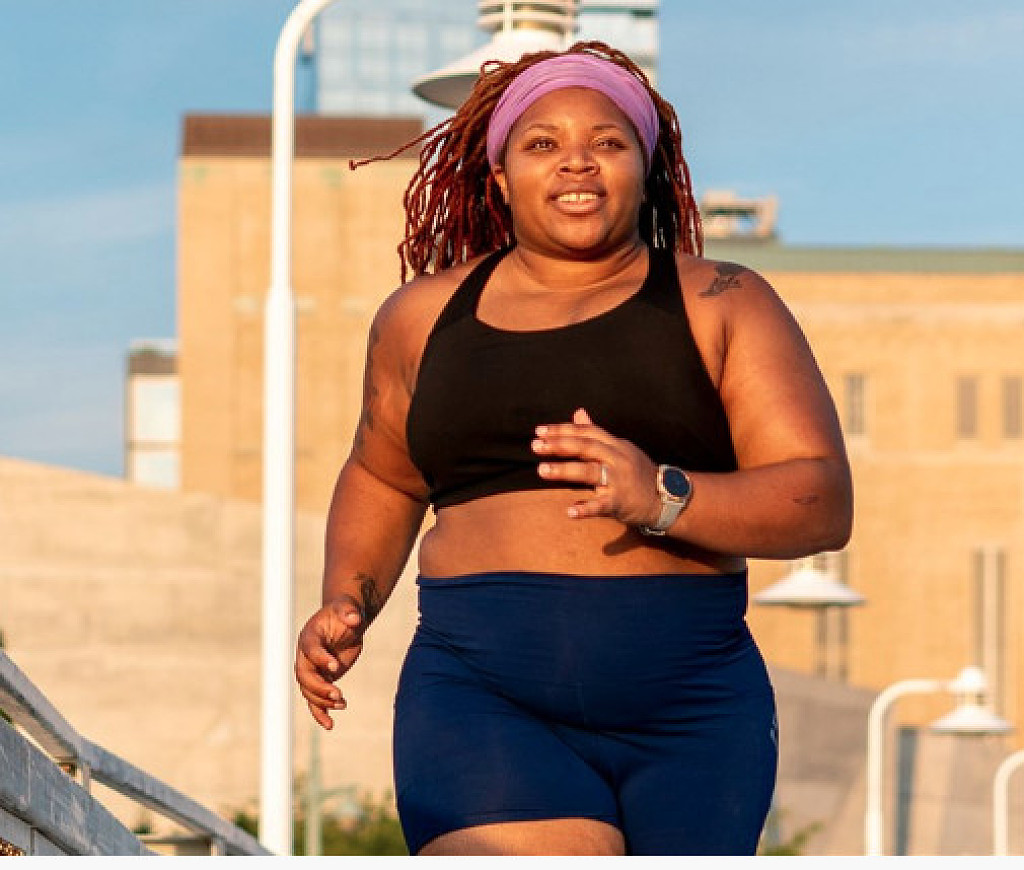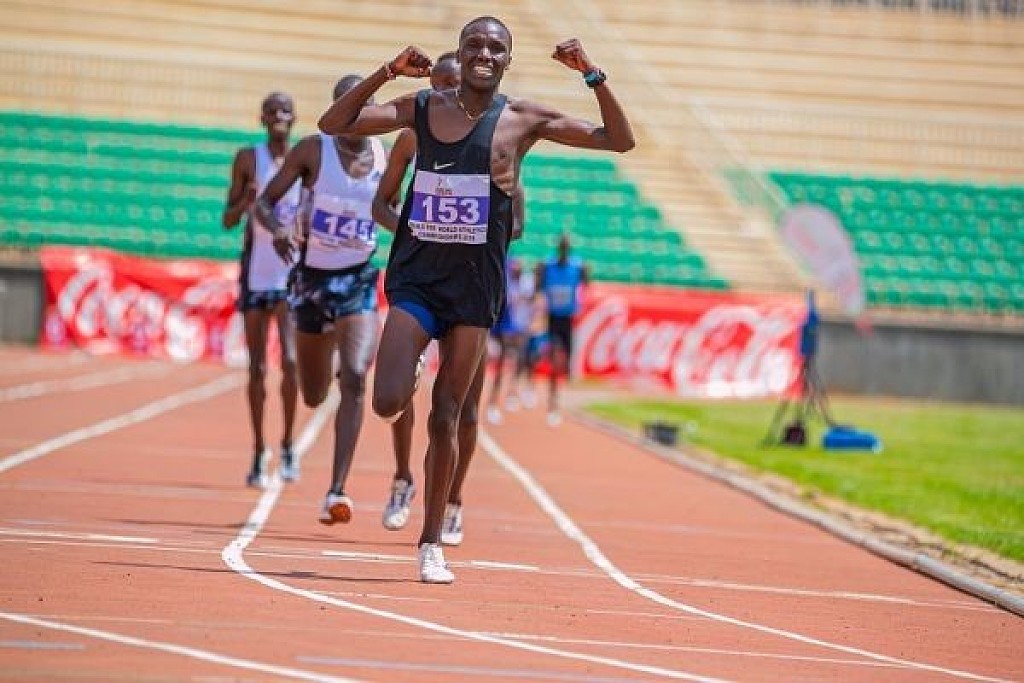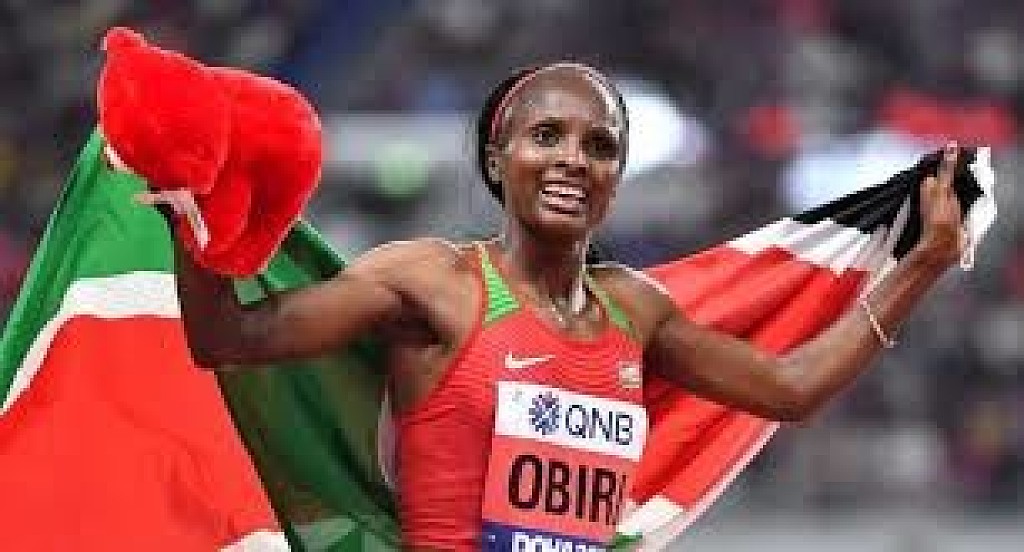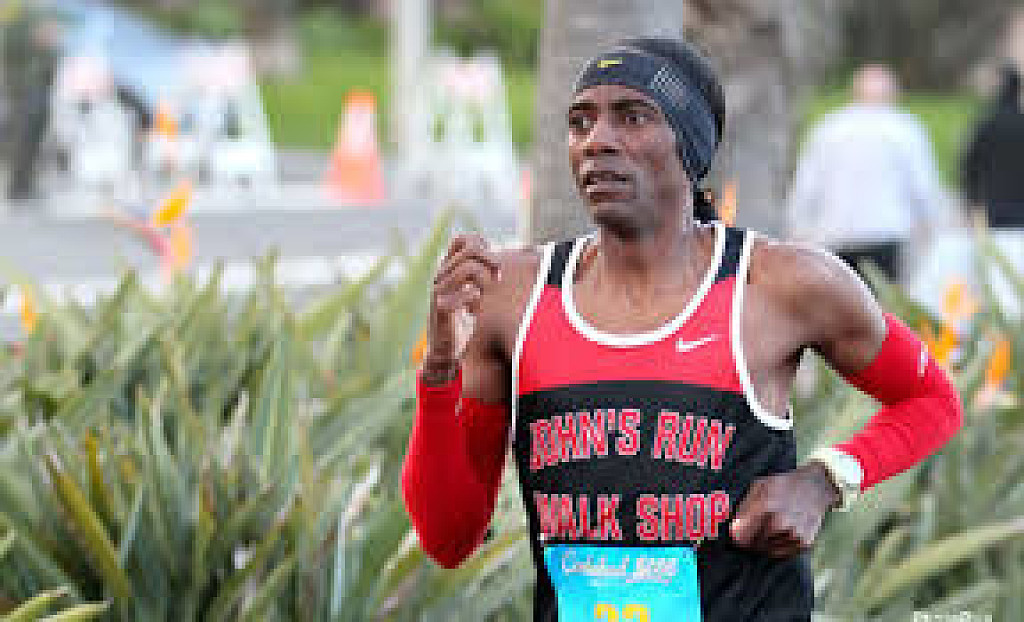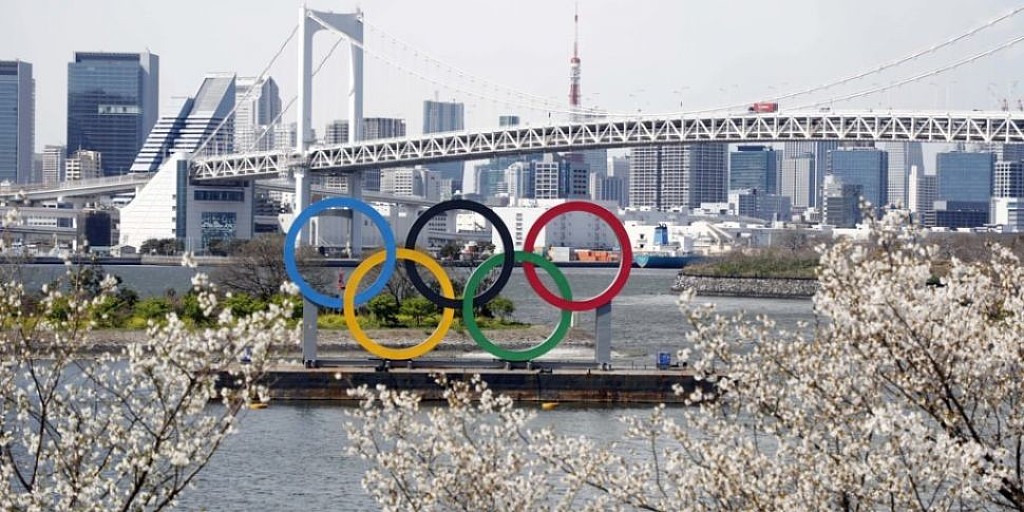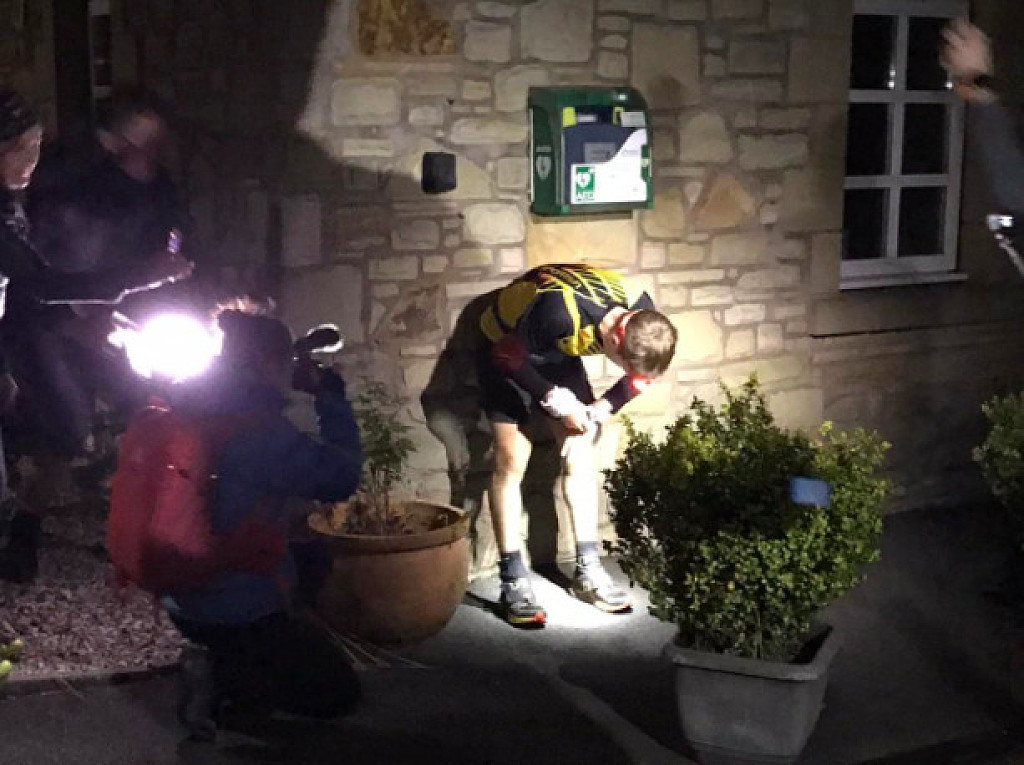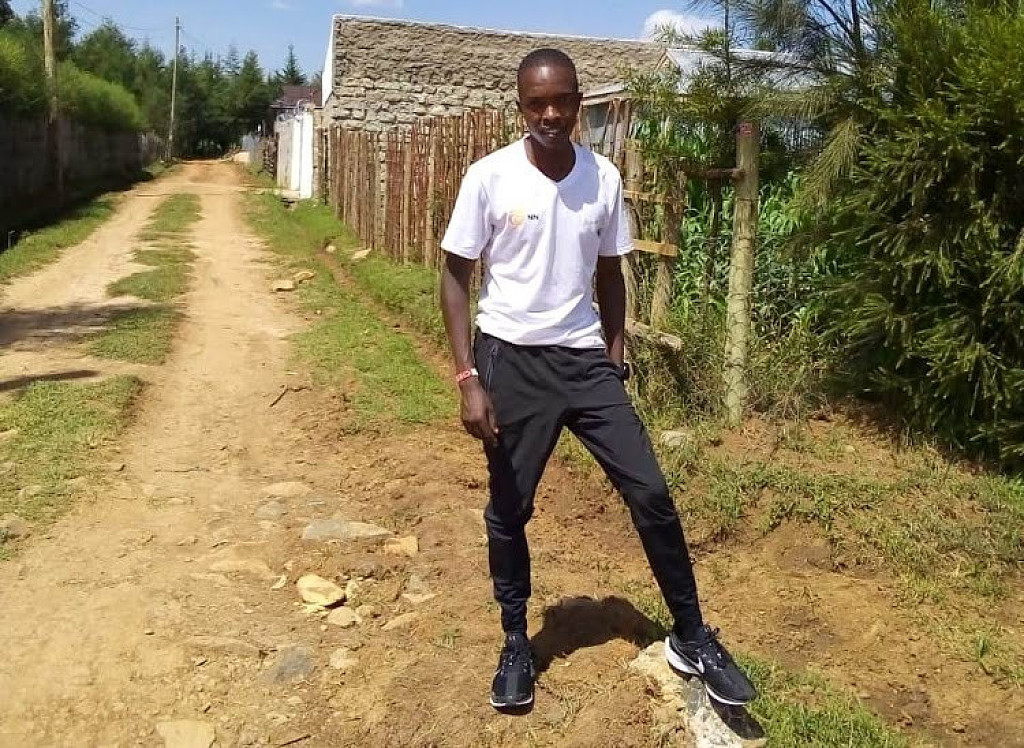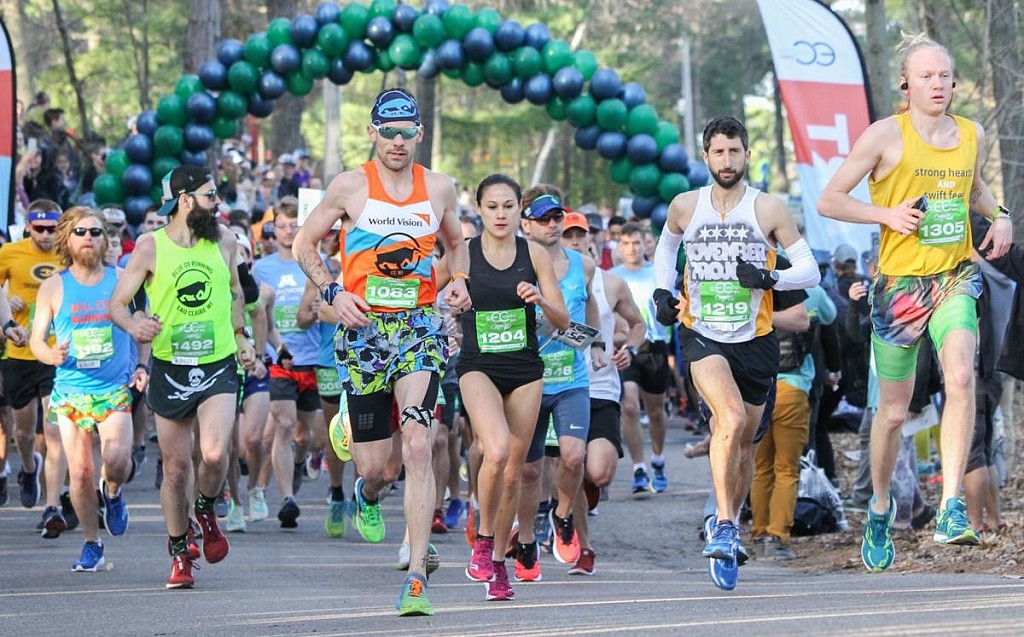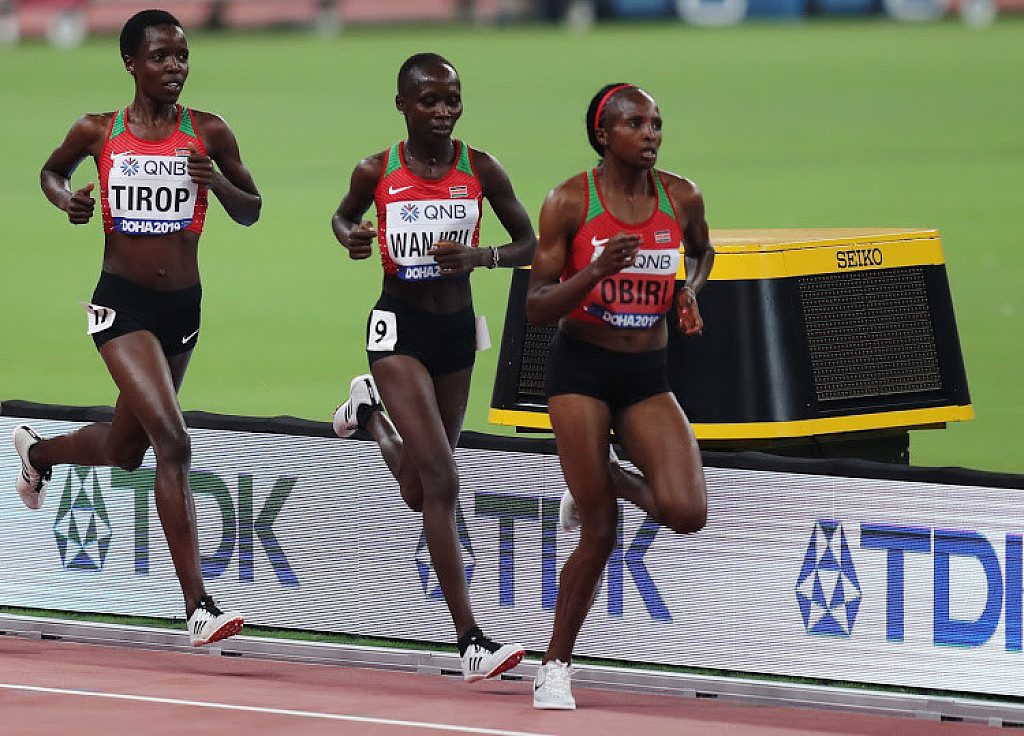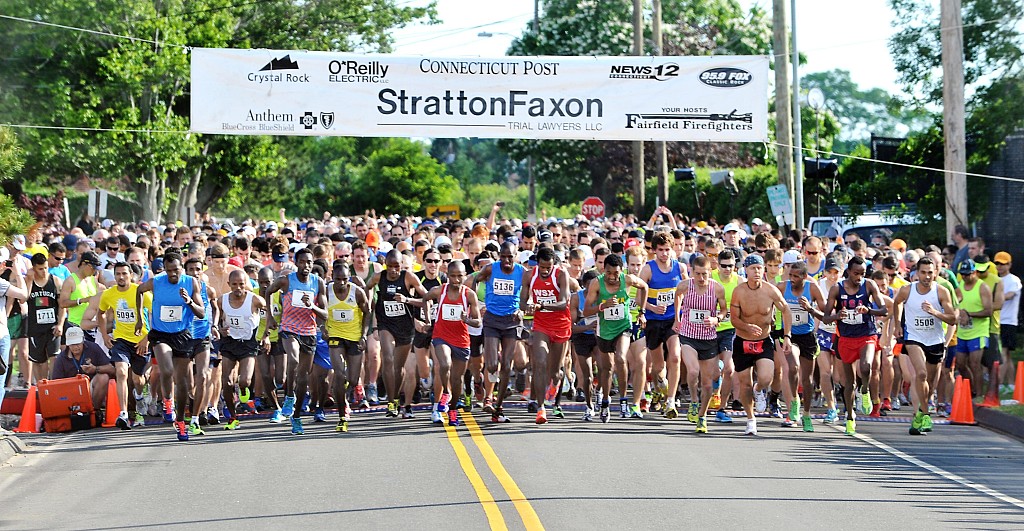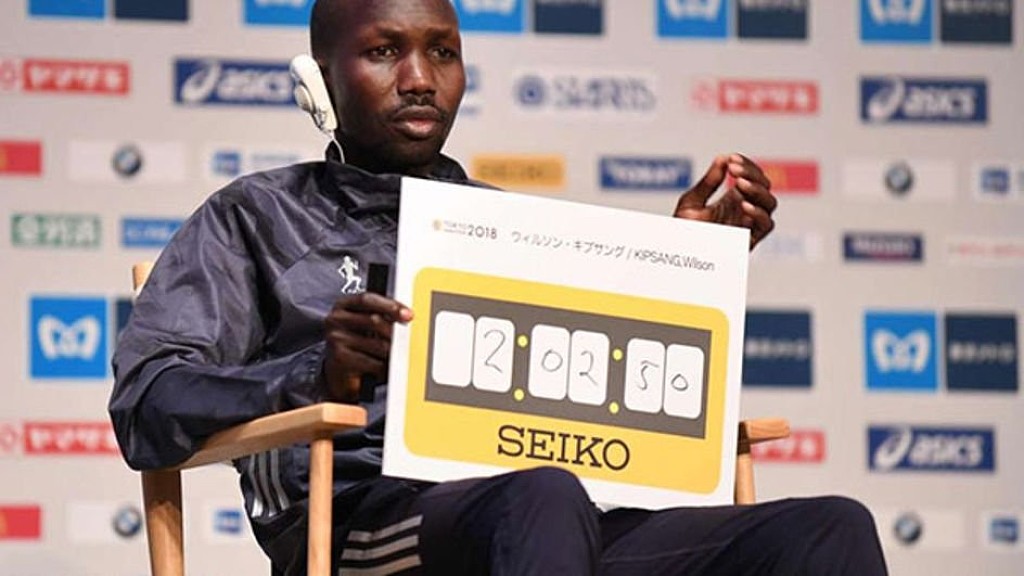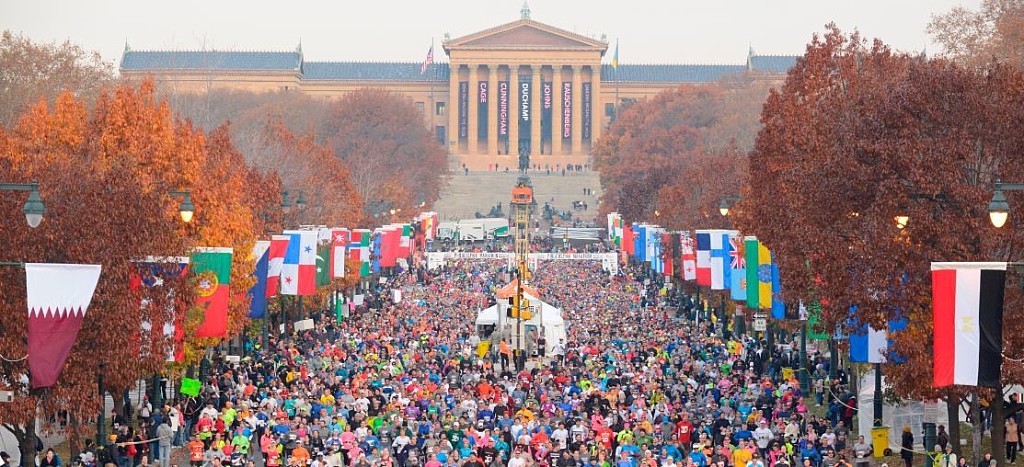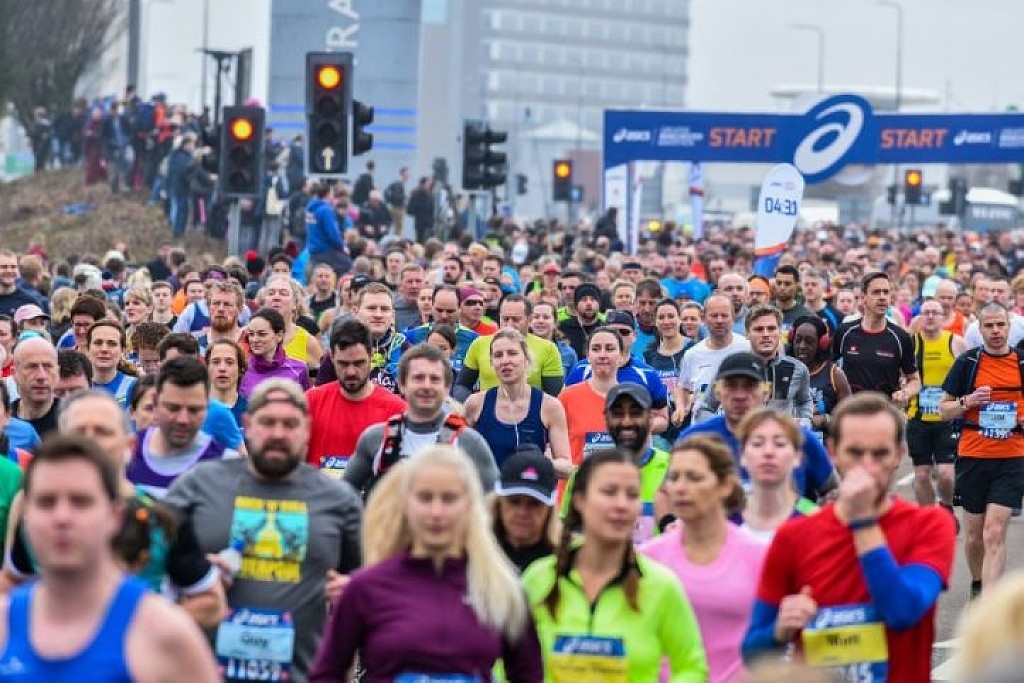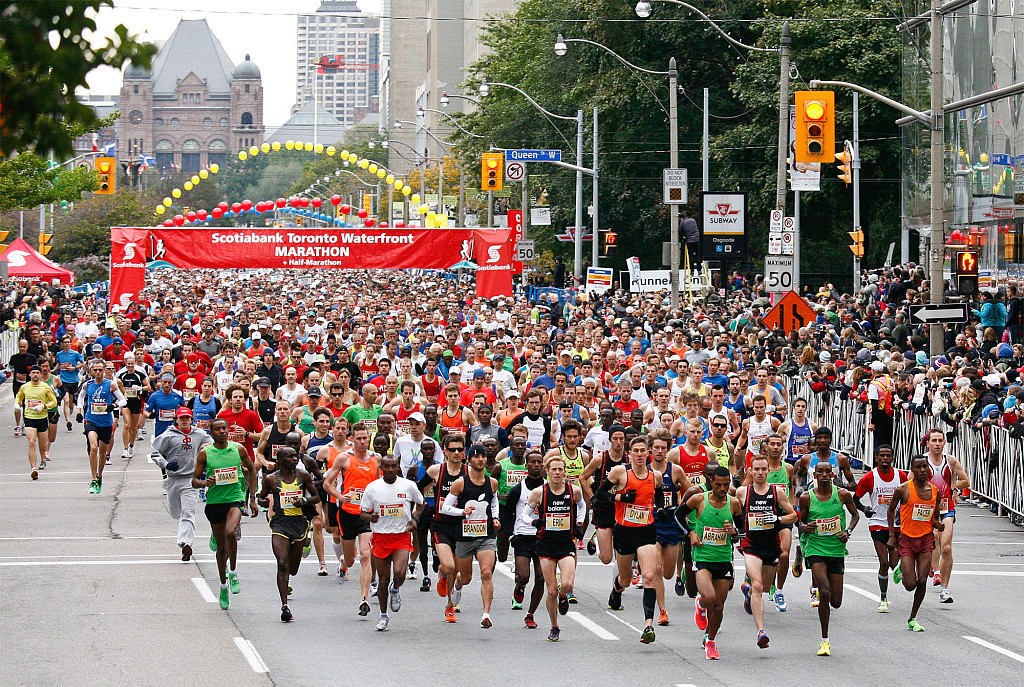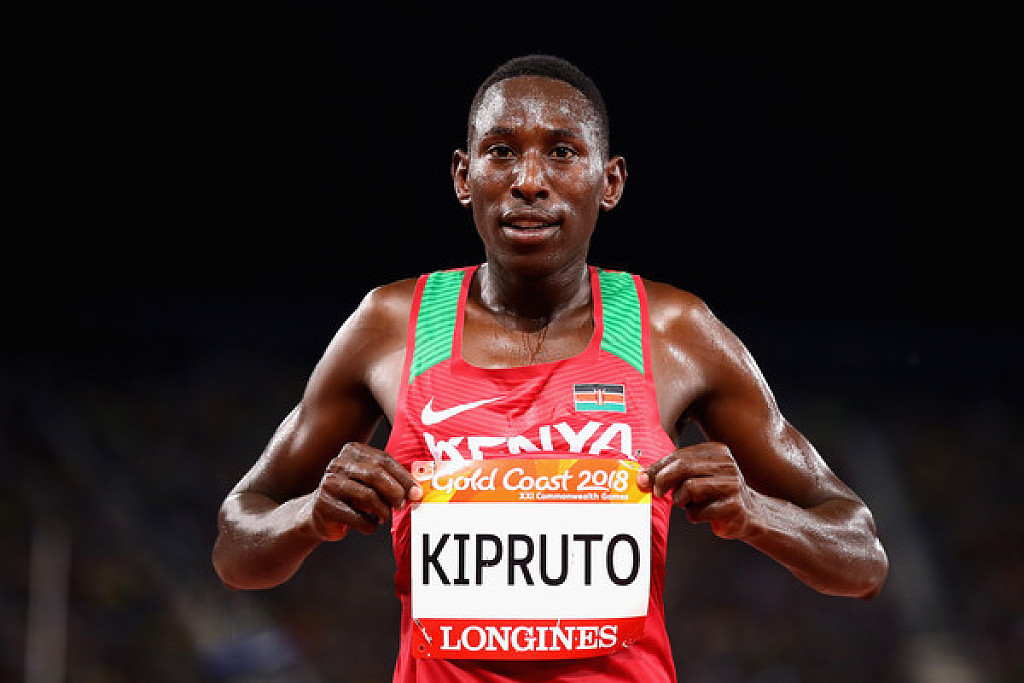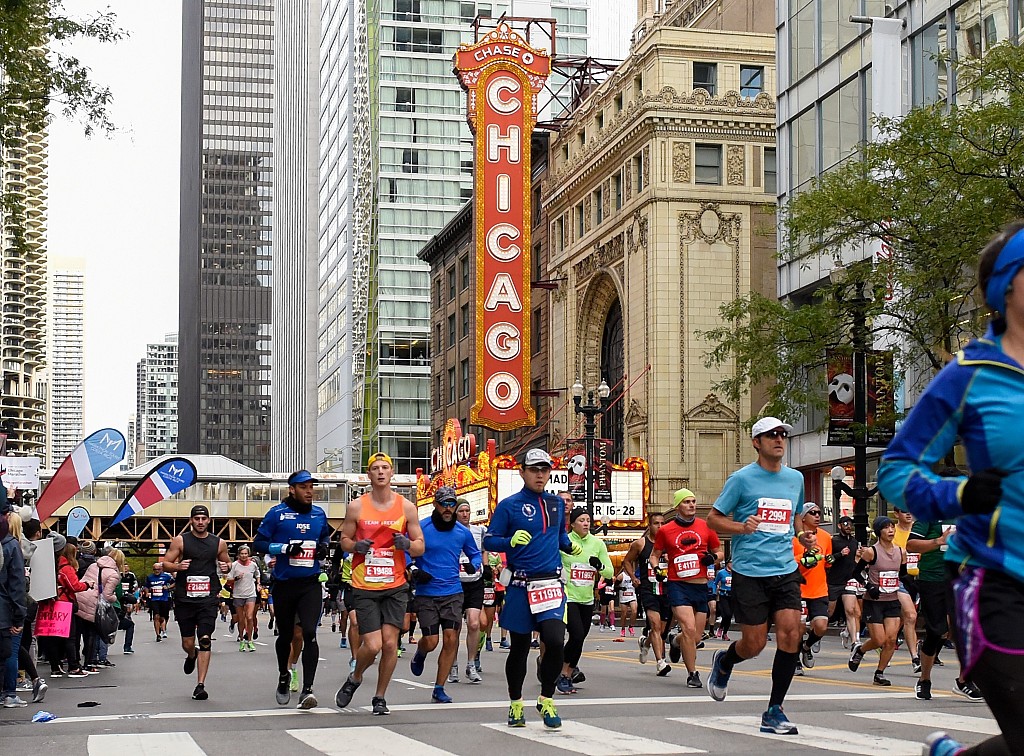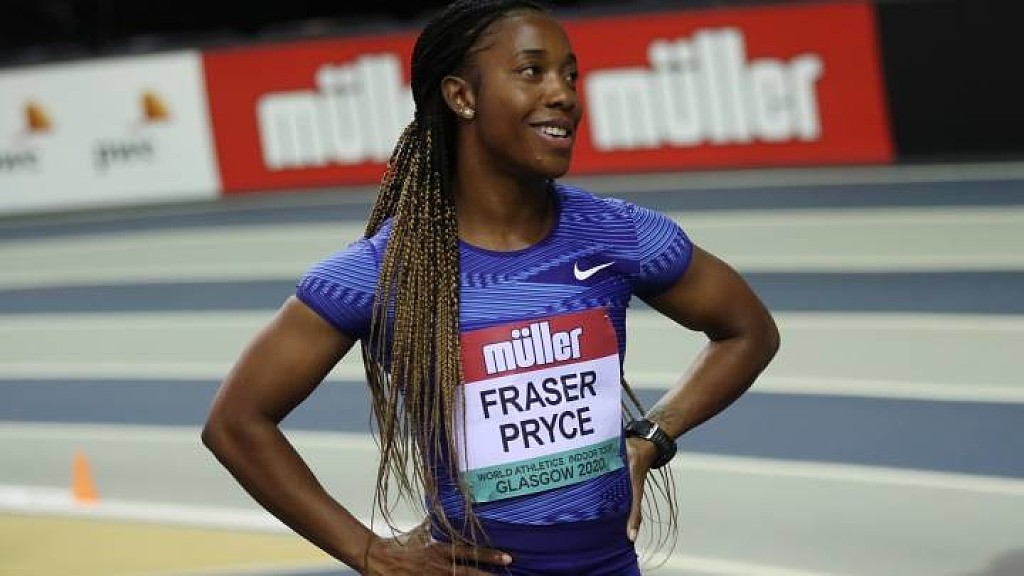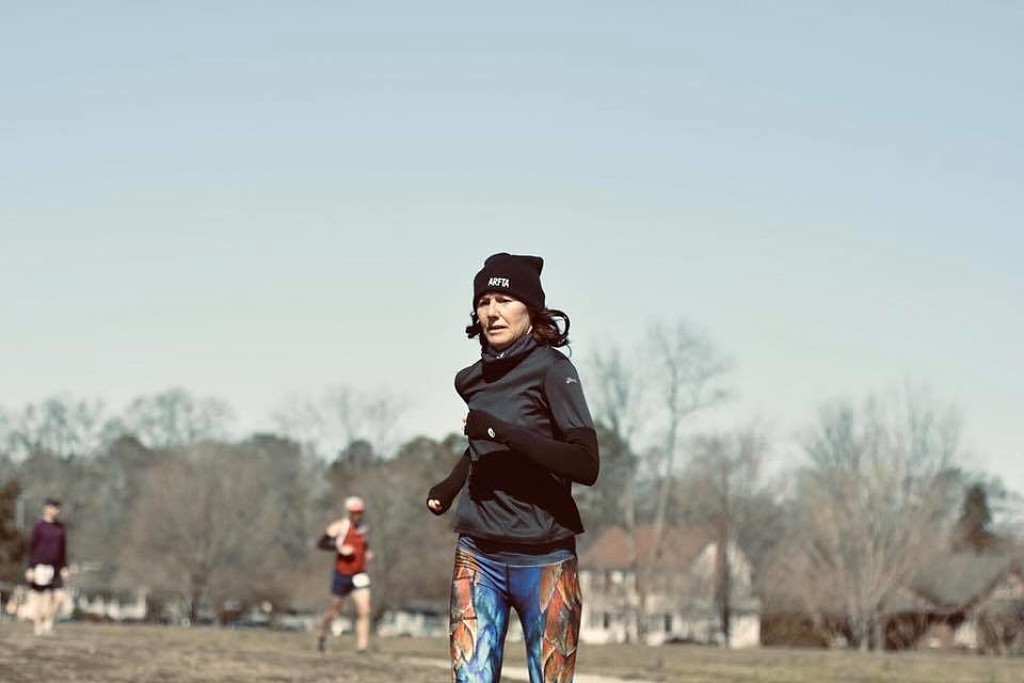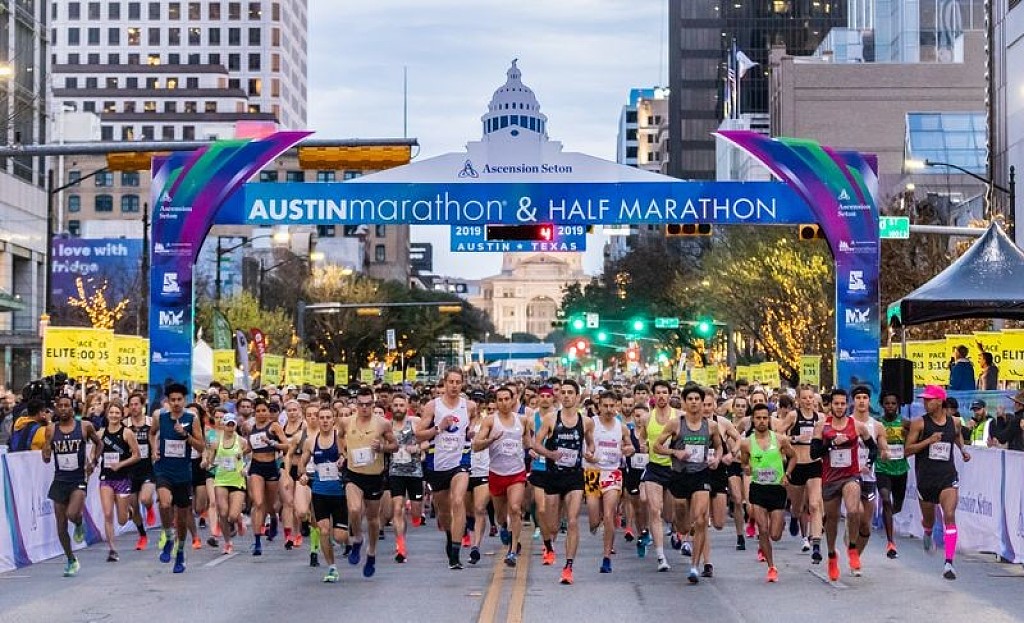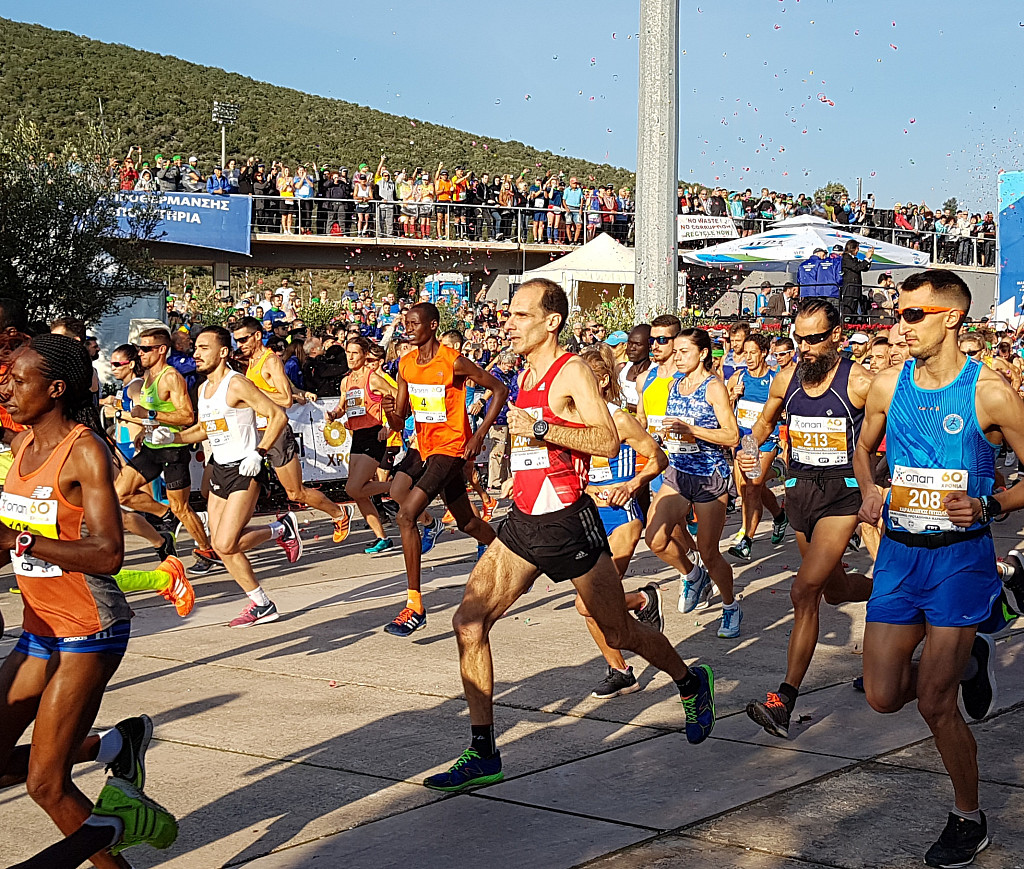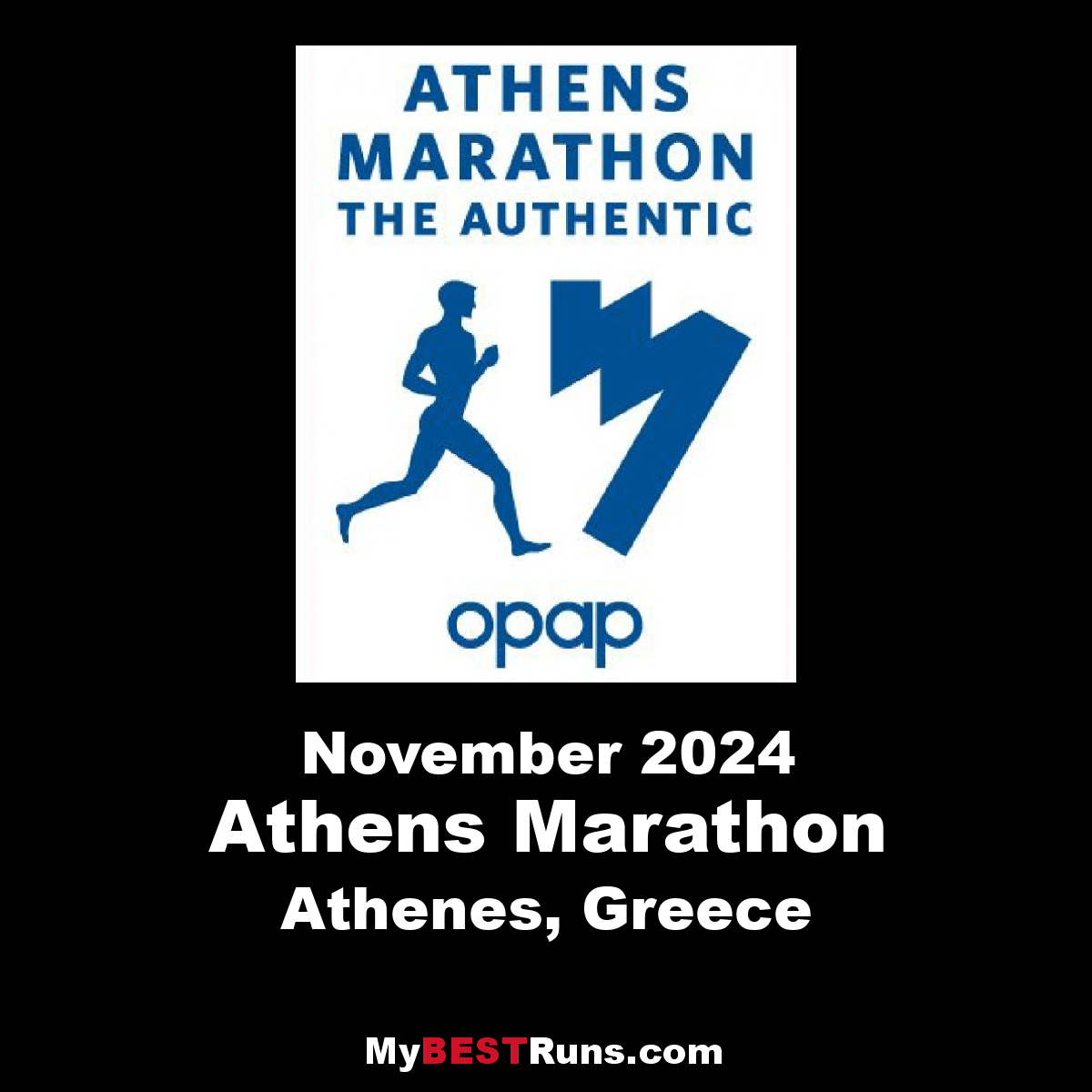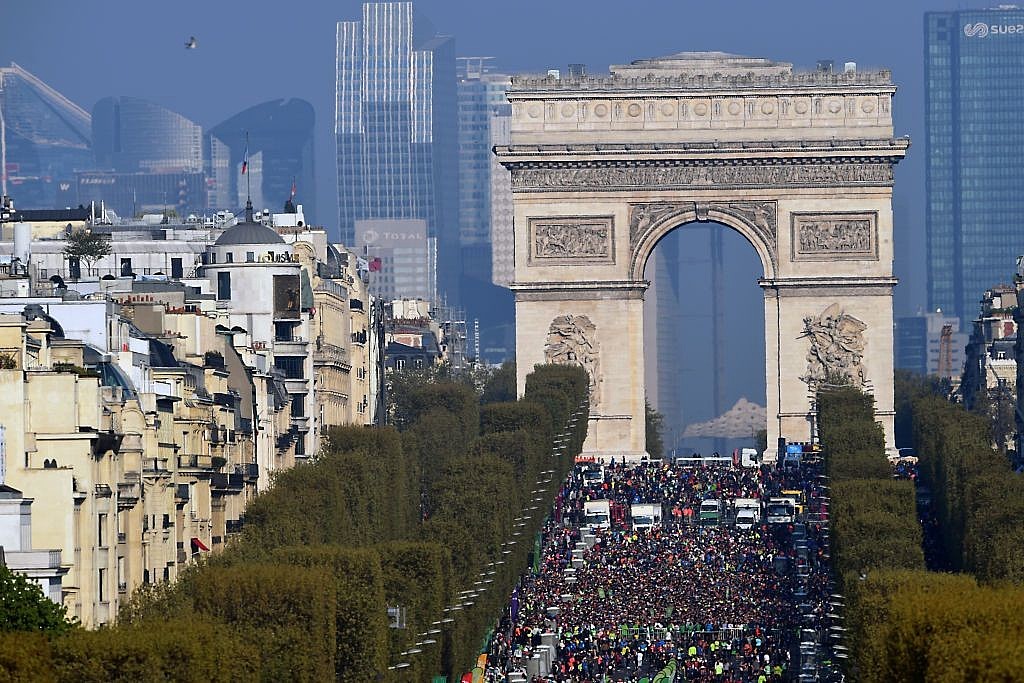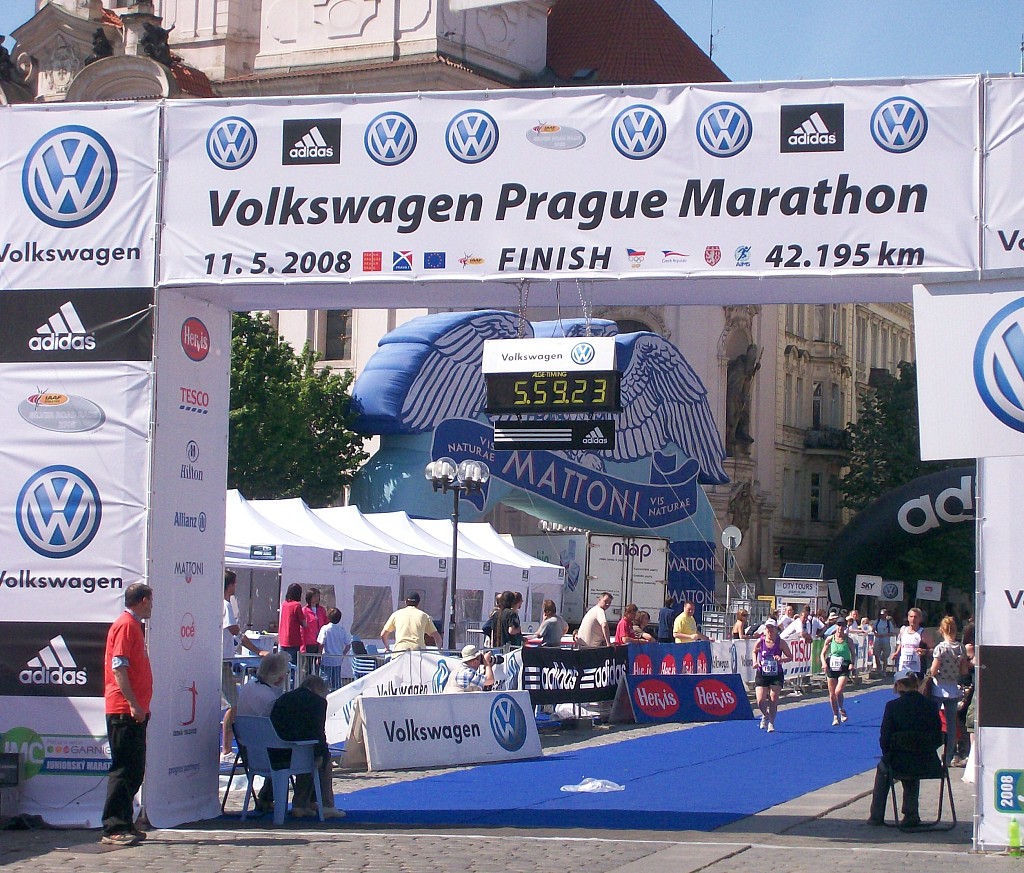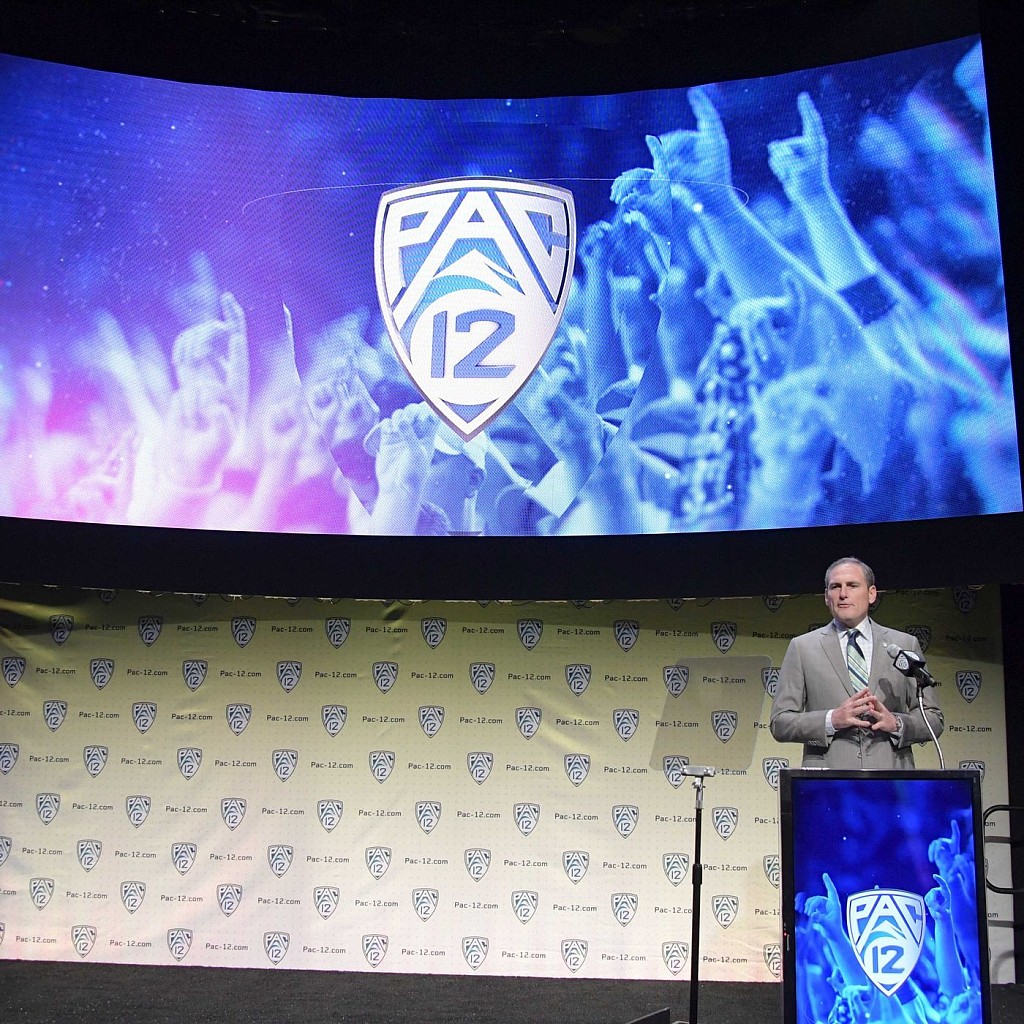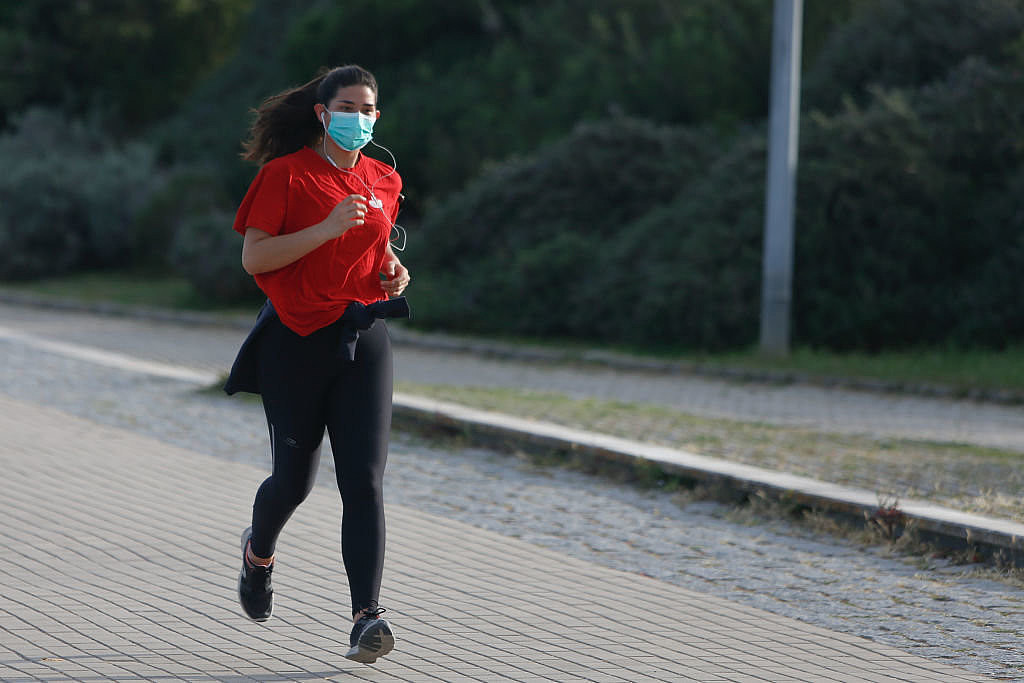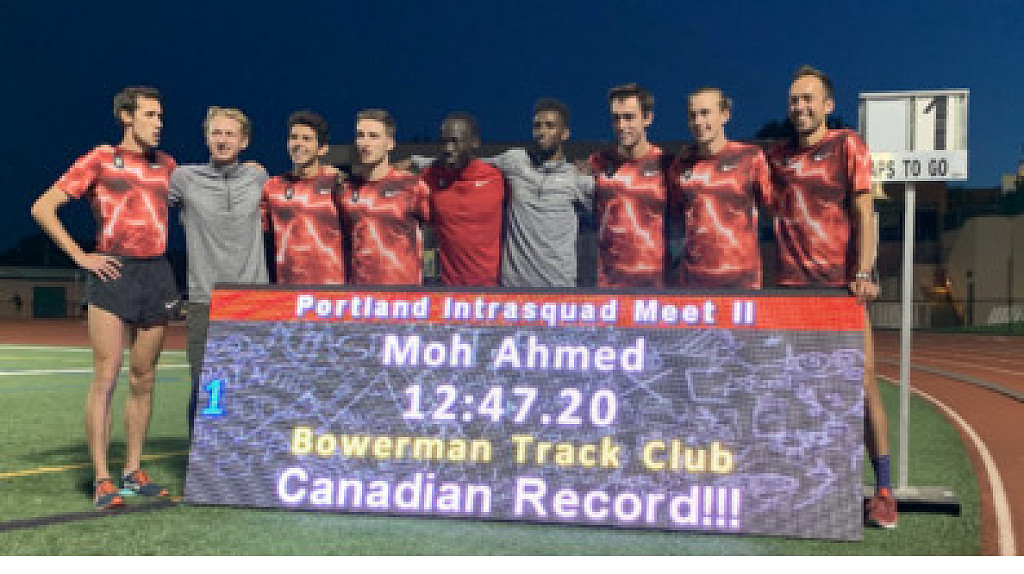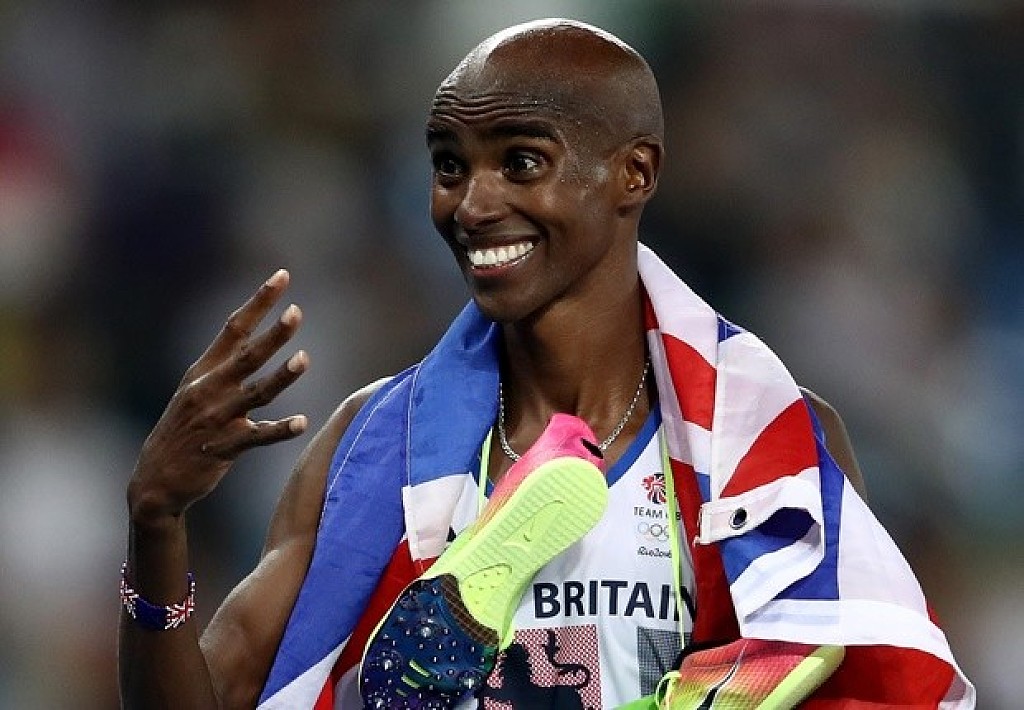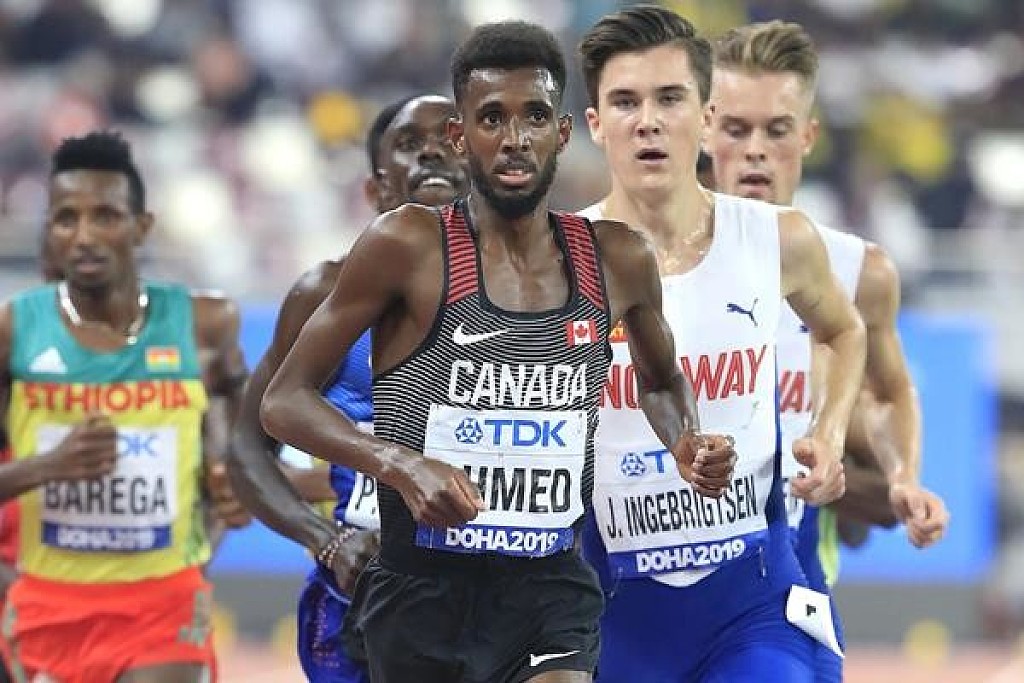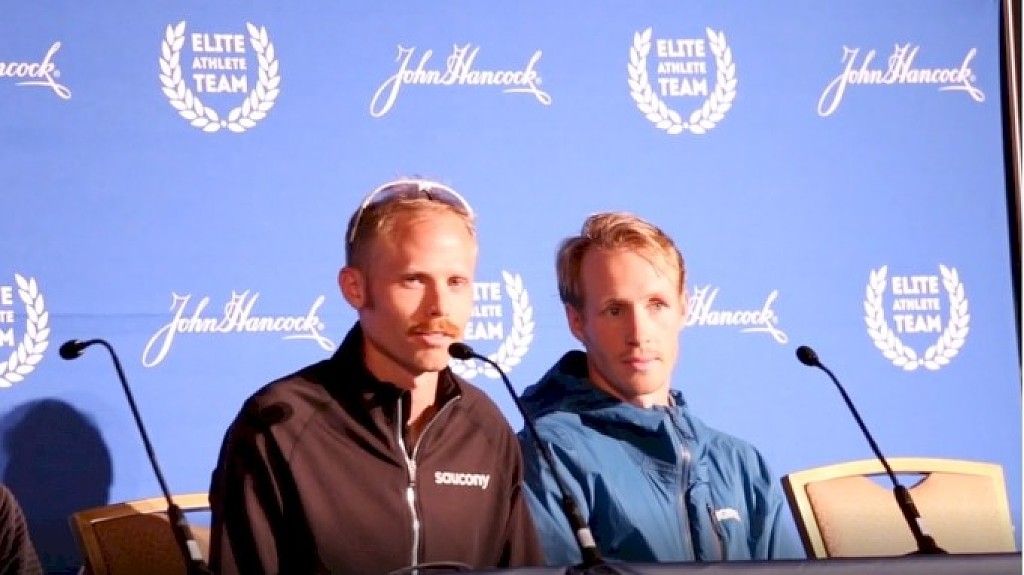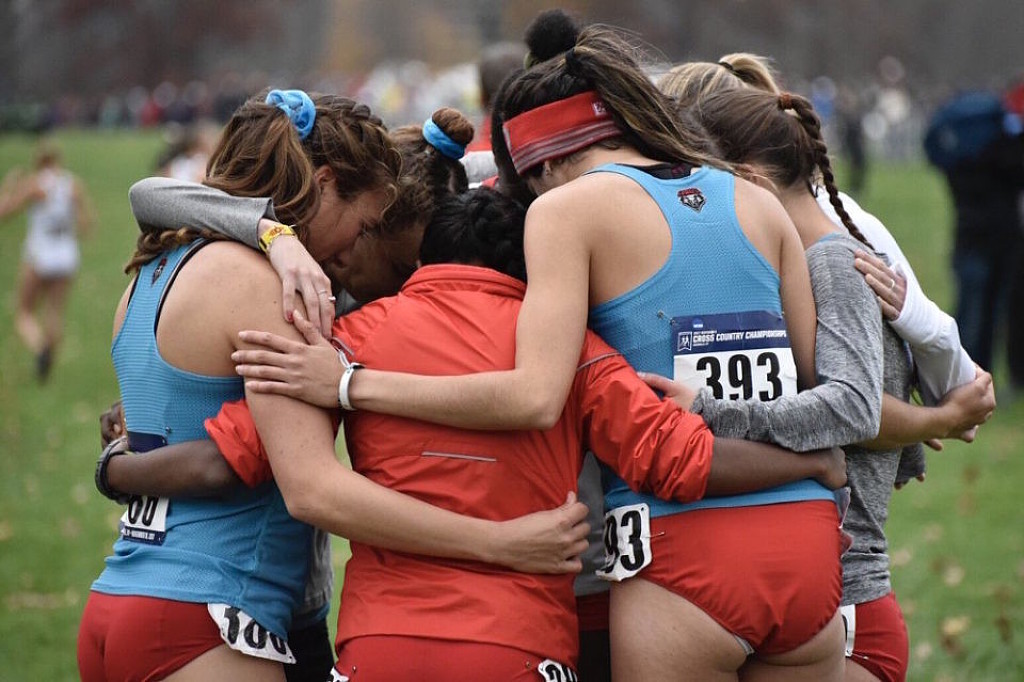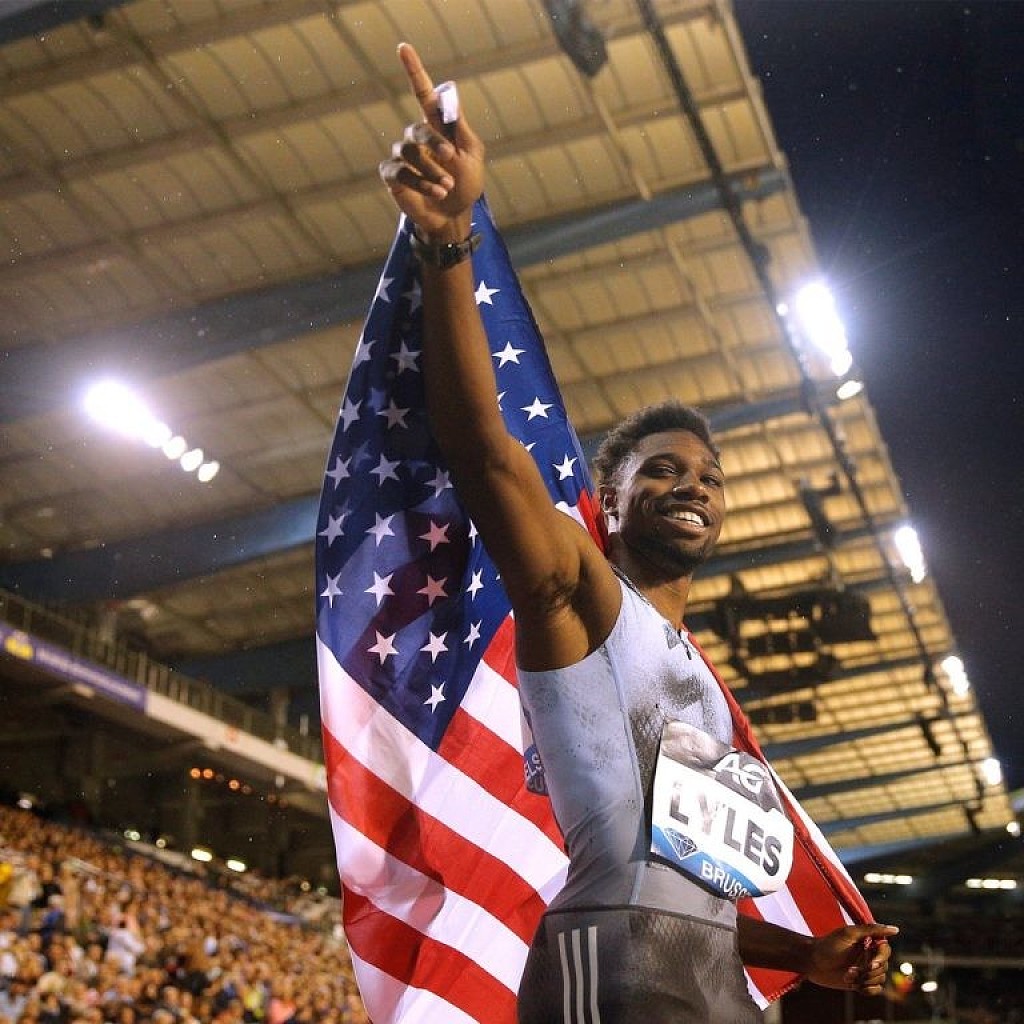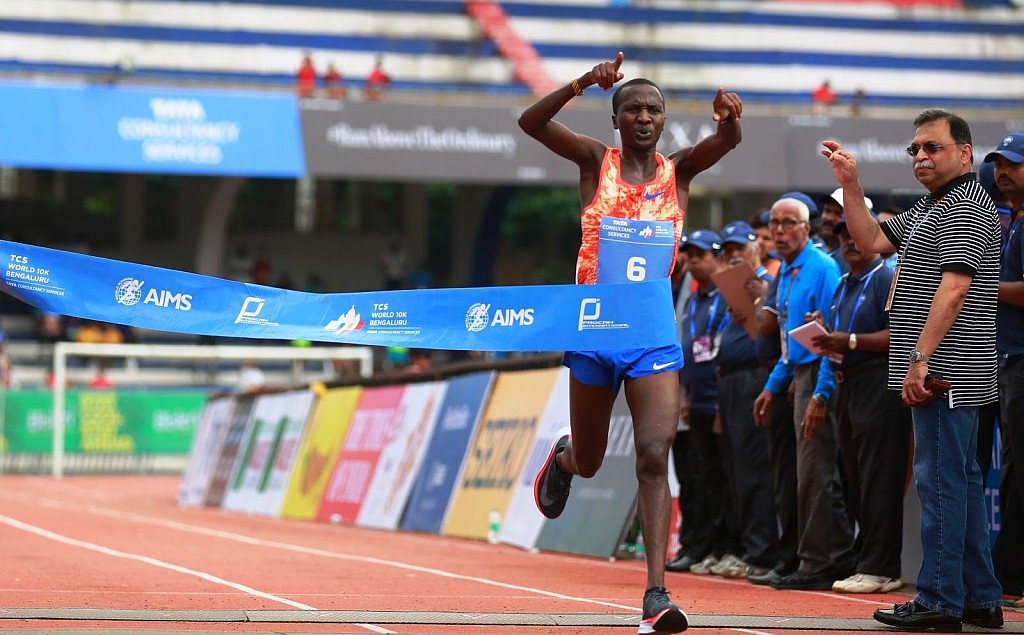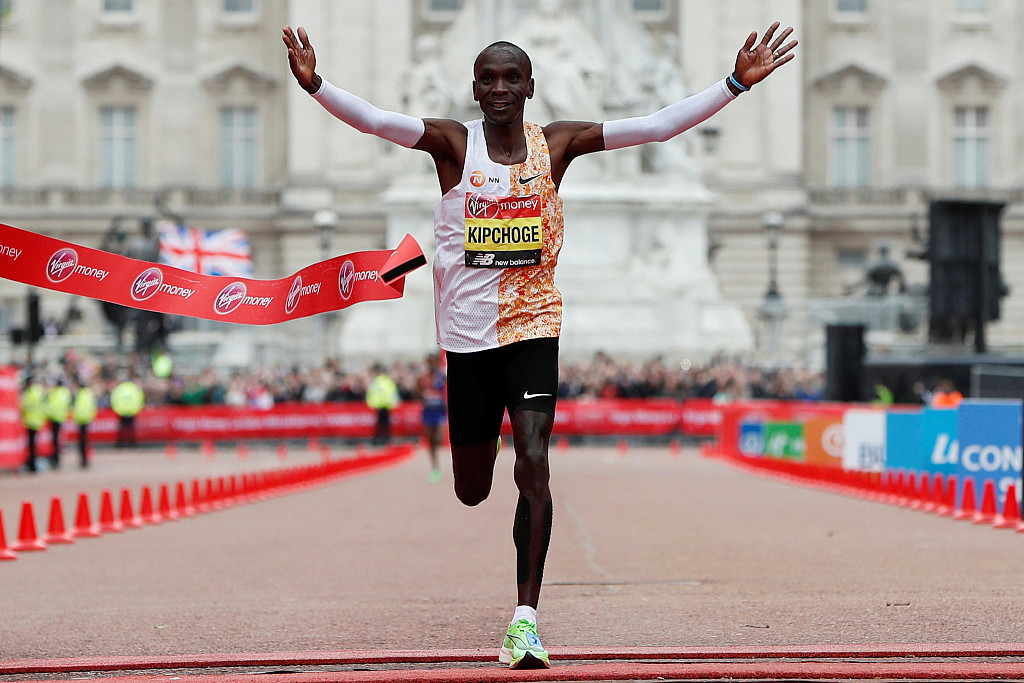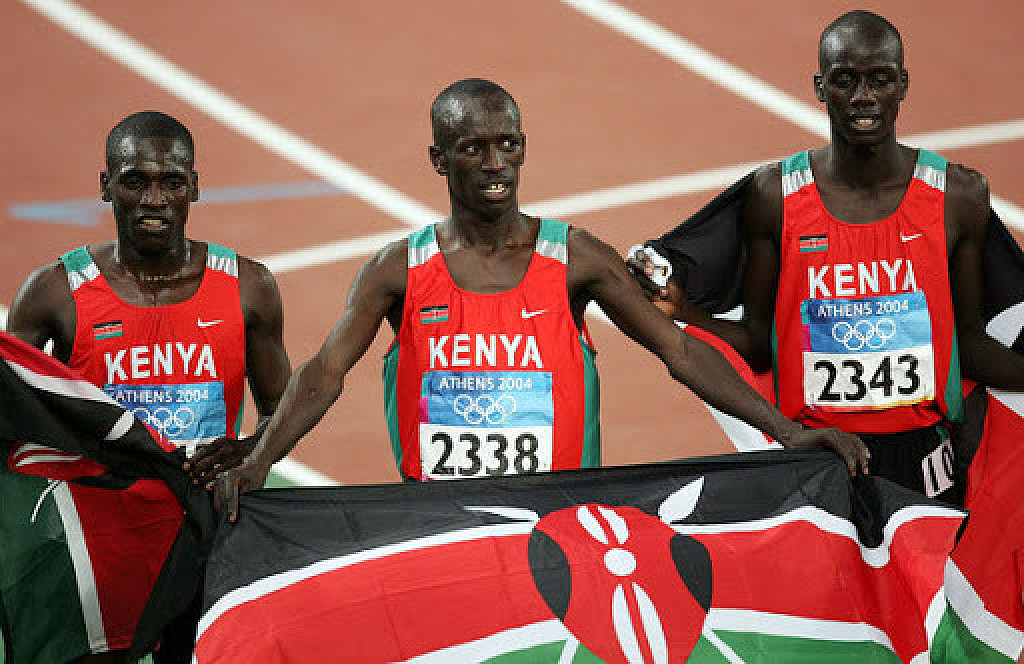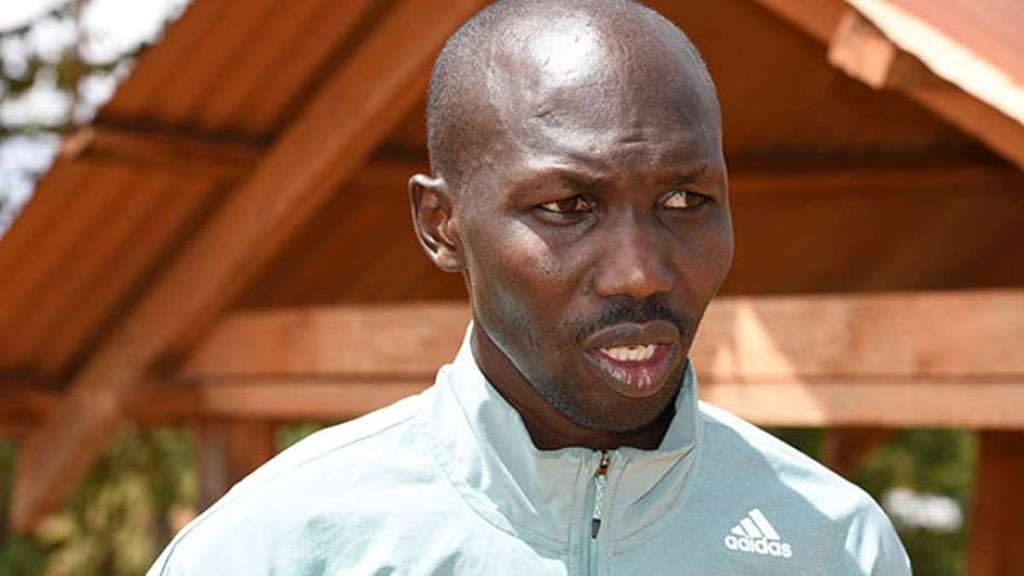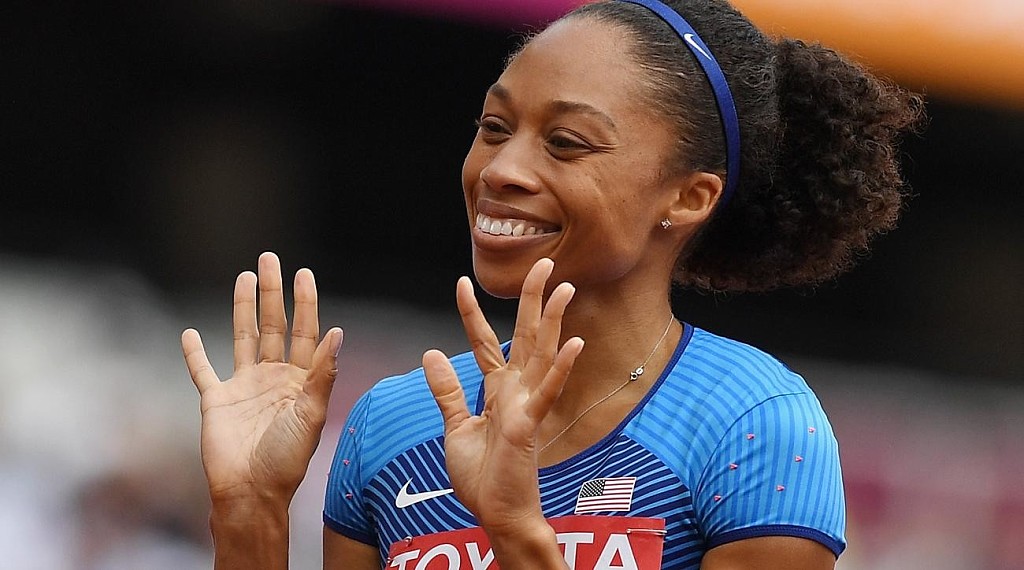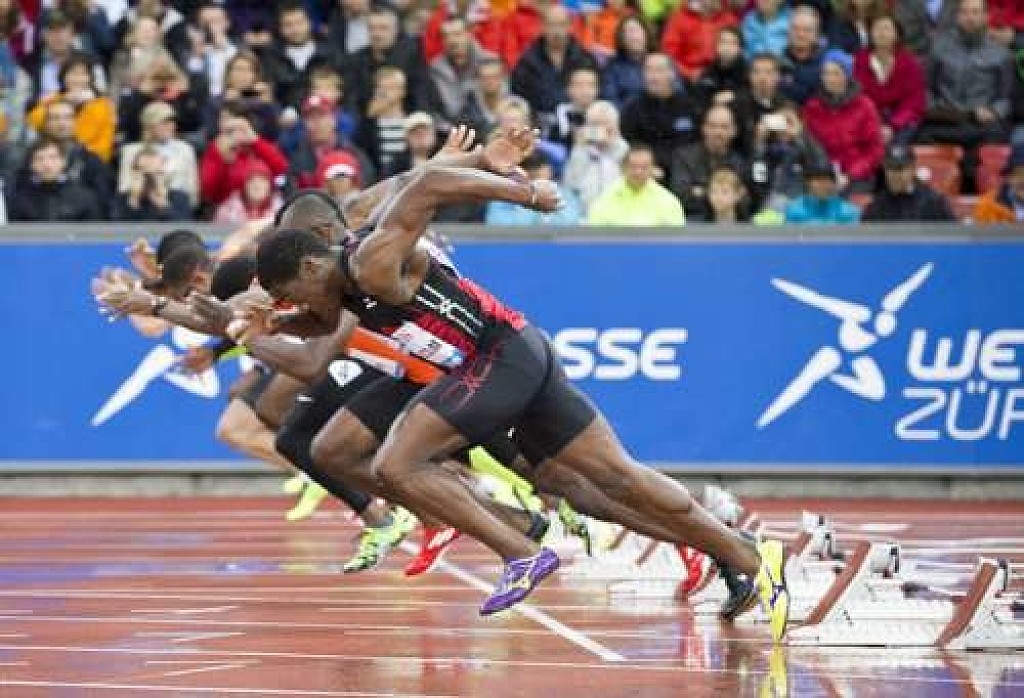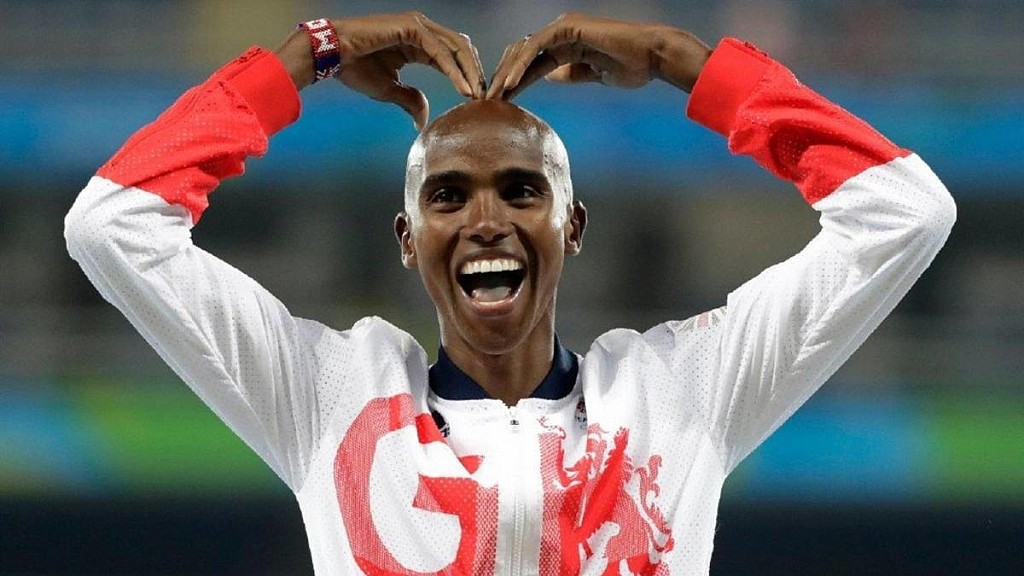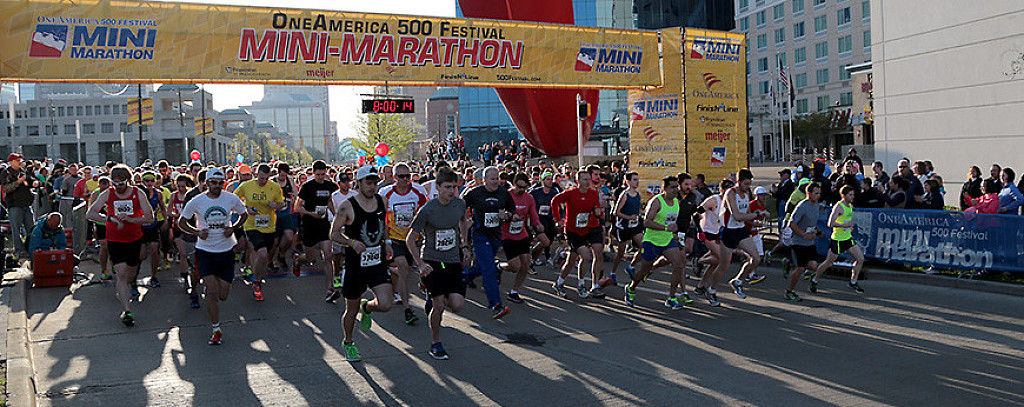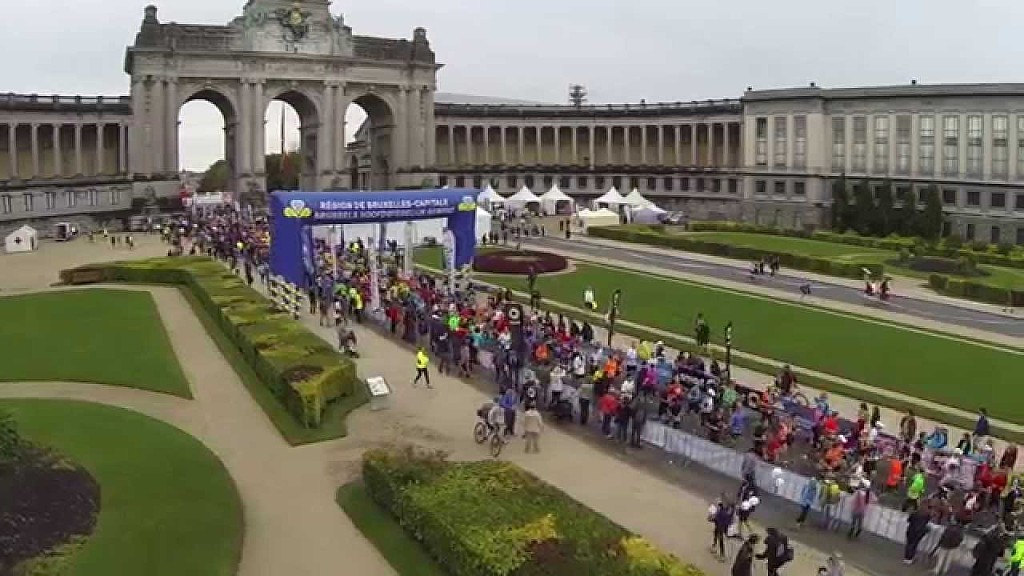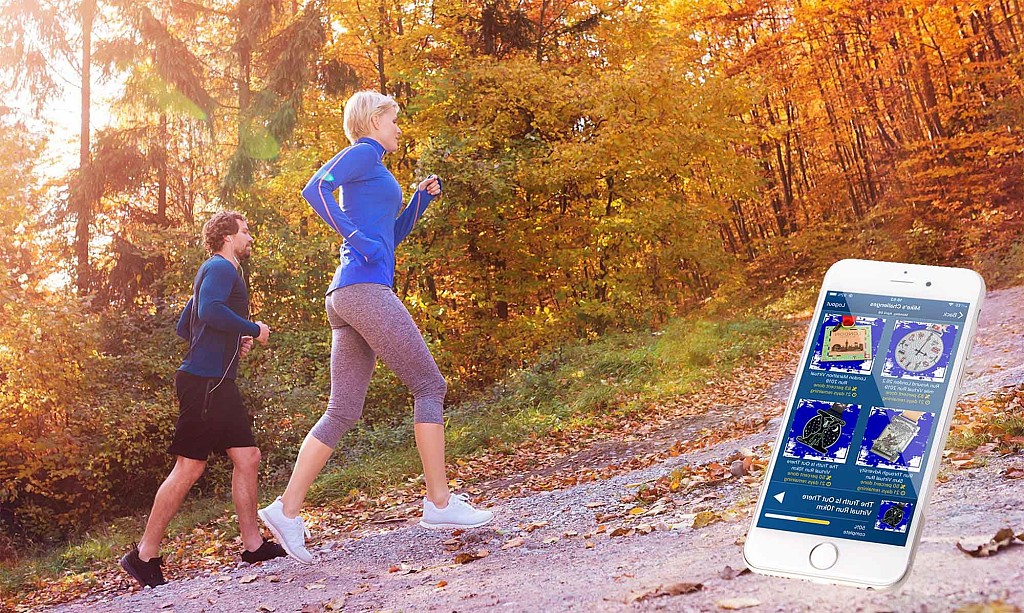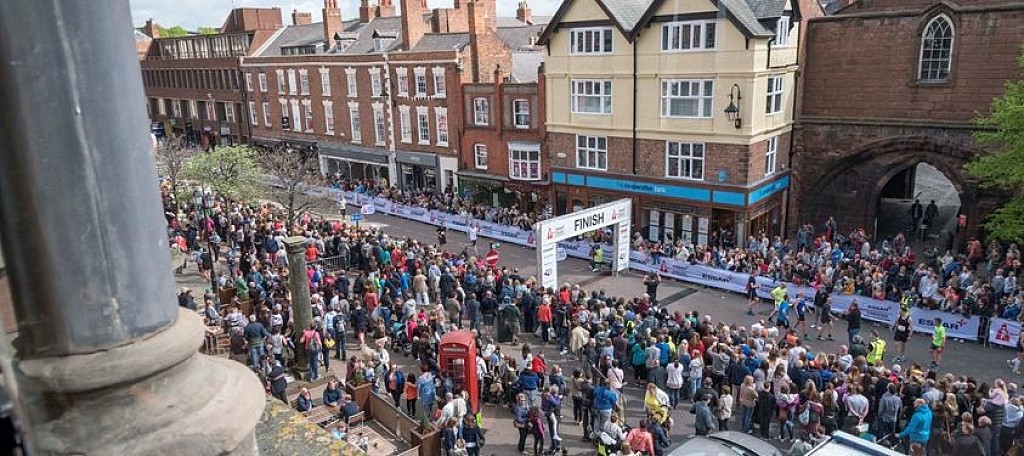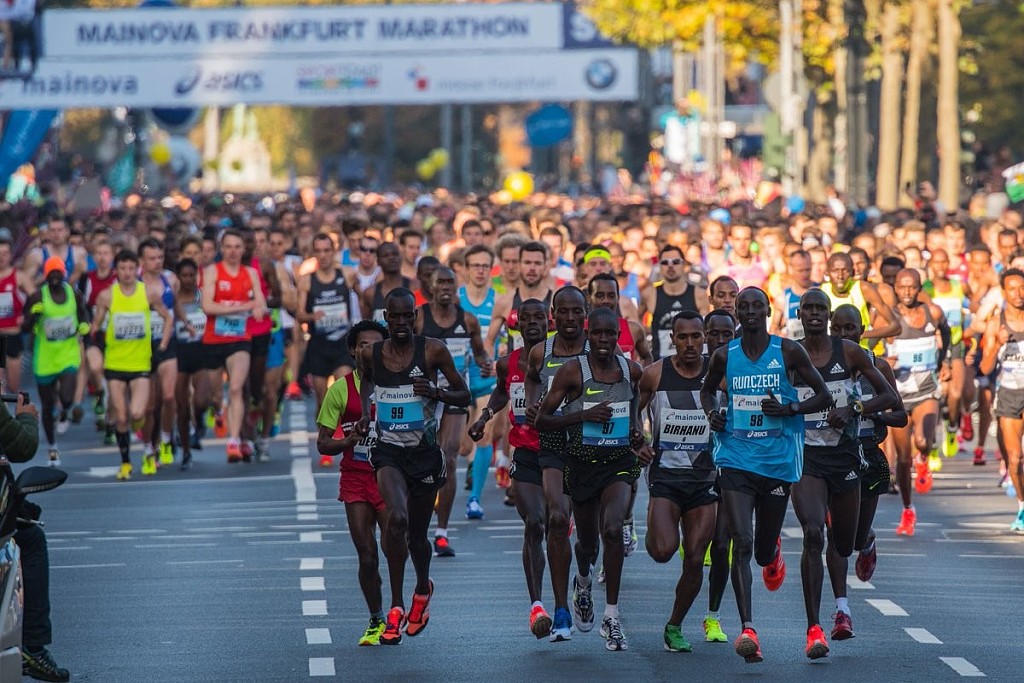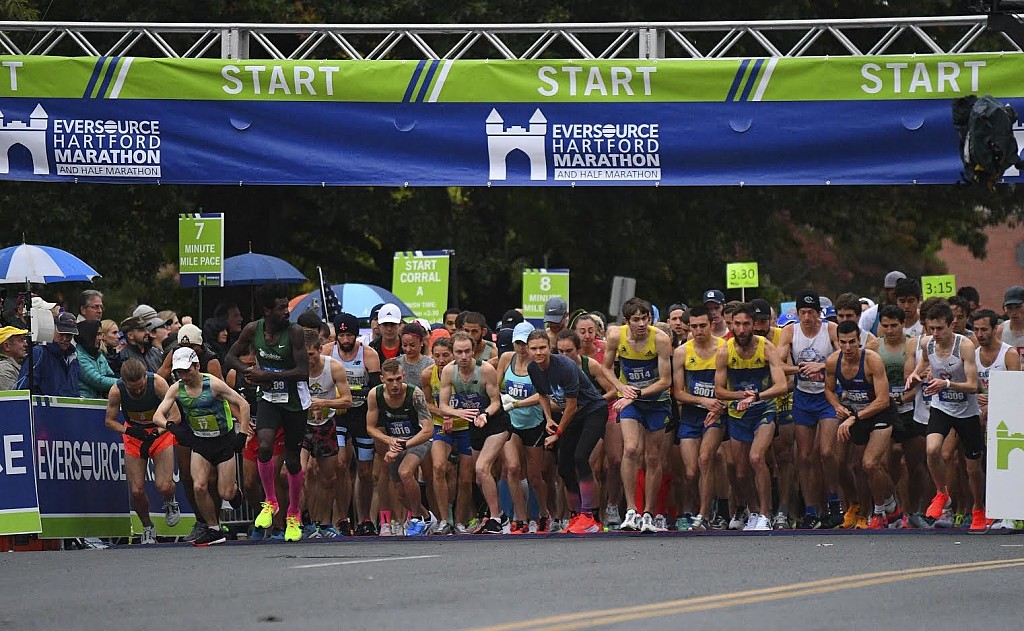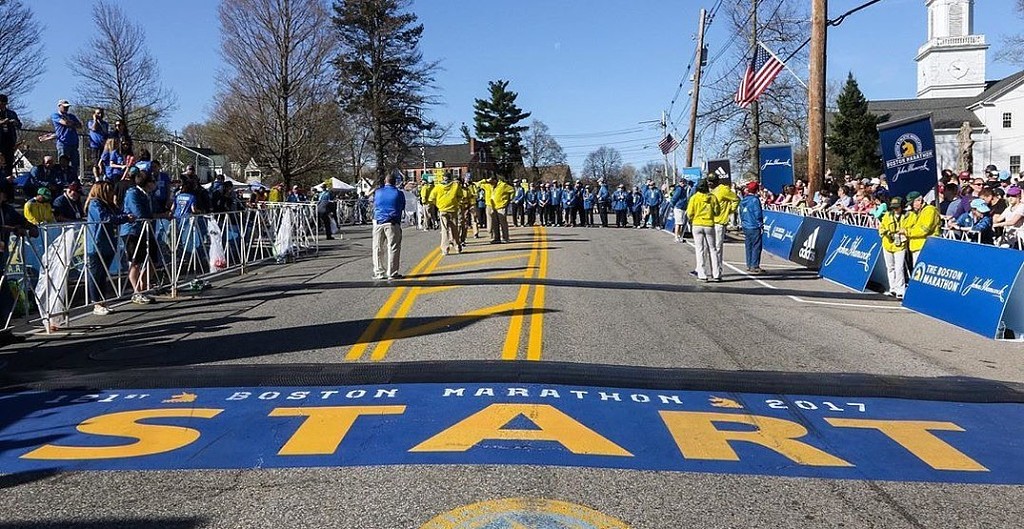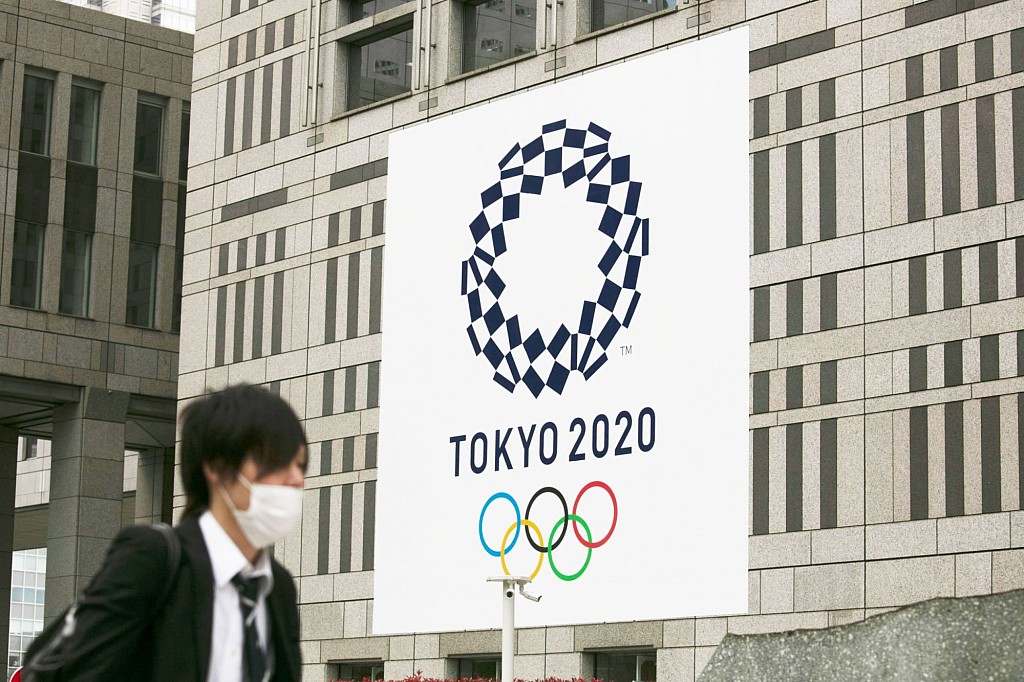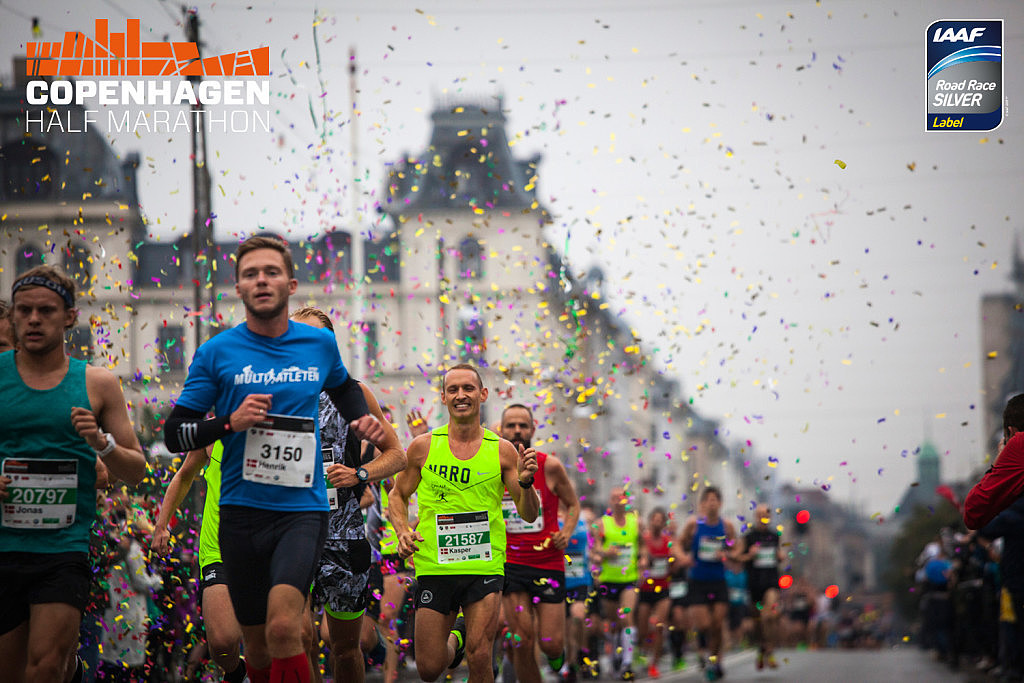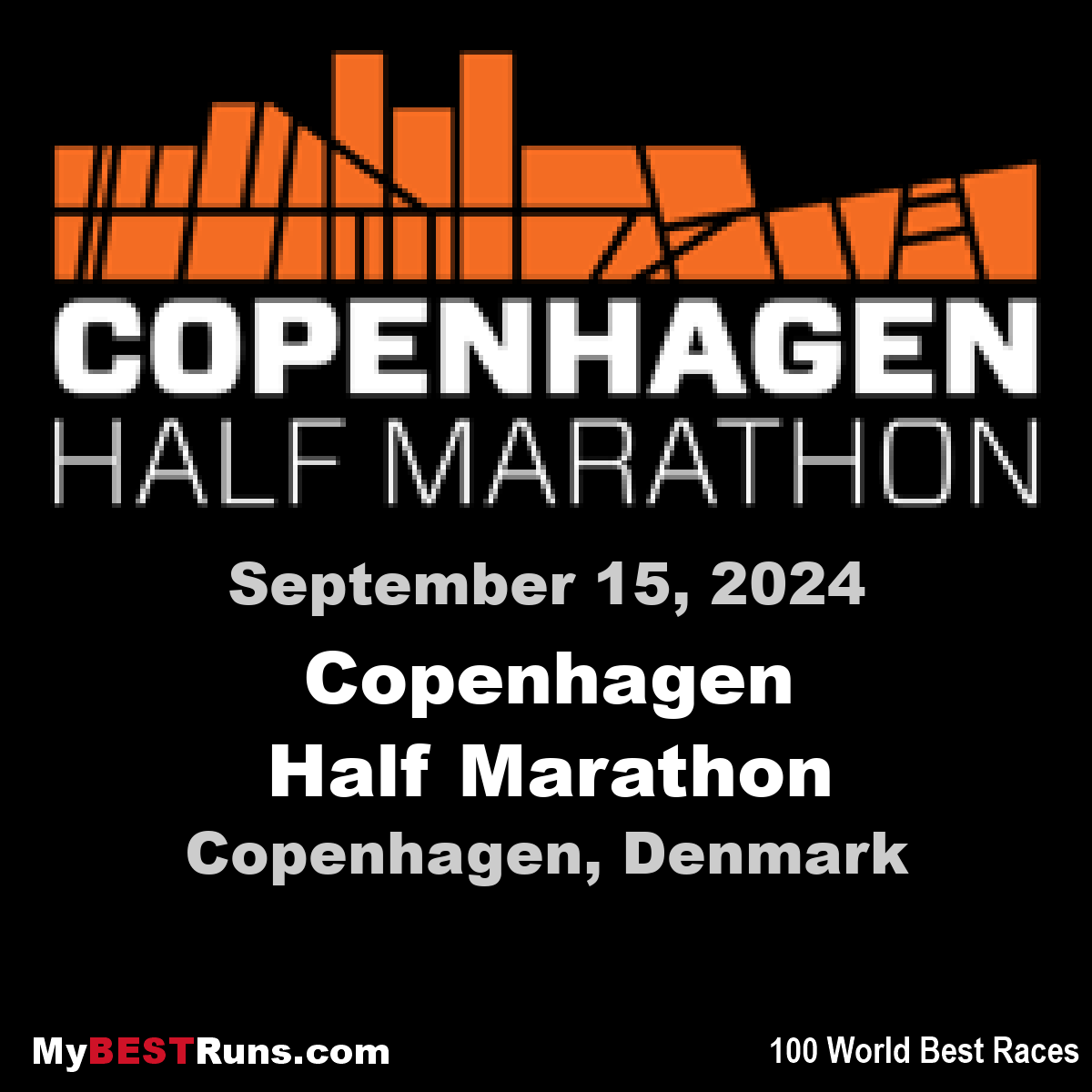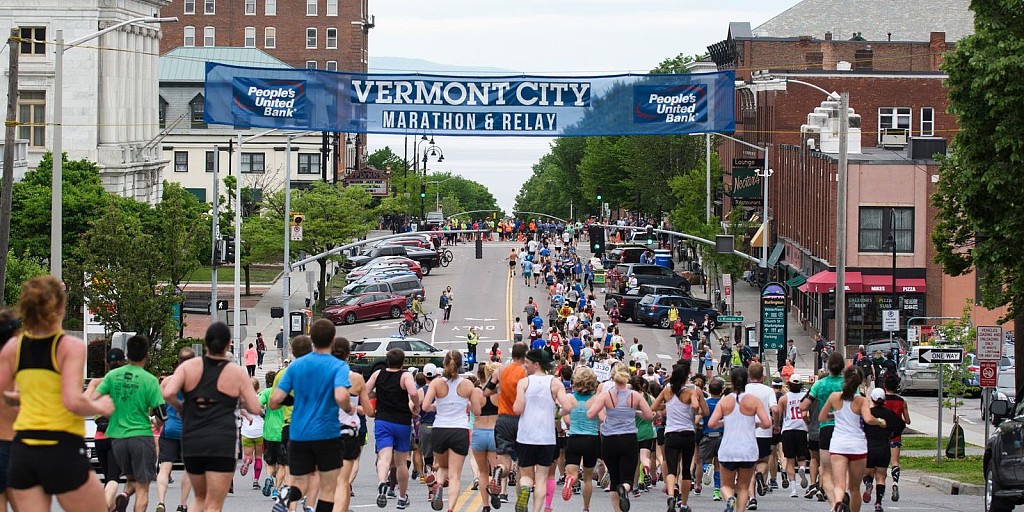Running News Daily
Running News Daily is edited by Bob Anderson in Mountain View, California USA and team in Thika Kenya, La Piedad Mexico, Bend Oregon, Chandler Arizona and Monforte da Beira Portugal. Send your news items to bob@mybestruns.com Advertising opportunities available. Over one million readers and growing. Train the Kenyan Way at KATA Running Retreat Kenya. (Kenyan Athletics Training Academy) in Thika Kenya. Opening in june 2024 KATA Running retreat Portugal. Learn more about Bob Anderson, MBR publisher and KATA director/owner, take a look at A Long Run the movie covering Bob's 50 race challenge.
Index to Daily Posts · Sign Up For Updates · Run The World Feed
Think you're not made for running? These runners say think again
Step by step, you can get there from here.
If there’s one piece of advice Latoya Shauntay Snell wishes she had received at the beginning of her running journey, it’s this: “You don’t have to look or run like a gazelle to be a runner.”
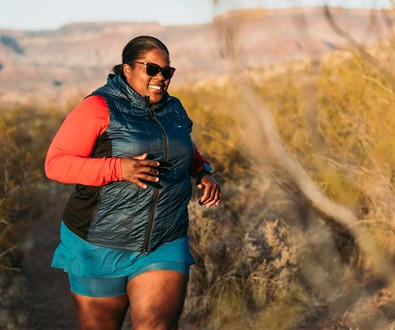
Even without that advice, the 35-year old Brooklyn-based runner persevered from her first, few tentative strides back in 2013, and today, she’s got a list of over 200 running event finishes to her name. Snell makes a living inspiring others through her freelance writing and star influencer status, blogging under the handle the Running Fat Chef. “I came to the sport for weight loss, but it took reframing my mindset to stick with it,” she said.
Mirna Valerio, 44 — aka the Mirnavator — got into running with the goal of feeling better following a 2008 health scare. She had run in high school but like many adults, fell off her fitness regimen as a busy lifestyle took over. Her return to the sport began with just one mile. “It was hard and painful both physically and emotionally,” she admits. “But I met myself where I was and one mile became two, and then I built from there. If you want to be a runner, you have to run.”
Like Snell, Valerio has now run hundreds of races — and the longer, the better. Both women will tell you they found their love of running one step at a time. “You need to be patient with yourself and practice loving yourself,” said Valerio. “Running is an expression of self love and taking a holistic approach will lead to a better experience.”
Morgon Latimore, whose Latitude Pure Coaching business comes with the tagline “empowering all athletes,” agrees with this approach. “We want our athletes to have a healthy mind, healthy body and happy life,” he said. “Too many people are intimidated by running, looking at marathoners, Ironman finishers and really fast athletes. Instead, look at your own life and start where you are.”
Ready to run? Get started with these 3 tips
If you’ve never thought of yourself as a runner, Snell, Valerio and Latimore are here to say give it a try. They’ve got three tips to make the experience more enjoyable and less intimidating.
1. Build slowly.
Focus on the moment you are in, not where you want to go. “You will get there,” said Latimore, “but pace yourself and be patient.”
Sometimes that means pulling back. “Give yourself permission to take breaks if you need them,” said Snell. “I’m a sponsored athlete and yet, due to the stress of the pandemic, I didn’t run for several months because I couldn’t motivate. Take breaks and do something else if you come up against a road block.”
Valerio adds that it’s ok to take walk breaks if you need them. “Start at a conversational pace,” she said. “If you need to walk, walk. Then start back up again, and the next time, try to go a minute or two longer.”
2. Embrace the suck.
Even the most experienced of runners will tell you, not all runs are going to feel good. “I’d say there are about three of seven days when I think it sucks,” admitted Snell. “There are going to be rough days.”
When you first get started, you might be a bit overzealous and then hit a wall. “Your mind will get tired and you’ll get burned out,” Latimore cautioned. “You’ll tell yourself you’re not good enough, that it’s too painful, that you don’t want to go on. Prepare for that wall.”
3. Mark the small goals.
Even if you get knocked down by a bad run or two, getting up and back at it is important. “It takes a couple of weeks to notice the benefits,” said Valerio. “But pay attention to small things — you’re less winded, or you’re sleeping better, for instance.”
Latimore agreed. “You have to celebrate along the way,” he said. “Notice your progress in pace, or maybe you hit seven days in a row of training.”
Wherever you are on your journey, take heart that with patience and grace, you can reach your goal and become the runner you never thought you’d be. said Snell: “Breath by breath and step by step. You’re capable of doing anything and remember that you’re an athlete if you show up.”
(07/18/2020) ⚡AMPColorado To Hold State 10-K Road Running Championships On Sunday
Bucking the trend of cancelled road races, USATF Colorado will hold their state 10-kilometer road running championships on Sunday hosted by the Colorado Springs Classic 10-K. The race, which was first cancelled then rescheduled, will be held on an out-and-back course starting at Monument Valley Park. Entries close today.
So far, 121 athletes have signed up for the race, including elite runners Fernando Cabada (2:11:36 marathoner), Lauren Masterson (the 2019 women’s champion), and Maor Tiyouri (2016 Olympic marathoner for Israel). The male and female winners will each receive $400 out of a $2000 prize money purse.
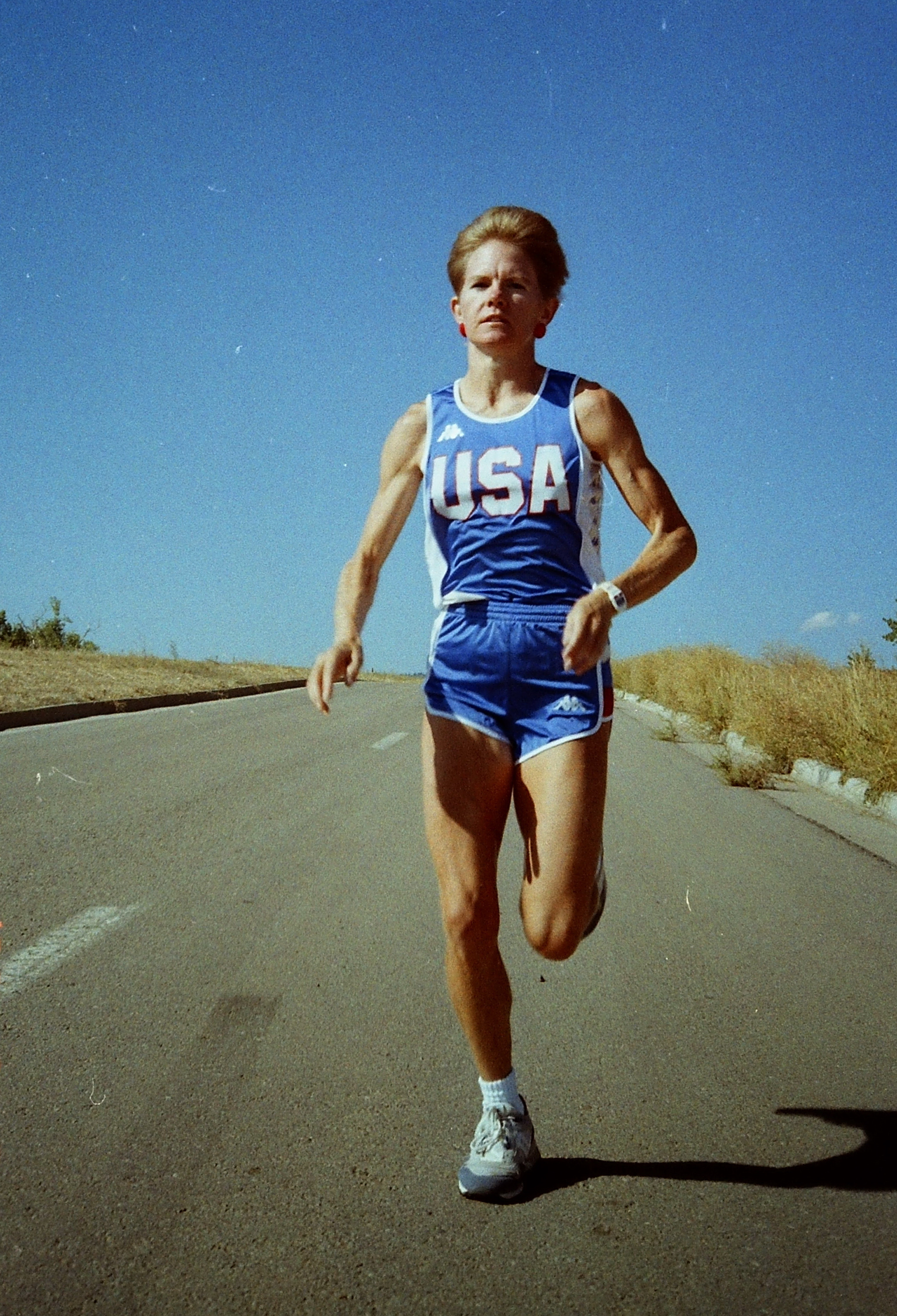
The event is organized by Mad Moose Events, a family-owned event management company founded by Justin Ricks. Organizers plan to have athletes start in small waves of 10 separated by one-minute intervals, and have posted hygiene guidelines to fight COVID-19 spread on the event website. Those guidelines include:
. Temperature Check: All runners must do a contact-less temperature check as they enter the start line area. If runner has a temperature of 100.4°F (38°C) or above, they will be sent home.
. Social Distancing: All runners maintain a minimum of six-foot (two meter) distance from others.
. No Post-Finish Hanging Out: Runners cannot congregate at the finish line after finishing.
. Results Posted Only On-Line: Printed results will not be posted at the finish line to discourage runners from congregating.
. Face Coverings: Masks or other face coverings must be worn when social distancing cannot be maintained.
Organizers also caution “high risk individuals and individuals from highly infected areas” not to attend the event.
For context, this is the only road race on the proprietary global Race Results Weekly event calendar for this weekend (there are some track competitions). Road races typically held this weekend include the Ann Arbor Mile – Dart for Art (Ann Arbor, Mich.), Buffalo Subaru 4-Mile Chase (Buffalo, N.Y.), Bill Luti 5-Miler (Concord, N.H.), Silks & Satins 5-K (Saratoga Springs, N.Y.), Summerfast 10-K (Vancouver, B.C.), Rock ‘N’ Roll Chicago Half-Marathon, Lululemon Edmonton 10-K, Marvejols Mende 22.4K (Lozere, France), Real Insurance Sydney Harbour 10-K, and the Rockville Rotary Twilight Runfest 5-K (Rockville, Md.).
(07/18/2020) ⚡AMPby Let’s Run
Recovered Michael Kibet is focusing on the Olympic Games
Ndalat Gaa cross country champion Michael Kibet has set his sights on a ticket to the postponed 2020 Olympic Games after missing out on the 2019 World Athletics Championships in Doha, Qatar despite winning the 5,000m race during the national trials.
Kibet and second place finisher Daniel Simiu failed to meet the Athletics Integrity Unit (AIU) anti-doping threshold for the world show thus derailing their debut at the international stage.
They were replaced by third place finisher Africa cross country junior champion Nicholas Kimeli and and another junior runner Africa 5,000m silver medalist Jacob Krop.
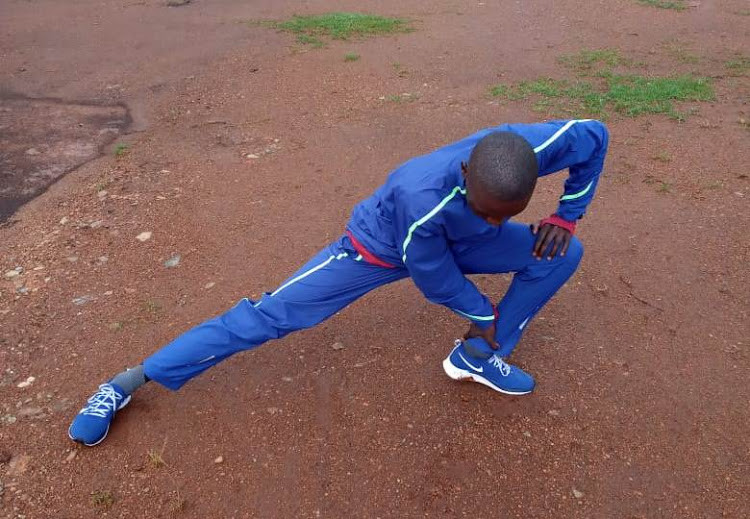
Kibet says the disappoint from last now over and has his eyes set on ensuring that he does everything right to make the national team to Japan.
Kenya last won the 5,000m men's Olympic title in 1988 through John Ngugi and Kibet, who was not born then, feels he has what it takes to deliver.
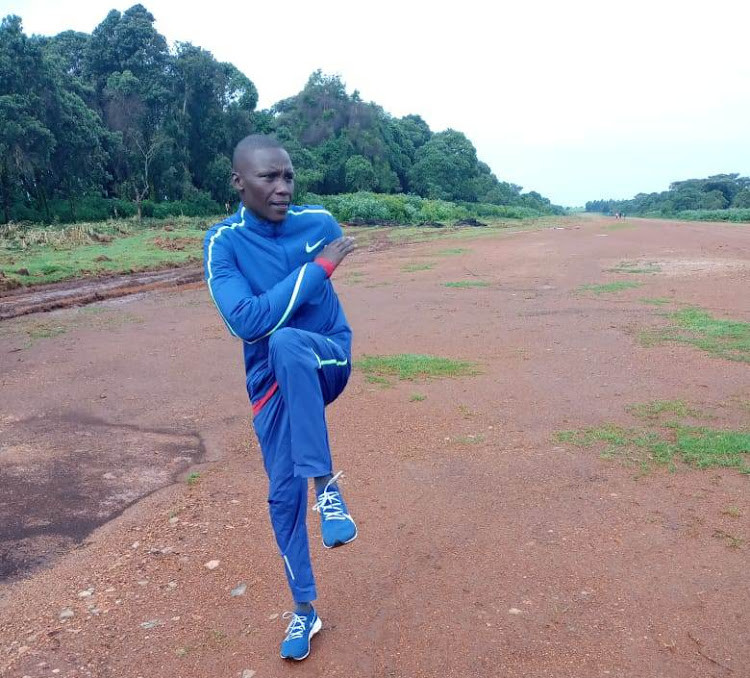
Born on 3rd September 3, 1999, Kibet wants to become the only Kenyan to win the title since the country debuted at the Games in 1956 in Melbourne, Australia.
“Right now my focus is to run and bring the elusive Olympic Games 5,000m title," said Kibet, following an individual training session in Kericho County.
"It hurt so much to miss the World Championships and especially flying out of the country for the first time in Kenyan colours but that is behind me now."
Last year, he won the Palio Della Quercia 5,000m race, edging out Ethiopia's Mukta Idris in a 1-2 Kenyan podium finish alongside Erick Kiptanui in a meet record of 13:11.08 to better Hayle Ibrahimov's 13:11.34 set in 2012.
“I want to bring the title to Kenya by breaking the jinx. I am sure 2021 will be a great year for me in athletics,” he said.
With the government directive in gathering, the two times Tuskys cross country champion trains in split groups that also has Geoffrey Koech, Sheila Chelang’at, national cross country champion Faith Koech and Naomi Chepkirui.
He observes that the disappointments of last year were only bettered by the support he got from family, friends and training mates and has now ensured that he is tested whenever Doping Control Officers visit him. He has so far been tested six times and expects more when the world opens up for sports.
(07/17/2020) ⚡AMPby Emmanuel Sabuni
Tokyo 2020 Olympic Games
Fifty-six years after having organized the Olympic Games, the Japanese capital will be hosting a Summer edition for the second time, originally scheduled from July 24 to August 9, 2020, the games were postponed due to coronavirus outbreak, the postponed Tokyo Olympics will be held from July 23 to August 8 in 2021, according to the International Olympic Committee decision. ...
more...World 5,000m champion Hellen Obiri pulls out of Monaco event
World 5,000m champion Hellen Obiri won’t take part in women’s 5,000m race during the Monaco leg of the Diamond League on August 14.
Obiri, the Africa and Commonwealth champion, said it will not be possible for her to compete efficiently having not trained and tested track since retaining her World 5,000m title on October 5, last year in Doha.
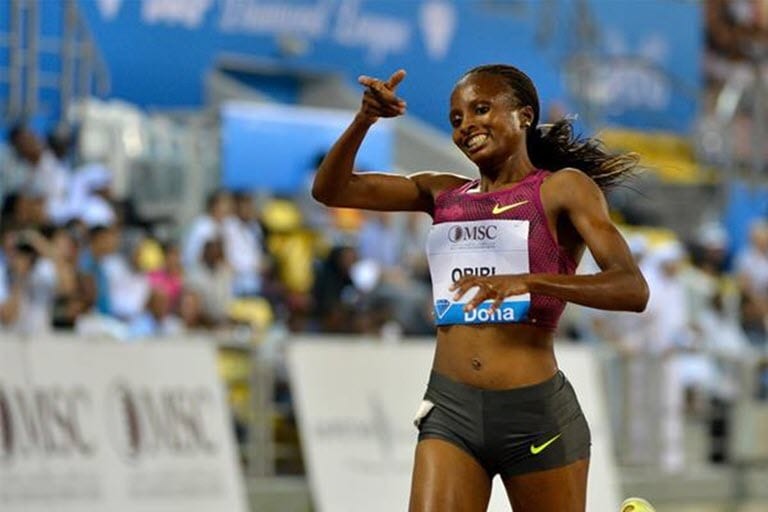
Obiri and Conseslus Kipruto (3,000m steeplechase), were among five world champions, who have been lined up by the organizers of the Herculis EBS meeting.
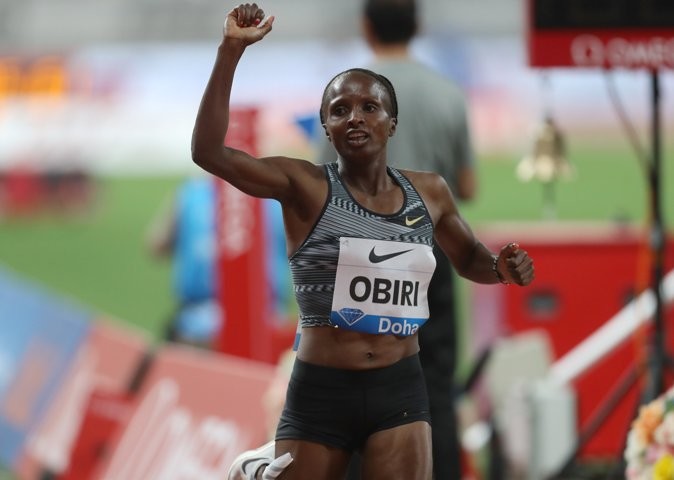
“You can’t go to such an event without having done speed work. We were hoping venues like the Nyayo National Stadium or Moi International Sports Center, Kasarani could be opened for us, but it has not happened,” said Obiri.
Obiri, who is also the Continental Cup champion, said her only hope this season is the Doha leg that will go down on October 9.
The last time Monaco hosted a long distance track event for women was in 2017 where Obiri won the 3,000m race.
Sporting facilities in the country have remained closed since March this year after the government announced measure to curb the spread of novel coronavirus.
Before Doha, Obiri will line up for the Kip Keino Classic, one of the World Athletics Continental Tour events due September 24 in Nairobi.
Katarina Johnson-Thompson, the world champion in the heptathlon, will compete in the high jump, her best individual discipline.
Another middle distance star announced is Halimah Nakaayi of Uganda, the surprise 800m champion in Doha last year.
Organizers also announced that Noah Lyles, the World 200m champion, will headline his favorite event.
Others on the slate include world pole vault record-holder Armand Duplantis; Laura Muir of Great Britain, who will race over 1000m; and Germany's Konstanze Klosterhalfen, the European indoor 5000m record-holder.
(07/17/2020) ⚡AMPby Ayumba Ayodi
Master 10,000m record-holder Kevin Castille receives four-year doping ban
Kevin Castille, an American masters runner, has received a four-year ban from USADA after testing positive for a steroid at the 2019 U.S. 10K Masters Championships. According to USADA, Castille, 48, tested positive for 19-norandrosterone following his first-place finish at the championships during an in-competition test. Norandrosterone is an anabolic steroid used to build muscle mass.
Castille is a former 5,000m masters world record-holder and multi-time U.S. masters record-holder. He owns personal bests of 28:49.11 for the 10,000m and 1:03:58 for the half-marathon, which he ran at 45 years old. Castille still holds the masters world record in the 10,000m at 29:44.38, which he set in 2017.
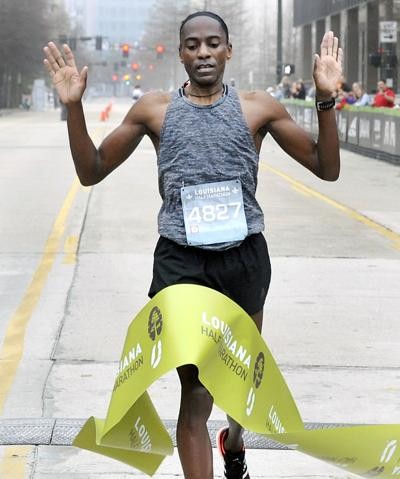
Castille was a standout runner in high school and was recruited by the University of Louisiana, but he didn’t run during his twenties.
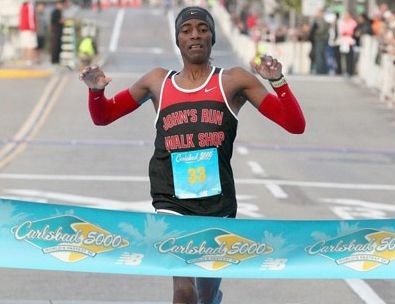
During that time, he sold drugs and was arrested in 2001 for possession. According to The New Yorker, time in jail was his wakeup call. After being released, he took running much more seriously and made a name for himself in the masters community.
Castille initially appealed his case through the arbitration process until several days before his hearing, when he signed the sanction acceptance. He has also been removed from all competition results from April 28, 2019 forward and asked to forfeit points and prizes. His ban runs through 2023.
(07/17/2020) ⚡AMPby Madeleine Kelly
For the first time in Olympic history, the women’s and men’s marathon victory ceremonies will both be held during the Closing Ceremony at the postponed Tokyo 2020 Olympic Games
Inclusion of the marathon medal presentations in the Closing Ceremony will cap the 10-day athletics programme unveiled today, which follows the timetable previously announced for the 32nd Summer Olympic Games prior to their postponement in March.
The programme commences on Friday 30 July, 2021 with the opening round of the men's 3000m steeplechase and concludes on the final day of the Games, Sunday 8 August, with the men's marathon in Sapporo, capital of the mountainous northern Japanese island of Hokkaido. In between, competition will be spread over 16 sessions at Tokyo's Olympic Stadium.

Athletics figures prominently in both of the Games' 'Super Saturdays', with three finals - the men's discus throw, women's 100m and the inaugural mixed 4x400m relay - scheduled for 31 August. Another seven athletics titles will be decided on Saturday 7 August, among 34 event finals scheduled for that day, the highest single day number during the Games. 'Golden Sunday' on 31 July, will include 25 medal events in all, capped by the men's 100m final.
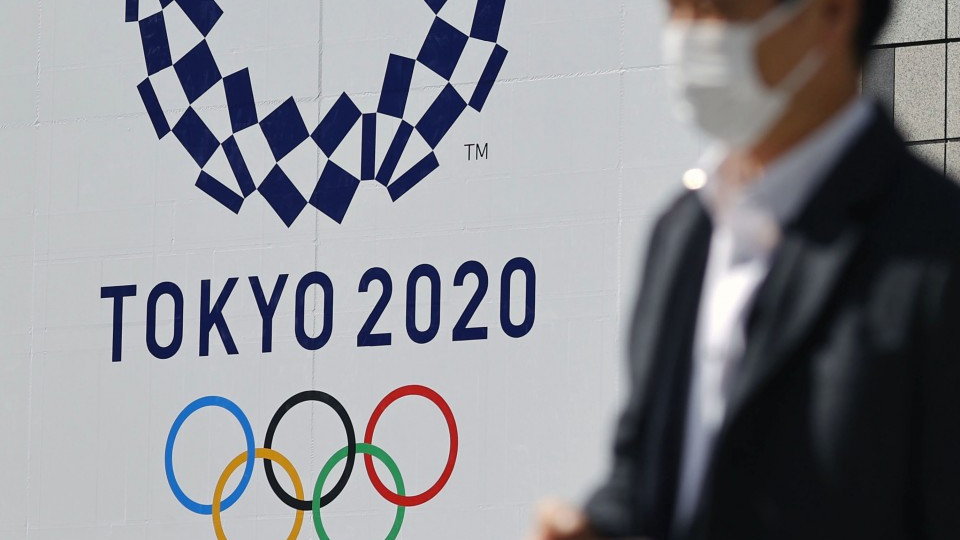
As announced in October, Sapporo will host the marathons and race walks as part of a wide range of measures taken by Tokyo 2020 organisers in consultation with the IOC and international federations to mitigate the effects of the high temperatures which may occur in Tokyo.
As announced in June, the Tokyo 2020 qualification system already in force was adapted to fit the new dates of the Games.
The qualification principles remain unchanged with athletes able to qualify through entry standards and then the World Athletics World Rankings.
Athletes who have already met the entry standard since the start of the qualification period in 2019 remain qualified and will be eligible for selection by their respective Member Federations and National Olympic Committees, together with the other athletes who will qualify within the extended qualification period.
Due to the uneven training and competition opportunities around the world during the coronavirus pandemic, World Athletics announced on 7 April that the qualification period (for all events) was suspended from 6 April to 30 November 2020.
On 25 June, World Athletics launched 'Road to Tokyo', an online tool to help athletes, media and fans track the qualification process for next year's Olympic Games.
Searchable by discipline, country and qualification status, the tool will provide a real time view of each event over the course of the Tokyo 2020 qualification period which ends on 29 June 2021.
(07/17/2020) ⚡AMPby World Athletics
Tokyo 2020 Olympic Games
Fifty-six years after having organized the Olympic Games, the Japanese capital will be hosting a Summer edition for the second time, originally scheduled from July 24 to August 9, 2020, the games were postponed due to coronavirus outbreak, the postponed Tokyo Olympics will be held from July 23 to August 8 in 2021, according to the International Olympic Committee decision. ...
more...American ultrarunner John Kelly set a new best time on the legendary Pennine Way FKT by 40 minutes
Ultrarunner and 2017 Barkley Marathons finisher John Kelly ran the FKT on the U.K.’s legendary Pennine Way early Thursday morning. The Pennie Way FKT was held for 31 years by Mike Hartley, a storied British ultrarunner, until today.
Kelly surpassed Hartley’s time by 40 minutes to finish in two days, 16 hours and 40 minutes (the previous record stood at two days, 17 hours and 20 minutes).
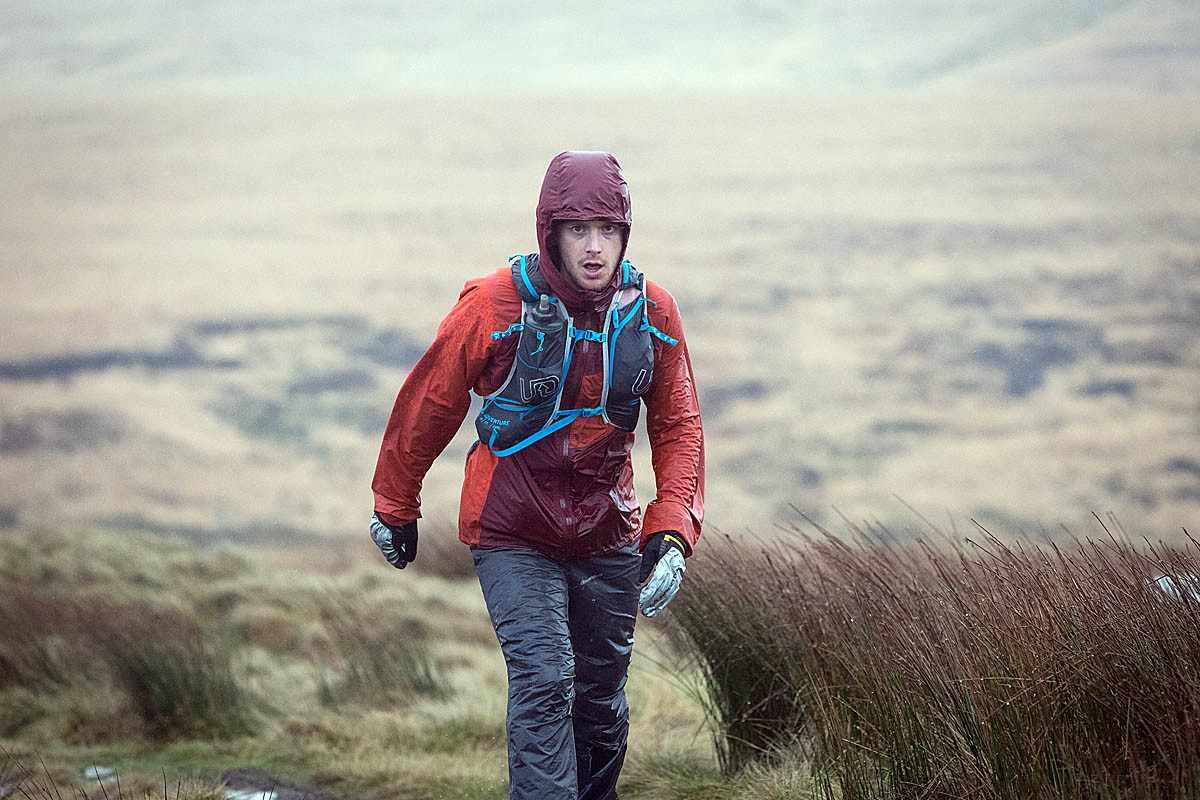
The Pennine Way, which is travelled during the Spine Race, is a 268 mile (431k) trail up the middle of England from Edale to Kirk Yetholm. Over the course of that 431K, the path gains just shy of 12,000m of elevation on extremely rough terrain. For a little context, the elevation is nearly twice the height of Mount Everest and the distance is like running from Toronto to Sudbury. It’s a lot of running and climbing.
This FKT attempt wasn’t Kelly’s first time traversing this course. He has run it over the course of the Spine Race, but this week’s effort was different. He was assisted and running through the summer (as opposed to January, when the Spine Race takes place) and working with nearly 20 hours of daylight as opposed to the eight he would’ve seen last time. On top of the daylight, this was a supported effort, so he didn’t need to carry any extra supplies.
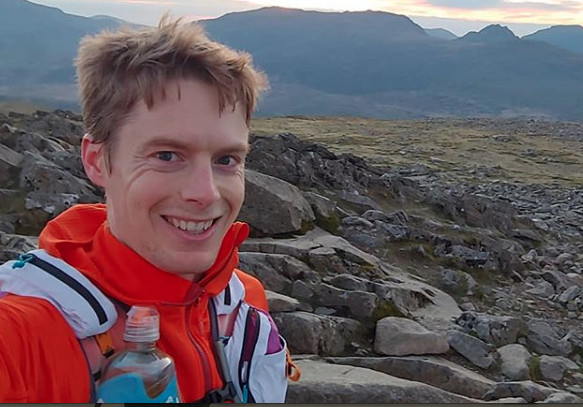
Kelly was supported primarily by his partner Nicki Lygo who documented most of the effort on Twitter. Kelly dealt with some poor weather and significant stomach issues, but he still managed to pull it off. Initially, he was flying through aid stations in under 60 seconds, but slowed to 30 to 40 minutes toward the end when he would sleep for a bit and try to soothe his stomach.
While Kelly’s effort on Pennine Way is astonishing, he’s not done yet. He took on what he’s calling the Hartley Slam. Pennine Way was Part One and the Grand Round is Part Two. The Grand Round route involves nearly 300K of running, thousands of feet of elevation gain and over 600K of biking between its sections. Kelly attempted the Grand Round in 2019, but was unable to complete it, so he’s heading back for a second try two weeks after today’s finish.
Kelly is doing this challenge for two reasons: to have something to do since his 2020 race calendar was cleared and to raise money for the Stephen Lawrence Charitable Trust, a U.K. charity that helps disadvantaged youth. If fans are looking to donate, they can do so here. Tune back in two weeks time to follow Kelly on his journey to conquer the Grand Round.
(07/16/2020) ⚡AMP
by Madeleine Kelly
Kenyan Rodgers Kwemoi Chumo says that Coronavirus paused his marathon debut
Trouble has come in doubles for Commonwealth Games 10,000m bronze medalist Rodgers Kwemoi, who, in addition to failing to make his marathon debut, is locked up in Kenya away from his place of work in Japan.
Kwemoi, who runs for Aisan Kyobio, whom he signed for in 2015, has had a time time due to the coronavirus pandemic that has made a return to the island nation impossible due to travel restrictions.
“ I was to return to my work station in Japan on March 25, the date that all international flights were canceled,” said Kwemoi.
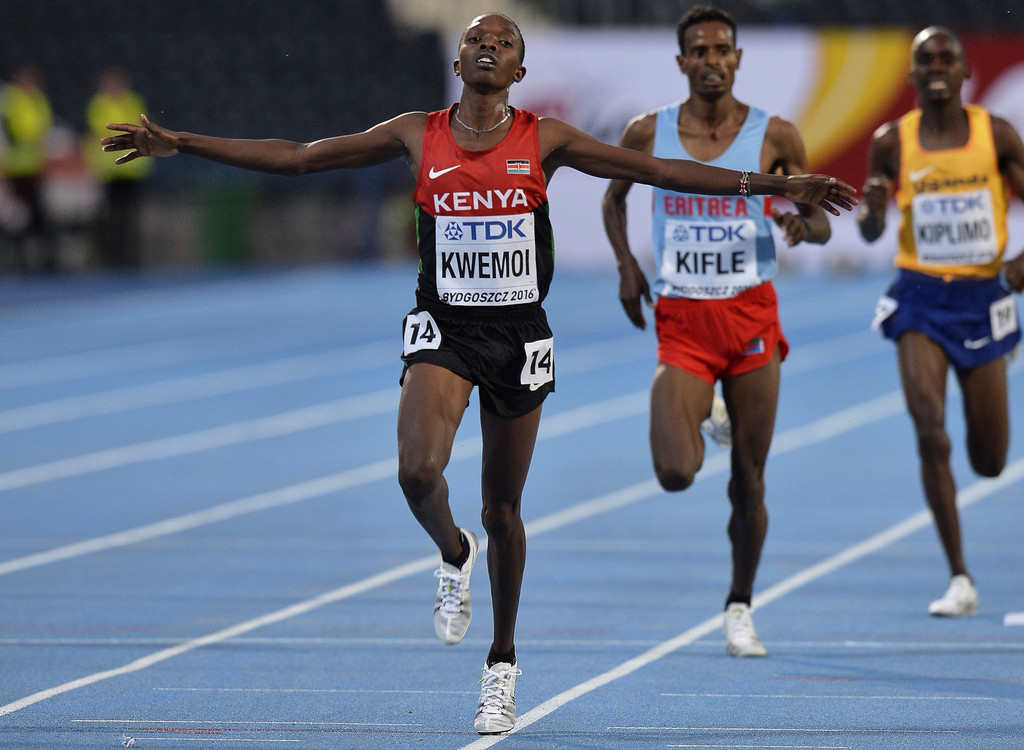
However, to keep himself fit as he waits on what's next, he does long runs and takes his free to tend to his cattle.
The former world junior 10,000m champion said also revealed his plans for the future, despite the uncertainties surrounding the world of sports.
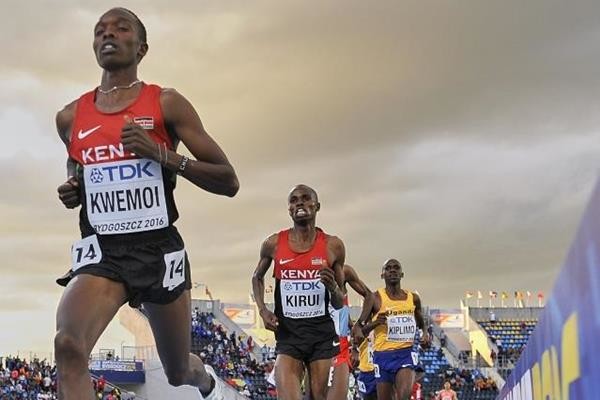
His focus, he said, is to deliver a world and Olympics 10,000m title, which has been elusive for decades with his immediate focus being the 2020 Olympic Games set for Tokyo, Japan next year.
Naftali Temu was the last Olympics 10,000m winner at the 1968 Mexico City Olympic Games while Charles Kamathi was the last to win the world title at the 2001 World Championships in Edmonton, Canada — the third after Paul Koech (1983) and Moses Tanui (1991).
“I want to run several 10,000m, 5,000m and road races but now am focusing on the Olympics. I want to bring the 5,000m and 10,000m Olympic titles,” said Kwemoi.
Despite his current struggles, Kwemoi can count himself lucky after he was considered for the Sh100,000-a-month scholarship programme by the National Olympics Committee of Kenya (NOC-K) courtesy of Association of National Olympics Committees of Africa (Anoca).
He is joined by Commonwealth Games 800m champion Wycliffe Kinyamal, 800m Africa Games bronze medalist Emily Cherotich, world 800m silver medalist Ferguson Rotich, world champion 3,000m steeplechase champion Conseslus Kipruto and world 1,500m champion Timothy Cheruiyot.
“I thank God and NOCK for selecting me. I will use the scholarship well as I prepare for the Olympic Games,” said Chumo.
He said that the scholarship will use it well as he prepares for Olympic Games, utilize it well.
“I don’t want to let those who chose me down. I will work to the best of my knowledge,” he said.
He joined Japan through former Africa cross country champion Leonard Barsoton after the world cross country in China.
“Going to Japan was my dream and all my prayers were answered because I had wanted to work in Japan like my friends,” he said.
He also hailed his employer for ensuring that, despite being away from work, he still gets his wages.
(07/16/2020) ⚡AMPby Emmanuel Sabuni
Tokyo 2020 Olympic Games
Fifty-six years after having organized the Olympic Games, the Japanese capital will be hosting a Summer edition for the second time, originally scheduled from July 24 to August 9, 2020, the games were postponed due to coronavirus outbreak, the postponed Tokyo Olympics will be held from July 23 to August 8 in 2021, according to the International Olympic Committee decision. ...
more...The 2020 Eau Claire Marathon will be run completely virtual due to COVID-19
The Eau Claire Marathon will be different this year, with the race going completely virtual due to COVID-19.
Those already registered who choose to sit this one out, will not be issued a refund.
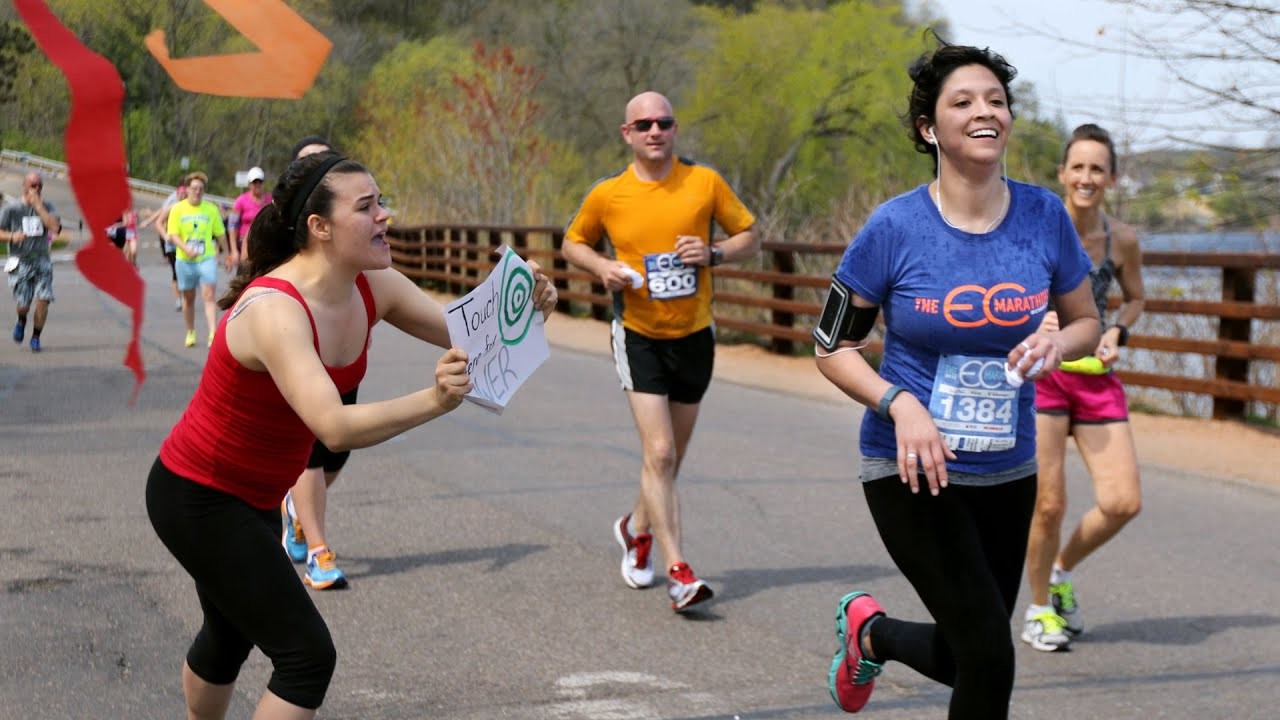
Race organizers say like many other races, the Eau Claire Marathon has a strict "no refund" policy.
This is due to many of the expenses, such as medals, awards, permits and donations having to be paid out months ahead of the race.
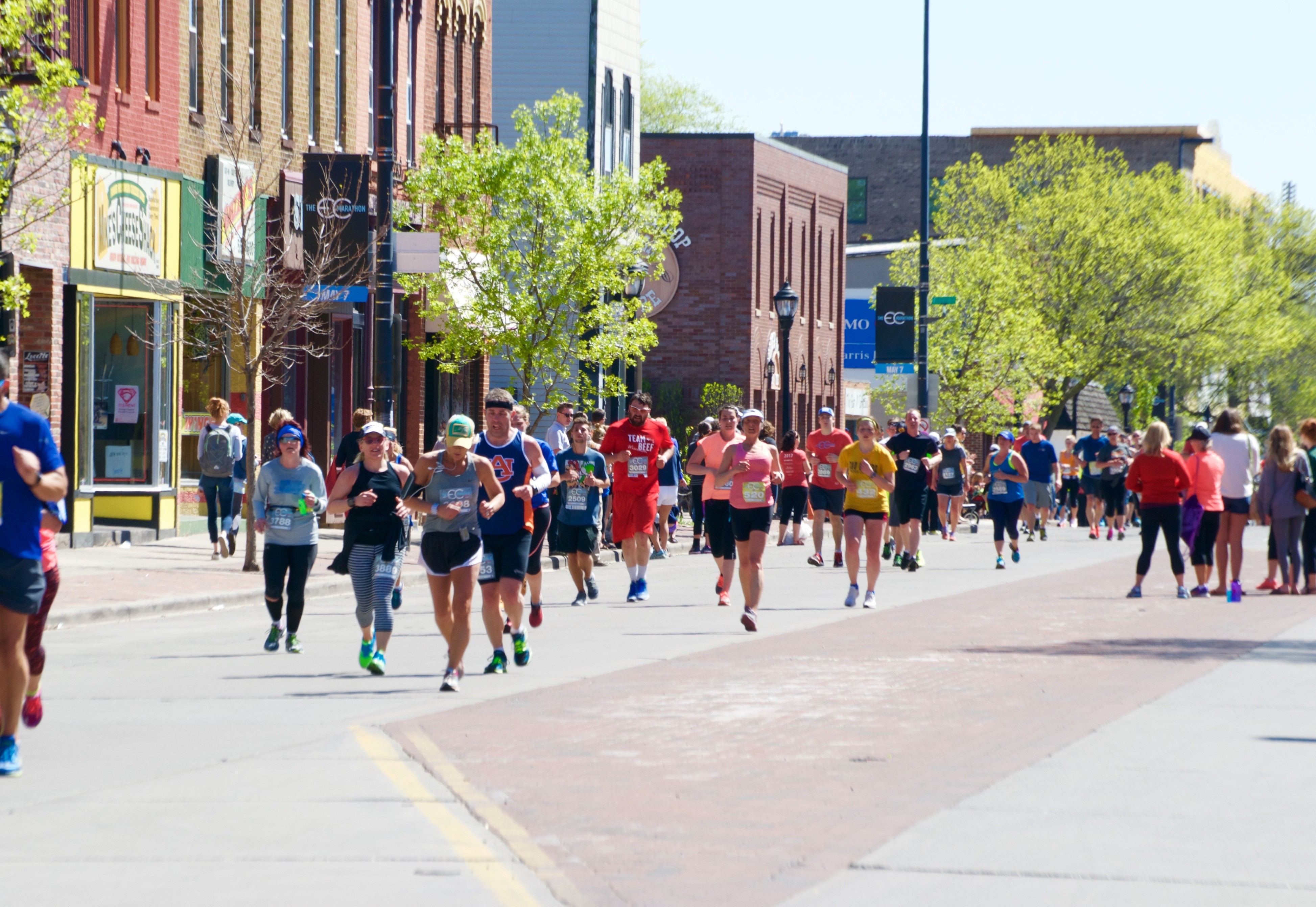
They are offering a $21 credit for next year's marathon for those who don't want to run it virtually, and say they have been trying to figure out how to give runners options.
"We wanted to do offer something," said race director Emi Uelmen. "So, you can either run with us virtually, you could transfer it to somebody else. We did a partial credit toward next year. Or if somebody can't run, doesn't want to run, and wants to just give it as a donation we'll give it to one of those charity groups."
However, some runners feel if the race isn't happening in-person, they should have the option of getting their money back.
"What they're selling is the experience, not just running outside. That's free all the time," said Jillian Erickson, an Eau Claire native and long-standing marathon participate. "Those who chose to forgo the marathon this year should be reimbursed."
One other downside to a virtual race - Uelmen said that this year's virtual race will not be a qualifier for the Boston Marathon.
(07/16/2020) ⚡AMPby Rebecca Fiala
Eau Claire Marathon
The Eau Claire Marathon is a USATF certified, Boston Marathon qualifying race. Since 2014, over 250 Eau Claire Marathon runners have qualified for the Boston Marathon. All races start and finish in Carson Park, a 134 acre peninsula surrounded by Half Moon Lake. As you exit the park, you will cross the first of 11 bridges. Making your way through...
more...Kenya’s Rosemary Wanjiru scorches to convincing 10,000m victory in Abashiri
Ten days after opening her 2020 track campaign with a 5000m win in Fukagawa, Kenya’s Rosemary Wanjiru was once again victorious, this time over 10,000m, on Wednesday (15) in Abashiri at the third meeting in the Hokuren Distance Challenge series.
The 25-year-old finished 45 seconds ahead of her nearest rival, Japan’s Mao Ichiyama, to win in 30:38.18, just three seconds shy of the PB she set when finishing fourth over the distance at last year’s World Championships in Doha.
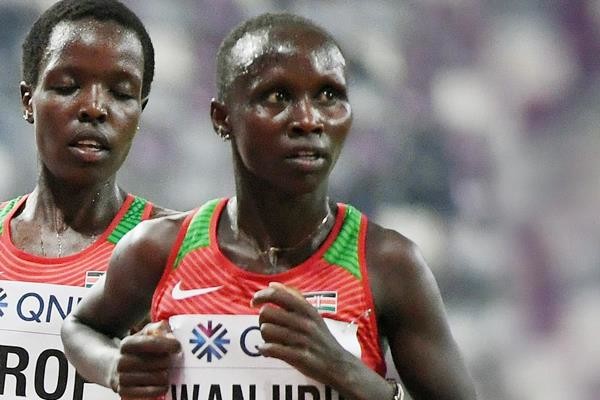
Wanjiru led from the outset and after just a couple of laps had only two other women for company: Japan’s Mao Ichiyama and Mizuki Matsuda. After covering the first kilometer in 3:08, Wanjiru started to gradually increase the pace.

Ichiyama, who earned selection for Japan’s Olympic team after winning this year’s Nagoya Marathon in 2:20:29, started to lose contact with Wanjiru about 10-and-a-half minutes into the race. Wanjiru, meanwhile, was locked into 3:04-3:05 kilometer pace, reaching the half-way point in 15:24.
She covered the second half even quicker and, increasing her winning margin with each lap, crossed the finish line in 30:38.18. Needless to say, in a year with very few competitions, Wanjiru’s time is a world-leading mark. Although it was close to her track PB, Wanjiru has clocked 29:50 – the third-fastest time in history – on the roads.
Running alone for the final six kilometers, Ichiyama held on to second place and was rewarded with a PB of 31:23.30.
Jonathan Ndiku, best known for his steeplechase exploits, won the men’s 10,000m ‘A’ race in 27:23.47. The two-time world U20 steeplechase champion finished comfortably ahead of fellow Kenyans Alexander Mutiso (27:44.37) and Richard Kimunyan Yator (27:49.35). Yuma Hattori, who has also been named on Japan’s Olympic marathon team, was fourth in 27:56.32, taking 13 seconds off his PB from five years ago.
Elsewhere in Abashiri, world U20 champion Nozomi Tanaka – who last week set a Japanese 3000m record of 8:41.35 – won the women’s 5000m in 15:02.62, beating Kenya’s Hellen Ekarare (15:03.09). Benard Kibet Koech, meanwhile, won the men’s 5000m in 13:11.77.
(07/16/2020) ⚡AMPFaxon Law Fairfield Half Marathon will go virtually due to COVID-19 concerns
Organizers have announced that the Faxon Law Fairfield Road Races, consisting of a half marathon, 5k and kids fun run, will be held virtually this year due to concerns about the pandemic.
The event, traditionally held at Jennings Beach in Fairfield, had already been moved from June 7 to Sept. 20. Now, runners will have the opportunity to compete on their own accord between Sept. 17-20.
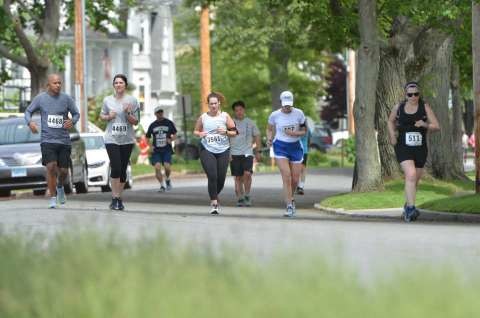
“As much as we would like to be running with you at Jennings Beach this year, the health and safety of our athletes, volunteers, staff, spectators, and sponsors is our number one priority, and with the current health crisis, we cannot completely guarantee a safe event,” John Calandriello, president of the Fairfield Half Marathon, said on the event website. “The decision to transform to a virtual event was not an easy one, but a necessary (step) to ensure the safety of all involved.”
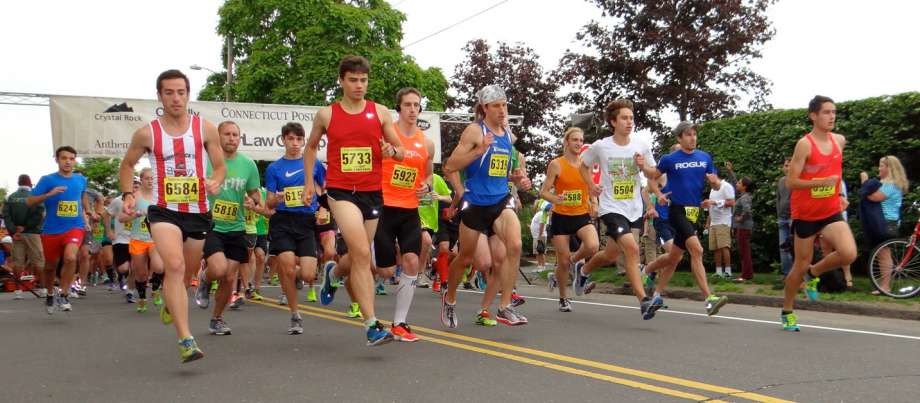
Virtual racing has become a primary means of competition during the pandemic . Runners race on their own time and at their own location. Once the required distance is reached, they self-report their results into a database.
With social distancing a priority, many other races around Connecticut have adopted this same format, including the Faxon Law New Haven Road Race, scheduled from Sept. 4-7, and the Hartford Marathon, Oct. 8-11.
Registration can be completed online at fairfieldhalf.org.
(07/15/2020) ⚡AMPby Doug Bonjour
Faxon Fairfield Half Marathon
The Fairfield Half Marathon was founded in 1981 and is annually chosen by running magazines as one of the best races in America. Since its inception the event has raised funds for numerous charities. The Fairfield Fire Department and the Town of Fairfield have supported the event from the beginning providing many in kind services; from traffic and emergency services...
more...Former world marathon record holder Wilson Kipsang's athletics career could be as good as over
The decorated 38-year-old policeman has basically achieved what any budding athlete can dream about: A world marathon record, an Olympic marathon medal, one World Marathon Majors (WMM) Series title and five victories to his credit in the WMM series, just to mention but a few.
However, his athletics career, stretching back over 15 years, could end in disgrace after he was on Friday handed a four-year ban for anti-doping rules violation.
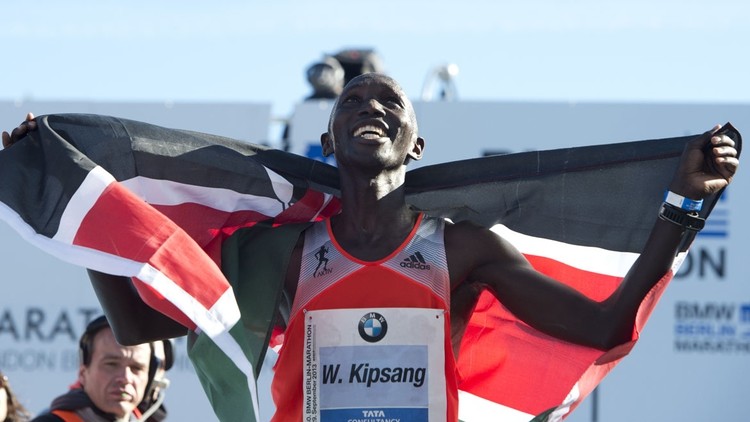
The World Athletics Disciplinary Tribunal disclosed that it has banned the long-distance runner with effect from January 10 this year for his whereabouts failures and “tampering by providing false evidence and witness testimony.”
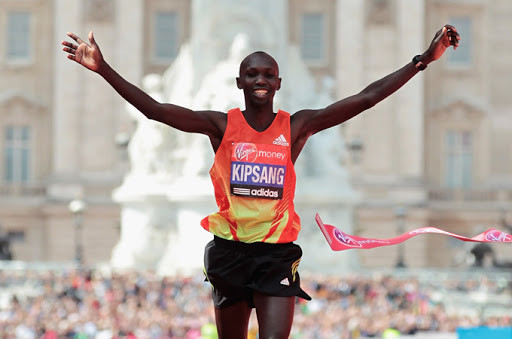
World record.- Kipsang had on January 10 this year been flagged and provisionally suspended by the Athletics Integrity Unit (AIU) for whereabouts failures.
Kipsang claimed the world record when clocking two hours, three minutes and 23 seconds at the 2013 Berlin Marathon.
He won the London Marathon in 2012 and 2014, when he also won in New York, and also claimed bronze at the 2012 London Olympics.
His exploits saw him win the 2013/2014 WMM Series.
Kipsang joins the 2016 Rio Olympic Games marathon champion Jemimah Sumgong on the list of prominent Kenyans suspended.
Sumgong was suspended in 2017 for four years for doping but the ban was later doubled to eight years in 2019 after she lied and fabricated her medical records.
Three-time Boston marathon champion Rita Jeptoo is also another top Kenyan banned for using prohibited substances.
(07/15/2020) ⚡AMPby Ayumba Ayodi
2020 Philadelphia Marathon Cancelled due to the pandemic
Today at a news conference on COVID-19, Mayor Kenney formally announced that in an effort to slow the spread of coronavirus, all large, public events will not be permitted through the end of February 2021.
For all you runners out there, the announcement means this year’s fall races like the Philadelphia Marathon, the Rock ‘n’ Roll Half Marathon, and the Broad Street Run, which had already been rescheduled from this Spring to October, will not be able to proceed as planned. (It also means no Mummer’s Parade or Thanksgiving Day parade.)
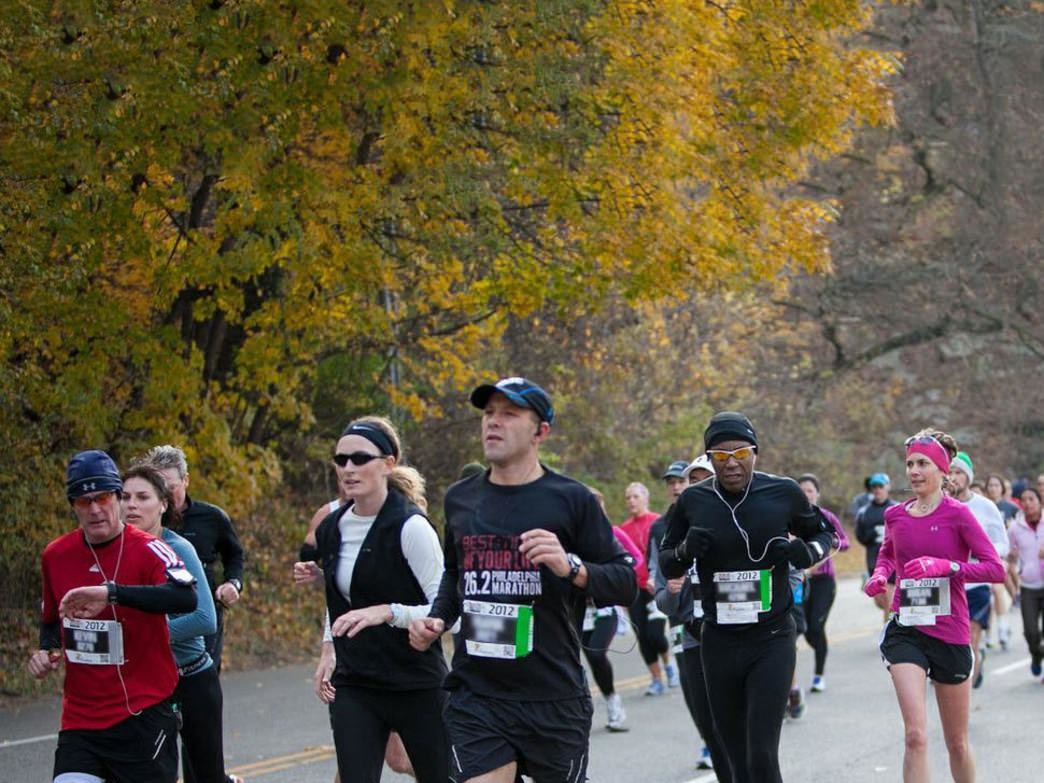
The Philadelphia Marathon weekend, which was slotted for the weekend of November 20th to 22nd, is cancelled.
“Obviously it’s a sad day when we have to cancel the marathon weekend of events. It’s been gaining momentum the past three years,” Leo Dignam, Executive Director of the AACR Philadelphia Marathon, told us over the phone this afternoon, “Before the pandemic hit we were up 15 percent over last year’s numbers, which were up 10 percent from the year before. We’re sad that this had to happen, but the city is being as careful as possible to make sure we don’t create a situation where the virus spreads. And, obviously an event with 35,000 runners and 60,000 spectators is a place where it could spread.”
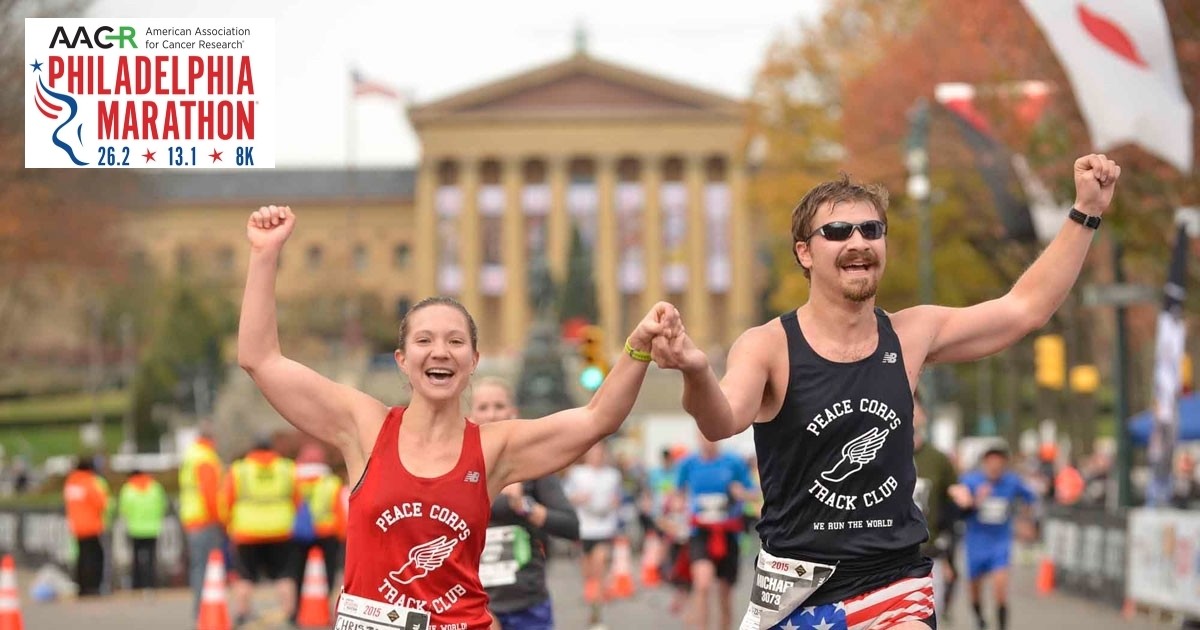
To handle the cancellation, the Philadelphia Marathon will allow runners to have their choice of deferring their spot to the 2021, 2022, or 2023 marathon, or a refund, which may be donated to the American Association for Cancer Research.
While the 2020 Philadelphia Marathon series of events is cancelled, the 2020 Broad Street Run is going virtual — with some serious modifications for safety.
“This year the virtual Broad Street will be run over a three-week period, from September 12th to September 28th, since there are so many people involved,” Dignam explained. “All of the runners will get their tech shirt, their medals, running Buffs in lieu of a mask, and hand sanitizer.”
In addition to tech shirts, medals, Buffs, and hand-sanitizer, this year’s crop of virtual Broad Street runners will also get a 20 percent discount on 2021 entry fees, as well as guaranteed entry into the 2021 Blue Cross Broad Street Run, without having to enter the lottery. Which is, all in all, a pretty nice package for participants from the folks at the run, even if we’ll all miss race day this year.
(07/15/2020) ⚡AMPby Gina Tomaine
Manchester Marathon 2020 cancelled due to the ongoing coronavirus
After careful consideration, the difficult decision has been taken to cancel the Manchester Marathon due to take place on Sunday 11th October.
The ongoing uncertainty around restrictions relating to COVID-19 has made confirming the necessary arrangements impossible at this time. We apologize to the many of you who were looking forward to running in this much loved event, but it was important to us a decision was taken in good time before runners stepped up their training to longer distances.
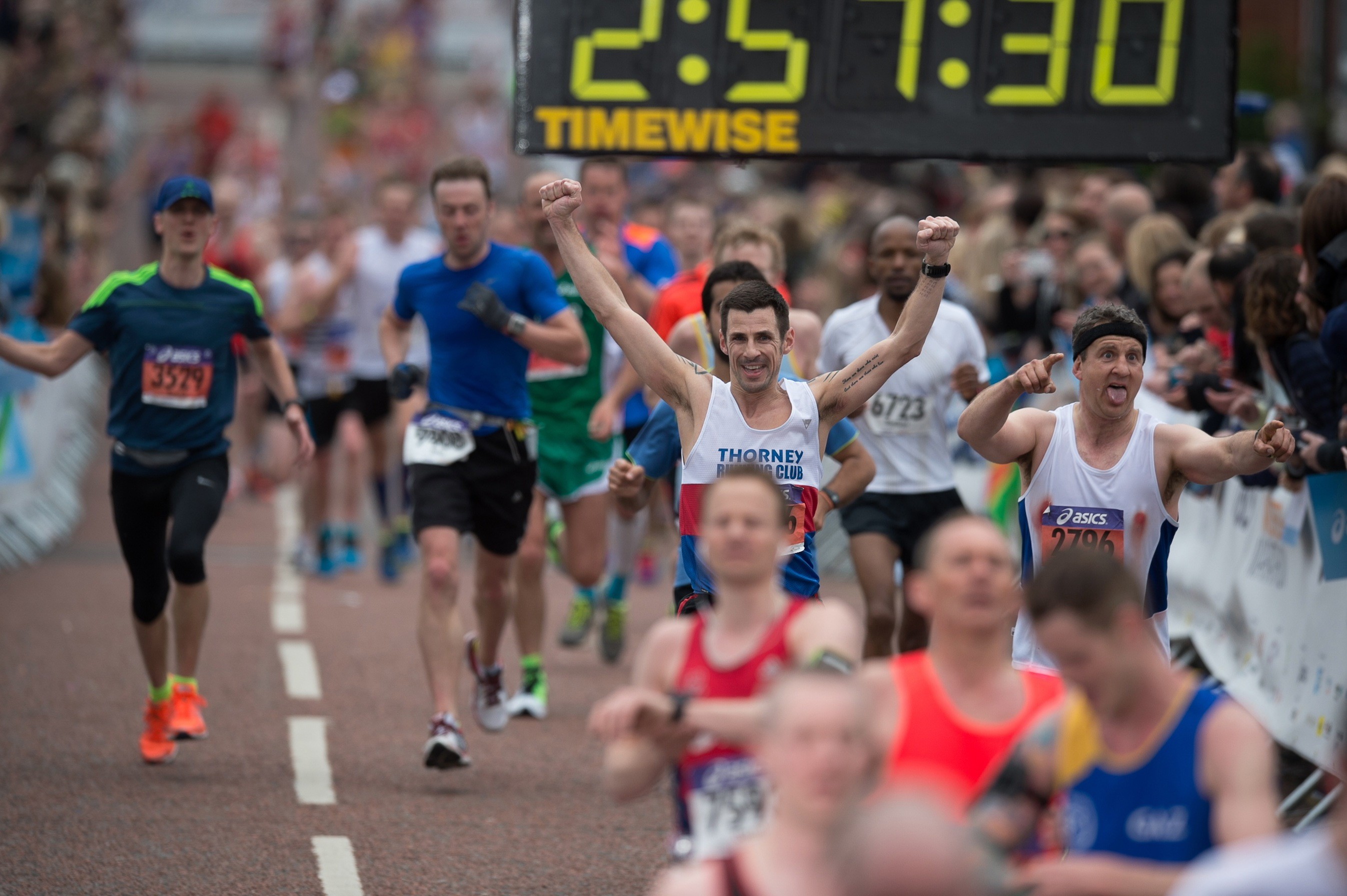
We look forward to welcoming runners back to the Manchester Marathon when the event takes place on Sunday 11th April 2021. We are working closely with our wonderful stakeholders to ensure the best event yet. We are also working alongside other event organizers, Public Health England, and the Department for Digital, Culture, Media and Sport to put any necessary measures in place for the return of one of Europe’s favorite marathons. Those who were due to run in either the Manchester Marathon, or Tommy’s Manchester Half, have been emailed directly with further information.
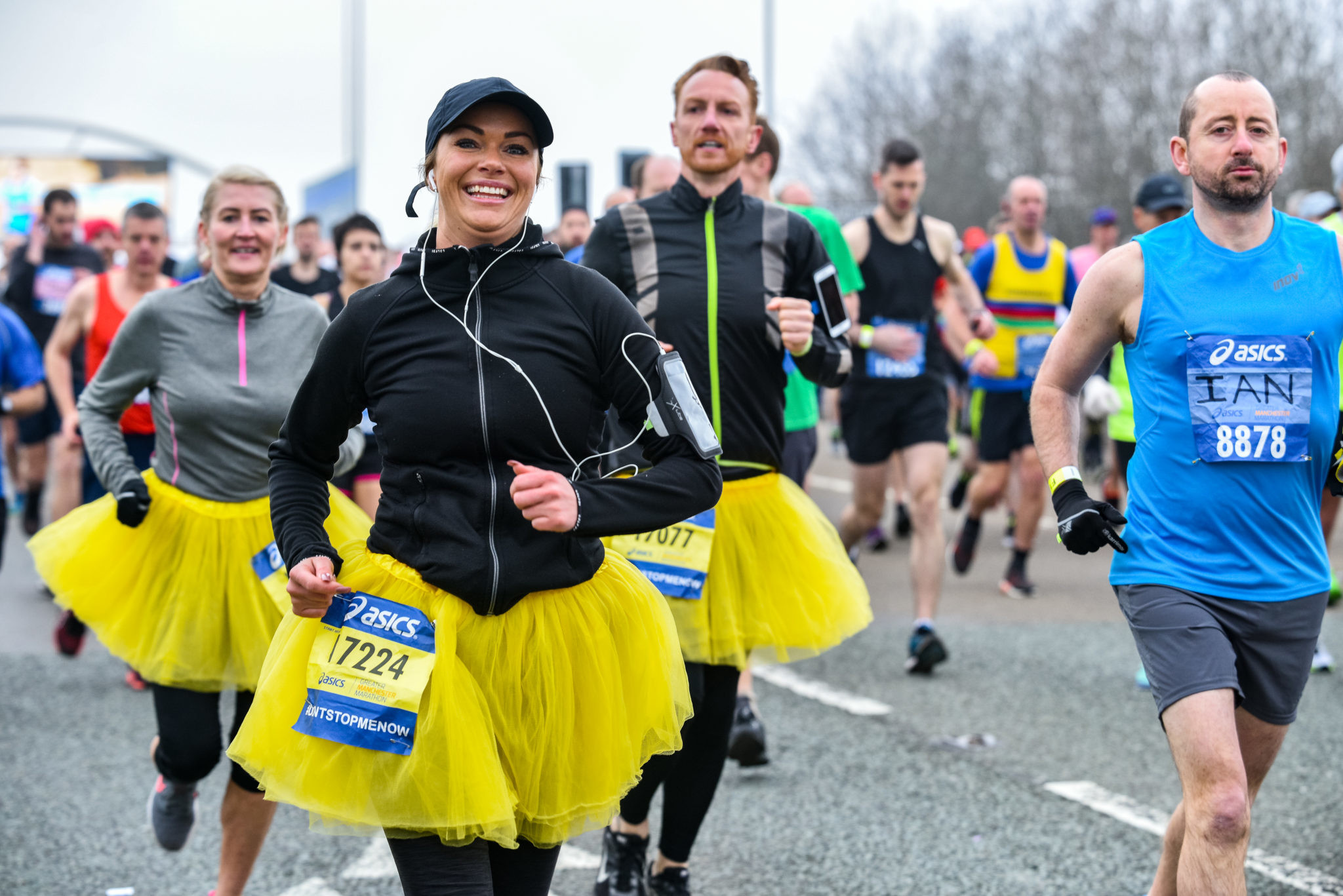
We are pleased to say that we will be offering runners the opportunity to earn a Manchester Marathon 2020 finishers’ medal and t-shirt through a virtual challenge later this year. Keep an eye on the website and your inbox for further details.
At this time we would like to take the opportunity to thank our wonderful runners for their patience whilst solutions were sought, and also our team for their hard work to try and get the event on. We’ll be sharing more updates about the 2021 Manchester Marathon in the coming months, but in the meantime stay safe, and we hope to see you as soon as possible.
(07/14/2020) ⚡AMPManchester Marathon
We pride ourselves on welcoming all to take on our 26.2 mile challenge, from some of the world's greatest elite runners, to those who thought completing a marathon would never be possible. Many regular runners find this the ideal event to get a personal best time, whilst everybody finds the incredible Mancunian support throughout the course unforgettable. ...
more...The Scotiabank Toronto Waterfront Marathon, set to take place on Sunday October 18th has been cancelled, making a transition to a virtual race
Working closely with the City of Toronto and Mayor John Tory, event organizers Canada Running Series have made the decision to cancel the international event that generates $35 million in economic impact annually, due to COVID-19 related health and safety concerns.
"Sadly, we have reached a point where it is clear we will not be able to bring a mass event of 25,000 people from more than 75 countries, safely to downtown Toronto this October, and have officially canceled the 2020 in-person event," said Race Director Alan Brookes. "We have shared so many unforgettable moments over 30 years at this race and are enormously disappointed. We greatly appreciate the support and understanding of the community and are pleased to announce that we will be transitioning to a virtual event this year, to continue to offer the best possible running and fundraising goals in these challenging times."
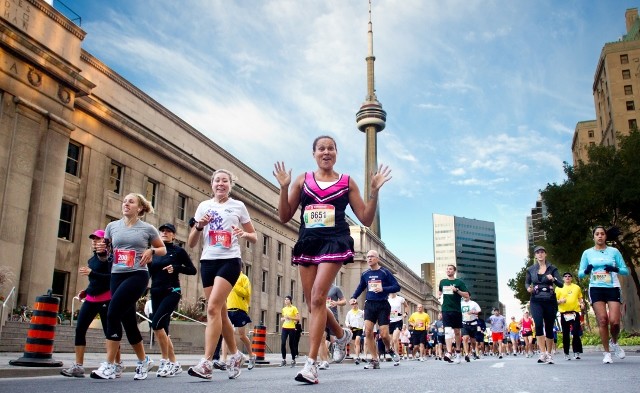
"Although, this year’s Scotiabank Toronto Waterfront Marathon will not be taking place in person, I want to thank Canada Running Series for putting the health and safety of spectators, runners and volunteers first by organizing a virtual event," said Mayor Tory. "The virtual race this year presents a great opportunity to train and stay active throughout the summer and into the fall. I encourage residents to participate this year or to cheer on all the participants who are raising money for over 150 charity organizations in our community through the Scotiabank Charity Challenge. I know I speak for Torontonians across this city when I say I look forward to 2021 when we can come together again and celebrate our vibrant city."
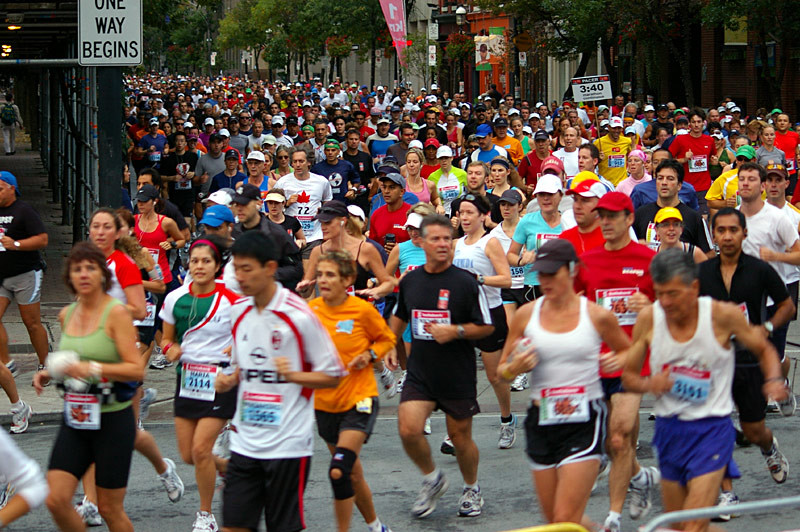
"Every year, the Scotiabank Toronto Waterfront Marathon brings people together from around the world to raise millions of dollars for charity," said Doug Ford, Premier of Ontario. "While there are a few changes to the run this year that put everyone’s health and safety first, it’s more important than ever to find ways to support those who might be in need during these unprecedented times. I encourage everyone to participate in this community-building event if they can, and support a great cause."
All currently registered runners have been contacted with information regarding their 2020 registrations. New runners who want to sign-up for the Scotiabank Toronto Waterfront Marathon Virtual Race can do so starting today at STWM.ca. The virtual event includes two new distance options: a four-person marathon relay and a 10K as well as the traditional marathon, half marathon and 5K.
The virtual event will be supported by a training program from Running Room and New Balance, who will also be designing official race merchandise. Participants will be invited to stay connected online in a variety of ways including bi-weekly Facebook Live get-togethers, a new running podcast and Spotify playlists to motivate them on training runs.
Unchanged, participants can sign up to fundraise for one of the race’s official charity partners in the Scotiabank Charity Challenge. In 2019, participants raised over $3.5 million for 190 community charities. Every Dollar Helps. We encourage those in the position to do so, to support our charitable partners, who need our help now more than ever.
"Since 1990, like running itself, we’ve had good days and bad days" reflected Brookes. "We’ve learned to bear down and overcome injuries, illness, a multitude of setbacks and adversity. And now we have COVID-19" said Brookes. "But our community is made of sterner stuff: dedicated, determined, courageous and strong. Together, we will prevail and return to the races that are beacons of solidarity and joy in our country and our lives."
The Scotiabank Toronto Waterfront Marathon Virtual Race will take place between October 1st and 31st 2020. Online registration is open now at STWM.ca.
(07/14/2020) ⚡AMPTCS Toronto Waterfront Marathon
The Scotiabank Toronto Waterfront Marathon, Half-Marathon & 5k Run / Walk is organized by Canada Running Series Inc., organizers of the Canada Running Series, "A selection of Canada's best runs!" Canada Running Series annually organizes eight events in Montreal, Toronto and Vancouver that vary in distance from the 5k to the marathon. The Scotiabank Toronto Waterfront Marathon and Half-Marathon are...
more...Organizers of the Herculis EBS Meeting have confirmed five more world champions who are set to compete at the Wanda Diamond League fixture in Monaco on 14 August
Katarina Johnson-Thompson, the world champion in the heptathlon, will compete in the high jump, her best individual discipline. Hellen Obiri, the world champion in the 5000m, will race over that distance in the Principality.
Conseslus Kipruto of Kenya, the world and Olympic champion in the the 3000m steeplechase, will headline that event, always a popular fixture in Monaco. Another middle distance star announced is HalimahNakaayi of Uganda, the surprise 800m champion in Doha last year.

Organizers also announced the Noah Lyles, the world 200m champion, will headline his favorite event.
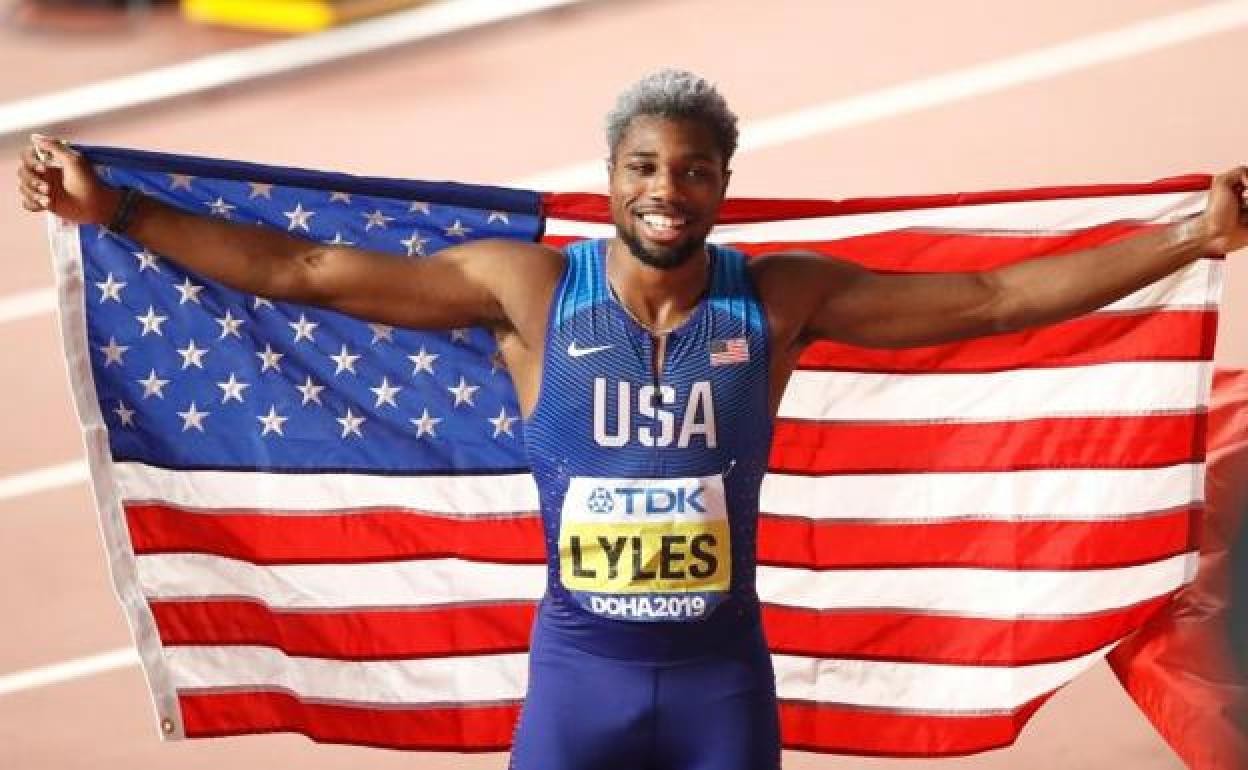
Others on the slate include world pole vault record-holder Armand Duplantis; Laura Muir of Great Britain, who will race over 1000m; and Germany's Konstanze Klosterhalfen, the European indoor 5000m record-holder.
All three of Norway's Ingebrigtsen brothers, Henrik, Filip and Jakob, are also on the slate. It wasn't immediately announced which distance they would race. The men's programme includes both the 1500m and 5000m.
(07/14/2020) ⚡AMPby World Athletics
The 2020 Chicago Marathon has been canceled
For the second time in its history, the Chicago Marathon has been canceled before runners cross the starting line. Organizers on Monday announced the 43rd running of the race, scheduled for Oct. 11, will not proceed because of the coronavirus pandemic.
The Bank of America Chicago Marathon typically draws about 45,000 runners and wheelchair athletes to the city, with a record 45,786 finishers in 2019 from 50 states and more than 100 countries. Organizers estimate about 1.7 million spectators annually line the 26.2-mile course that starts and ends near Grant Park and travels as far north as Wrigleyville and as far south as Bridgeport.

Registered participants can receive a refund for their race entry or defer their place and entry fee to the 2021, 2022 or 2023 race. Registered runners for the International Chicago 5K will have the same options.
“The Chicago Marathon is our city’s beloved annual celebration of more than 45,000 runners, as well as tens of thousands of volunteers, spectators and city residents, all of whom come together race weekend as one community here in our city,” Mayor Lori Lightfoot said in a statement. “Like all Chicagoans, I’m personally disappointed that this year’s event won’t take place as originally planned; however, we look forward to welcoming all runners and their cheering squads once again when the Chicago Marathon returns to our city in full force for another very exciting race.”
Organizers are developing plans for a virtual race experience.
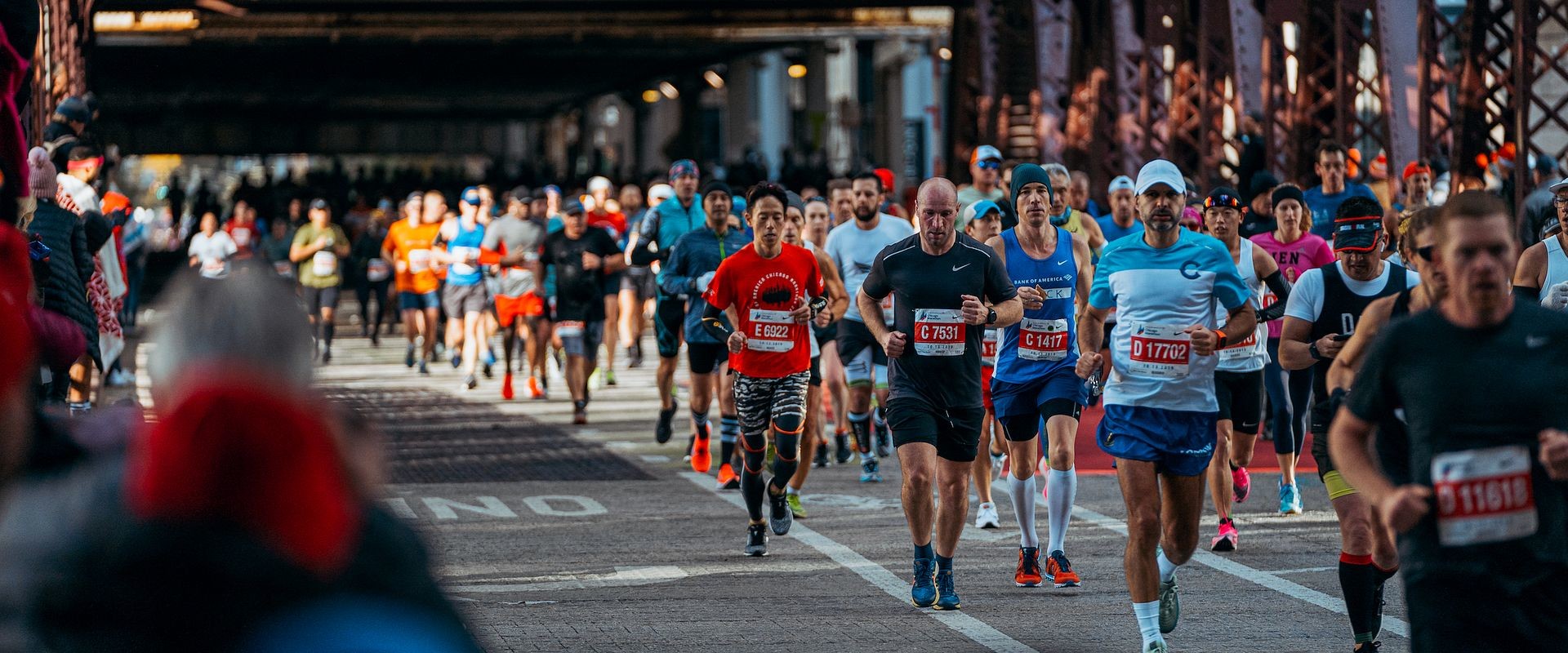
“Our highest priority has always been the safety of our participants and our volunteers,” race director Carey Pinkowski said in a statement. “We understand the disappointment, but when we return to the streets of Chicago, it will be a celebratory moment and an uncompromising statement about the collective spirit of who we are as a running community: We are powerful, we are persistent, and we will reach the finish line again.”
The Chicago Marathon is one of six Abbott World Major Marathons, along with Tokyo, Boston, London, Berlin, and New York. Only elite marathoners and wheelchair athletes were allowed to compete in the March 1 Tokyo Marathon.
Boston, originally scheduled for April 20 and rescheduled for Sept. 14, was canceled for the first time in its 124-year history on May 28. Organizers instead will make it a virtual race, giving finisher’s medals to participants who prove they ran 26.2 miles.
London was postponed from April 26 to Oct. 4. Berlin, slated to run Sept. 27, was canceled in April. New York, originally scheduled for Nov. 11, was canceled on June 24.
The Chicago race is a major fall tourist event. Organizers estimated in 2019 that the race has a $338 million economic impact annually on the city.
The only other time the Chicago Marathon didn’t start was in 1987, when sponsor Beatrice Foods withdrew its support. Organizers held a low-budget half-marathon with about 3,000 runners instead.
The first Chicago Marathon took place Sept. 25, 1977, as the Mayor Daley Marathon and had more than 4,200 runners.
In the 42nd running in 2019, Lawrence Cherono and Brigid Kosgei, both of Kenya, won the men’s and women’s races. Cherono finished in 2 hours, 5 minutes, 45 seconds. Kosgei broke the women’s world record by finishing in 2:14:04.
(07/13/2020) ⚡AMPBank of America Chicago
Running the Bank of America Chicago Marathon is the pinnacle of achievement for elite athletes and everyday runners alike. On race day, runners from all 50 states and more than 100 countries will set out to accomplish a personal dream by reaching the finish line in Grant Park. The Bank of America Chicago Marathon is known for its flat and...
more...After a four-month break due to the Covid -19, the country’s senior athletes got their chances to be back on track at the Ashenheim Stadium at Jamaica College on Saturday
Despite windy conditions which affected the track events all afternoon, the athletes showed little rust in putting on creditable performances, with World champions Shelly-Ann Fraser-Pryce and Tajay Gayle leading the way.
Competing in a negative wind of 2.2 metres per second in Section Two of the women’s 100m, Fraser-Pryce, now representing Nike, outclassed her opponents to stop the clock at a world-leading 11.00 seconds to win the event. Sprintec Track Club’s Shashalee Forbes (11.49s), and MVP Track Club’s Anthonique Strachan (11.84s), of the Bahamas, were some way behind for second and third, respectively.
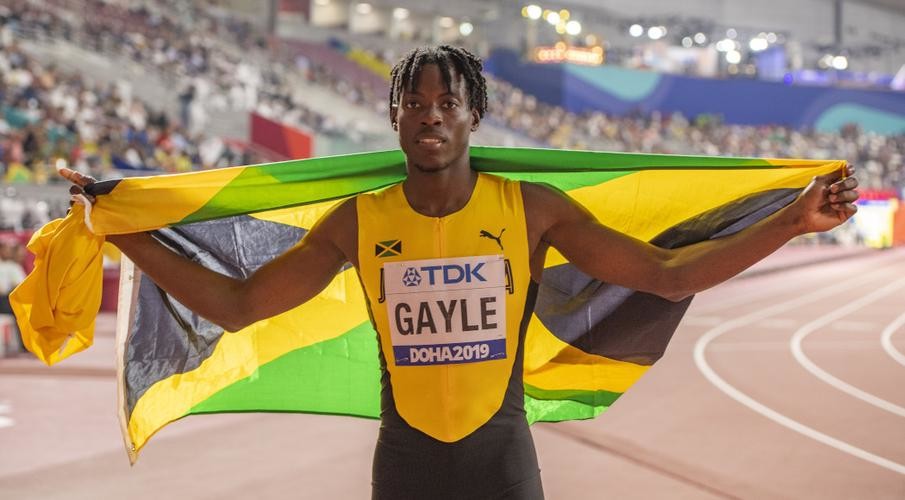
Gayle, the surprise gold medallist in the men’s long jump at the World Athletics Championships in Doha, Qatar, last year, used his first attempt of 8.52m, competing in a positive wind of 4.5 metres per second, to win the event. Teammate Ramone Bailey (7.54m), and The University of the West Indies’ Damon Williams (7.46m) took second and third, respectively.
One of the most competitive events on the day came in the women’s 200m, which included Olympic champion Elaine Thompson-Herah and World Championships 400m bronze medallist Shericka Jackson, who are teammates at MVP. Thompson-Herah used her scorching speed to take early control of the race, coming off the curve in front, but Jackson caught her late to win the event in 22.89s as Thompson-Herah was second in 22.98s. Forbes had another top-three finish after coming third in 23.45s. Here, the athletes competed in a negative wind of 2.2 metres per second.
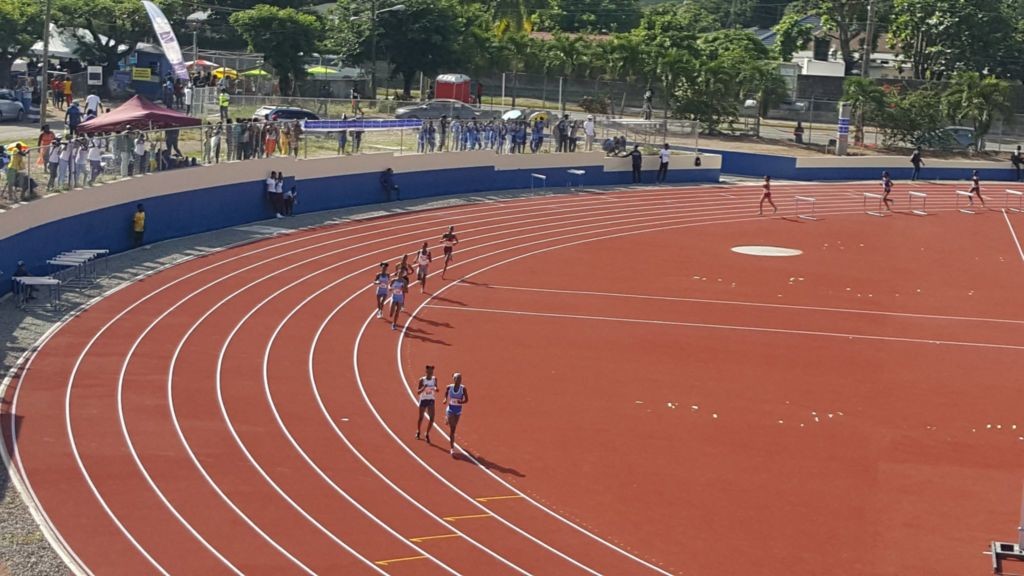
Meet organiser Bruce James said that everything went well on the day.
“It was a good day for the athletes and the officials, as we did our best to ensure that all (health) protocols were intact,” he said. “The Ministry of Health and the police were on hand to ensure that all procedures were followed.
“We had several new innovations in place, including the athletes not competing in numbers as it was all digital, and we did not use a call-room system. The athletes had to report straight to the start of their event at the time stated.”
James is hoping to put on another meet this Saturday but he will be waiting for approval again from the Ministry of Health and Wellness.
(07/13/2020) ⚡AMPby Raymond Graham
Francesca Muccini, the 2017 Vol State champion, is back on top after winning the run across Tennessee Vol State 500K crown in 82 hours
The Last Annual Vol State 500K ultramarathon across Tennessee began on July 9, and only three days later, the race saw its first two finishers cross the finish line in Castle Rock, Ga. First place went to Francesca Muccini, the 2017 Vol State champion, who finished the race in three days, 10 hours, 49 minutes and 40 seconds.
This is a women’s course record and the third-fastest time ever run at the event, regardless of gender. Second place went to Bob Hearn, who wasn’t far behind Muccini, finishing in three days and 12 hours.
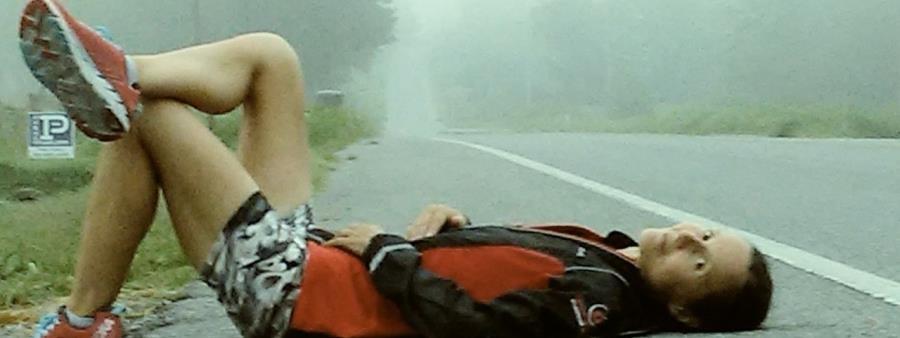
The Vol State is a Laz Lake event. Lake organizes many ultra races, including the Barkley Marathons, and they’re all mind-blowing. They’re long, they’re hard and they would make non-runners (and runners who prefer to stick to races that don’t go past 42.2K) shake their heads and ask, “How long did you say it was?” The Vol State fits that bill perfectly, and it’s exactly what ultrarunners around the world have come to expect from Lake. Its 500K course starts in Missouri, takes runners into Kentucky and then crosses over into Tennessee, where participants stay for the bulk of the race. In the final stretch, runners head into Alabama and then Georgia, where the race ends.
Runners have 10 days to finish the race, meaning they have to cover at least 50K per day if they want to make it to Georgia in time. There are no aid stations or volunteers along the course, but runners have the option of racing with a support crew (although some racers choose to run unsupported).
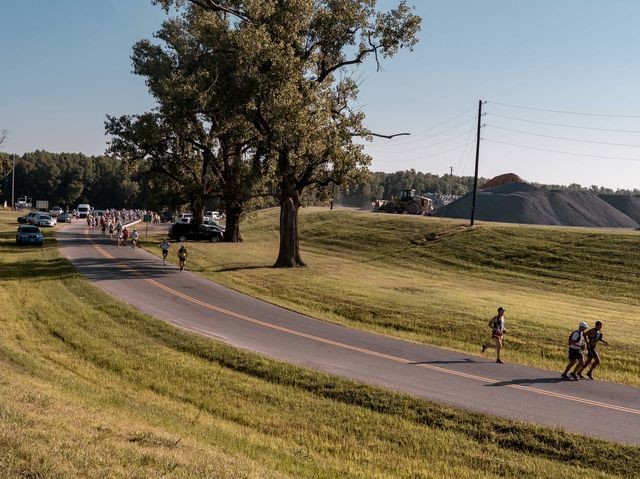
The fact that runners are given 10 days to finish this event and Muccini and Hearn did it in just over three is ridiculous. That means they averaged more than 140K per day as they worked across Tennessee. When Muccini won the race in 2017, she finished with a time of four days and four hours. She also raced the event in 2016, placing eighth overall and crossing the line as the top woman in a little more than five days.
This was Hearn’s first crack at the Vol State, but he’s no stranger to big results either. Earlier this year, he won a 100-mile race in South Carolina, and in 2019, he finished in second place at the Six Days in the Dome event in Wisconsin, where he ran 530 miles in less than a week.
The runners still working away at the Vol State course have more than five days to make it across Tennessee, into Alabama and then into Georgia to finish the race.
(07/13/2020) ⚡AMPby Ben Snider-McGrath
Organizers for the Austin Marathon and the 3M Half Marathon are here to help you train for the 2021 races with an all-virtual series of running events
The Run Austin Virtual Series aims to help runners build up to their next running goal and, perhaps, the 30th annual Austin Marathon on Feb. 14, 2021.
Each of the six virtual runs, scheduled monthly from July until December, features a unique distance and an Austin theme.
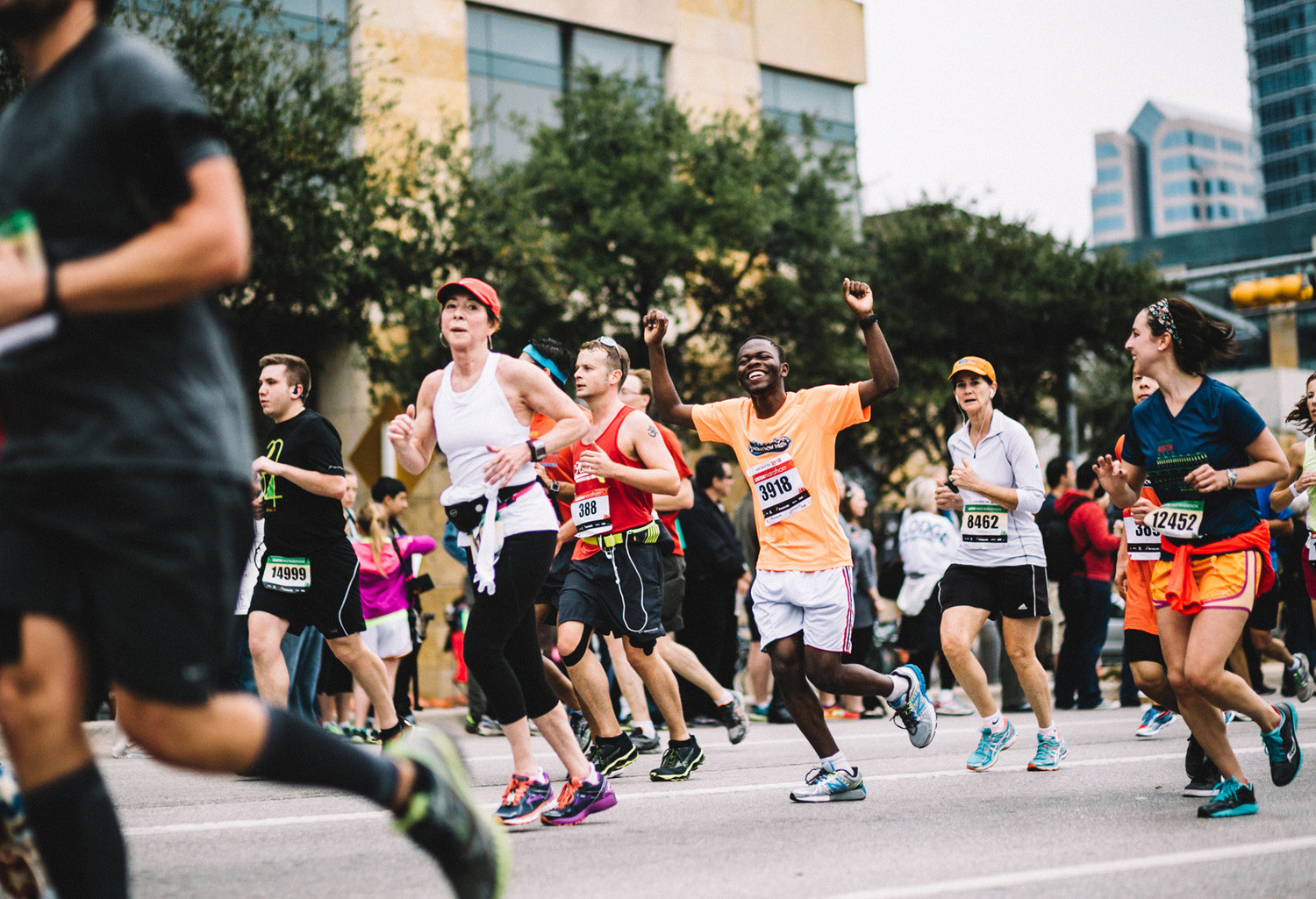
The virtual events are free to all Austin Marathon, Austin Half Marathon, 3M Half Marathon and KXAN Simple Health 5K participants. However, anyone can register online and run each event for $18.
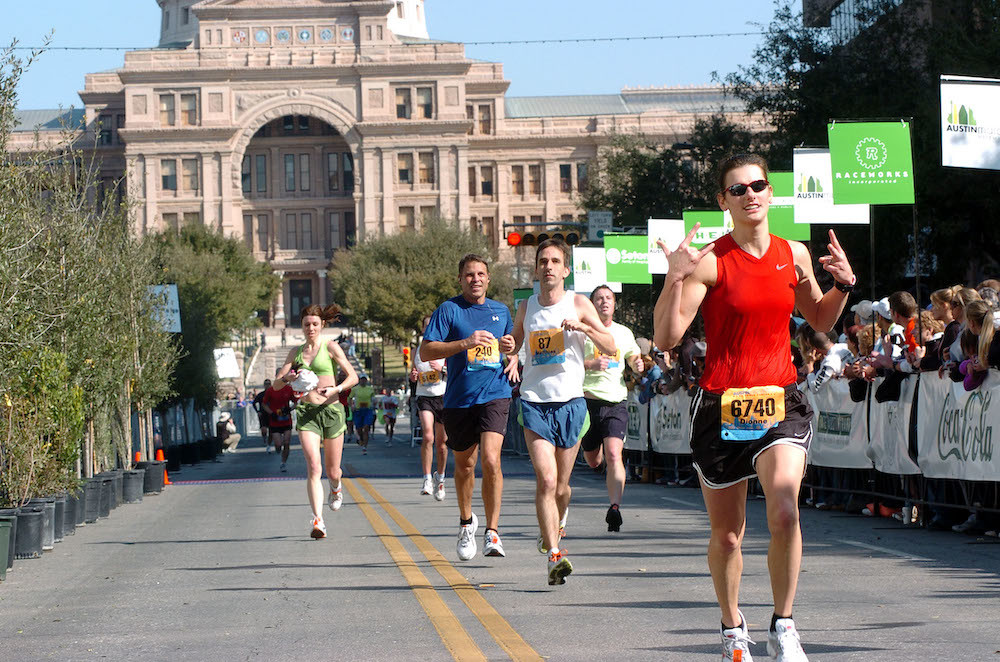
The six-event series starts in July with the Wildflower 1 Mile, pivots to the Armadillo 5K in August and wraps up with a 10-mile run in December. Organizers say future running themes will be revealed at a later date.
“The Run Austin Virtual Series is a great way for all runners to hold themselves accountable as they prepare to run Austin’s streets in 2021,” said Leo Manzano, Olympic silver medalist.
(07/13/2020) ⚡AMPby Andrew Schnitker
Austin Marathon Weekend
The premier running event in the City of Austin annually attracts runners from all 50 states and 20+ countries around the world. With a downtown finish and within proximity of many downtown hotels and restaurants, the Austin Marathon is the perfect running weekend destination. Come run the roads of The Live Music Capital of the World where there's live music...
more...Athens Marathon cleared to proceed as mass participation event in November
The Athens Marathon - and the postponed Athens Half Marathon - have been cleared to take place later this year, with social distancing restrictions.
The Marathon is set to be run on November 8, with the Half Marathon - postponed last March - currently scheduled for some 50 days earlier, on September 20.
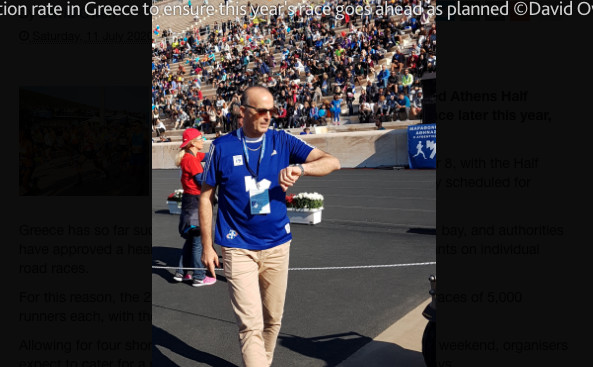
Greece has so far succeeded in holding COVID-19 relatively well at bay, and authorities have approved a health protocol putting a ceiling of 5,000 participants on individual road races.
For this reason, the 2020 Marathon will be split into two individual races of 5,000 runners each, with the second race starting an hour after the first.
Allowing for four shorter races taking place over the November 7/8 weekend, organisers expect to cater for a maximum 30,000 competitors over the two days.
There will be no invited foreign elite athletes; however, while the race will be smaller than usual - the 2019 race produced 17,000 finishers - non-Greek-based recreational runners can register, though they will be expected to abide by relevant travel restrictions that may be in force at the time of the event.
There will be no Marathon awards gala attached to this year’s race, but a symposium for race directors from around the world is still planned.
The pandemic has had a devastating impact on the 2020 road-running season, with half the races in the World Marathon Majors series – Boston, New York City and Berlin - cancelled and the Tokyo event in March significantly scaled back.
The London Marathon is still currently scheduled for October 4, although serious doubts remain over whether it will take place.
According to Makis Asimakopoulos, general manager of the Athens Marathon: "As far as the 2020 Athens Marathon - the authentic event is concerned, let me inform you that we are planning to hold it on 7-8 November, as originally scheduled.
"We have decided to do so, taking advantage of the very good job the Greek Government and people have done so far in dealing with the COVID-19 pandemic crisis."
Asimakopoulos told insidethegames that race organisers intended to "play our role, as the birthplace of the marathon, in restarting the cycle of mass participation marathon events internationally".
The Athens Marathon, first run as a sports event at the inaugural modern Olympic Games in 1896, retraces, as closely as feasible, the steps of Pheidippides, who is believed to have brought Athenians news of their against-the-odds victory over the Persians at the Battle of Marathon in 490 BC.
(07/12/2020) ⚡AMPAthens Marathon
The Athens Classic (authentic) Marathon is an annual marathon road race held in Athens, Greece, normally in early November. The race attracted 43.000 competitors in 2015 of which 16.000 were for the 42.195 km course, both numbers being an all-time record for the event. The rest of the runners competed in the concurrent 5 and 10 kilometers road races and...
more...Paris Marathon delayed again, until November 15
The Paris Marathon has been moved further back to November 15 due to the coronavirus pandemic, organisers announced.
The race had originally been rescheduled for October 18 from its traditional April date due to the Covid-19 outbreak.
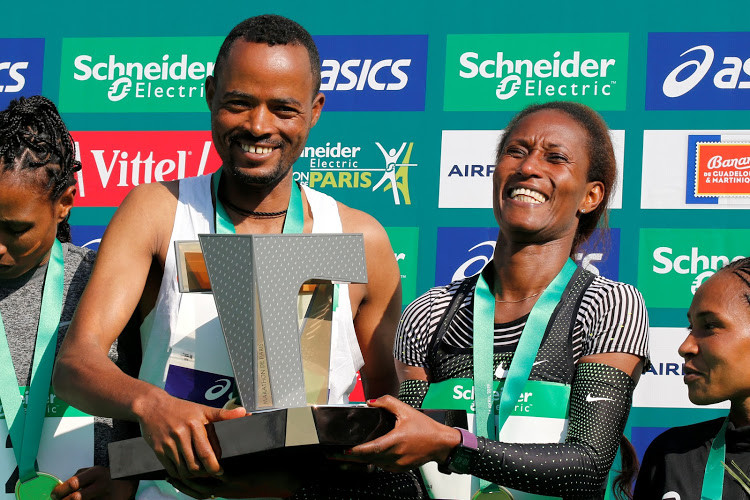
Last month, marathons in New York and Berlin set for later in the year were scrapped, while the races in London and Chicago remain on course for October 4 and October 11.
Ethiopa's Abrha Milaw won last year's men's edition in Paris while his compatriot Gelete Burka clinched the women's title.
(07/12/2020) ⚡AMPSchneider Electric Paris Marathon
The Schneider Electric Marathon de Paris offers a unique opportunity to make the city yours by participating in one of the most prestigious races over the legendary 42.195 km distance. The Schneider Electric Marathon de Paris is now one of the biggest marathons in the world, as much for the size of its field as the performances of its runners....
more...Postponed Prague Marathon Now Cancelled
The 2020 Volkswagen Prague Marathon, which had been postponed from May 3, to October 11 due to the COVID-19 pandemic, has now been cancelled. In addition two other important road races in Prague which are also organized by the Czech Republic’s most important race organizer RunCzech, the Sportisimo Prague International Half-Marathon and Birell Grand Prix, have also been cancelled. All three events had received World Athletics Gold Label status.
“We were ready with our races,†wrote RunCzech president Carlo Capalbo in an open letter to the runners and other stakeholders involved in his organization’s events. “Everyone was in place. Our team. Our volunteers. Our partners and suppliers. Everything was ordered and most of it in our warehouse. And then? COVID.â€
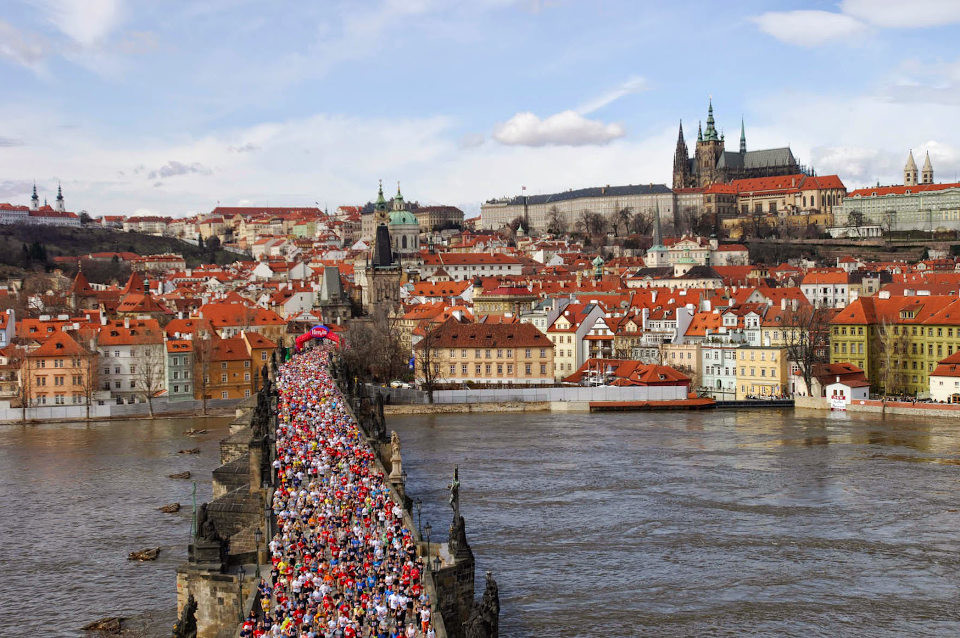
Capalbo continued: “We hoped against hope that autumn would be better. But it was not to be.â€
Large sporting events will not be permitted in the center of Prague, Capalbo explained, forcing the cancellations. He said that all registered runners will have the option to transfer their entries to the 2021 or 2022 editions of these events for no additional cost.
“The decision taken is extremely difficult for us,†Capalbo added. “But we take comfort knowing that Czech government officials had the foresight and the wisdom to take action designed to keep us safe. We take comfort knowing that our health care professionals were tireless and brilliant in helping to treat the virus. We take comfort knowing that when it hurts this bad we must be doing something good. And we take comfort knowing that we will run again.â€
The Sportisimo Prague International Half-Marathon, part of the international SuperHalfs race series, was originally scheduled for Saturday, March 28, but was then postponed until Sunday, September 6. The Birell Grand Prix, a 10-K with a women’s 5-K, was always scheduled for Saturday, September 5. Collectively, these events had 26,192 finishers in 2019, according to the Race Results Weekly Athletes Performance Database. The half-marathon was the largest event with 10,517 finishers.
Capalbo emphasized that RunCzech’s other races outside of Prague were still scheduled to happen on the revised schedule his organization issued earlier this year: the Mattoni Olomouc Half-Marathon (August 30), Mattoni Ústà Half-Marathon (September 19), Mattoni Karlovy Vary Half-Marathon (October 24), and Mattoni České Budějovice Half-Marathon (October 31).
These cancellations in Prague follow closely the cancellations of three of the running industry’s most important events: the Boston Marathon (postponed from April 20, to September 14, before being cancelled), the BMW Berlin Marathon (September 27) and the TCS New York City Marathon (November 1). Dozens of other fall road races have also been cancelled across the Americas, Europe and Japan including large and important events like the Great North Run Half-Marathon in England, Buenos Aires Marathon in Argentina, the Dam tot Damloop 10 Mile in the Netherlands, the Paris-Versailles 16-K in France, and the Osaka Marathon in Japan.
Capalbo, an Italian who has lived in the Czech Republic for decades, remains optimistic. “Very often, over the course of our 27-year history, when we’ve faced adversity, we’ve looked for inspiration from our guiding spirit, Emil Zatopek,†Capalbo wrote. “A man who famously said that when you feel like you can’t go on, ‘go faster.'â€
(07/12/2020) ⚡AMPby Let's Run
Pac-12 follows Big Ten in moving to conference-only schedule for fall sports
A day after the Big Ten announced it would play a conference-only schedule in all sports this fall, the Pac-12 voted to do the same Friday during a virtual meeting of athletics directors, university presidents and conference officials.
The Pac-12 CEO group's decision will delay the start of fall seasons, including football.

One of the reasons the Pac-12 decided to push back the start of the football season was a concern that UCLA and USC would not be ready to play in early September because of coronavirus cases in the Los Angeles area, sources told ESPN.
The Bruins were slated to open the season against New Mexico State at home on Aug. 29; the Trojans were scheduled to open against Alabama at AT&T Stadium in Arlington, Texas, on Sept. 5.
"USC AD Mike Bohn and I had multiple conversations over the last several months, and we were both planning on playing the football game on September 5 in Arlington," Alabama athletic director Greg Byrne said in a statement. "With the Pac-12's decision to move to a conference-only schedule, we will do our best to adjust. What that looks like is to be determined."
The Pac-12's decision to play only conference games means Notre Dame will not face USC for the first time since World War II. The Irish and Trojans have played each other every season since 1926 except for 1943-45 because of the war. Notre Dame will also lose its rivalry game against Stanford, which has been played every year since 1988, except for 1995 and 1996. Because of the Big Ten's decision, Notre Dame's contest against Wisconsin at Lambeau Field in Green Bay also won't be played.
The move also creates scheduling dilemmas for BYU and Hawai'i, which will both have to find new opponents for each of their first four games. As it stands now, neither school has a game scheduled until the first weekend in October. BYU was scheduled to play Utah, Michigan State, Arizona State and Minnesota the first four weeks and Stanford in the regular-season finale, and Hawai'i was slated to play Arizona, UCLA, Fordham (the Patriot League banned flying for the upcoming season) and Oregon.
"Obviously with three Pac-12 teams on our football schedule, today's decision affects us more than others," Hawai'i AD David Matlin said in a statement. "We are disappointed because not only were we looking forward to opening the season at Arizona, we were excited to host UCLA for the first time in over 80 years and renew a series with Oregon. However the decision was made in the best interest of student-athlete health and wellness and we support that and will move on accordingly with the rest of our schedule."
Colorado State, UNLV, Utah State and FCS program Portland State were all scheduled to play two games each against Pac-12 foes.
The decision also included men's and women's soccer, and women's volleyball, and the league said it was delaying the start of mandatory athletic activities "until a series of health and safety indicators, which have recently trended in a negative direction, provided sufficient positive data to enable a move to a second phase of return-to-play activities."
"The health and safety of our student-athletes and all those connected to Pac-12 sports continues to be our number one priority," Pac-12 commissioner Larry Scott said in a statement. "Our decisions have and will be guided by science and data, and based upon the trends and indicators over the past days, it has become clear that we need to provide ourselves with maximum flexibility to schedule, and to delay any movement to the next phase of return-to-play activities."
The Pac-12 announced later Friday that Scott had tested positive for the coronavirus.
The league said student-athletes who choose not to participate in intercollegiate athletics during the coming academic year because of safety concerns about COVID-19 will continue to have their scholarships honored by their university and will remain in good standing with their team.
"Competitive sports are an integral part of the educational experience for our student-athletes, and we will do everything that we can to support them in achieving their dreams while at the same time ensuring that their health and safety is at the forefront," said Michael Schill, the Pac-12 CEO group chair and president of the University of Oregon.
Officials from the ACC, Big 12 and SEC told ESPN on Friday that they probably will wait until the end of July to make a decision on scheduling for football this fall amid the coronavirus pandemic, if the season can be played. SEC athletic directors are scheduled to meet at the league's office in Birmingham, Alabama, on Monday. ACC officials also are scheduled to meet next week.
(07/12/2020) ⚡AMPSummer Running Challenge Combats Isolation
Athletic teams, no matter what the sports is, do not know what the fall season will bring. Will the student-athletes be back in school? Will Colonial Conference competitions resume?
The Haddonfield Memorial High School boys cross country team, however, isn’t waiting to find out. The runners are taking a unique approach to summer conditioning with a mileage challenge that is benefiting the area Interfaith Caregivers.
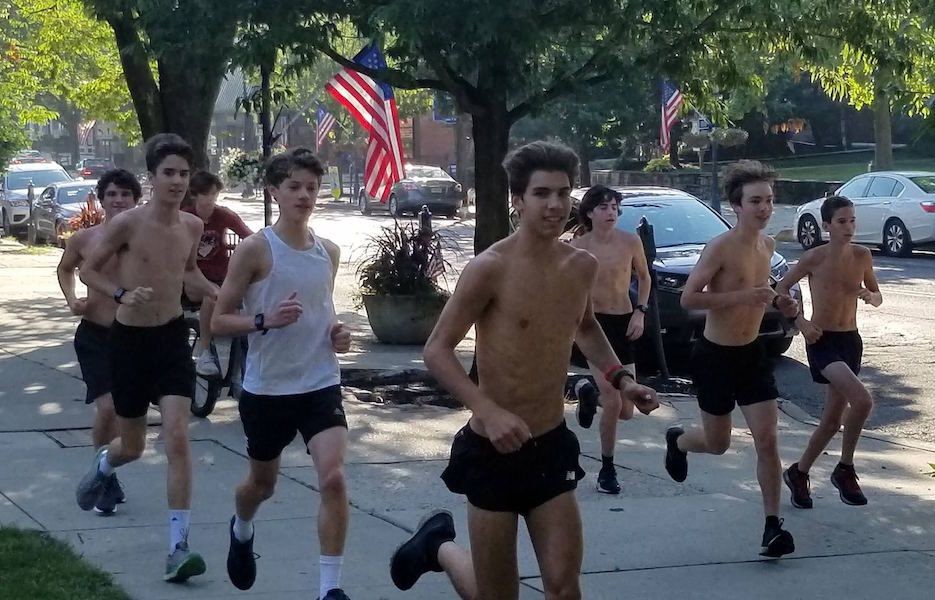
The team members are seeking pledges for each training mile they run during the month of July, with the goal of hitting 1,500 miles.
HMHS assistant coach Dave Stewart explained how the challenge came about.
"With everything that has happened, I think it became clear to everyone independently that ‘business as usual’ wasn’t really an option. It’s always been a great group of service-oriented kids, but we hadn’t really tried to tie in these impulses to our running,” said Stewart. "The captains, Caleb [Clevenger] and John [Hurly], were very strong on the idea of keeping support local, and aiding people who were greatly affected by the pandemic.
"But they also wanted something that would help re-energize and set goals for the team, who had trained all spring but pretty much without their teammates or coaches, and without the positive feedback you get from doing well in races. A few ideas were batted around but when Interfaith Caregivers was brought up it seemed like a perfect fit, since they fight against isolation for seniors at all times, but it’s a service that’s needed even more right now. And a mileage challenge would mean that they could support each other and contribute for the team, just like they would during a competitive season, should we ever get back to that.”
He added the entire coaching staff is proud of what the team is doing. Stewart is handling some of the paperwork and donations. The student-athletes, meanwhile, are the ones running the miles and logging them.
Stewart noted supporters of the team, Interfaith Caregivers, and the general community are all helping make the challenge a success.
"Right now, pledges are approaching $2 a mile, which would mean a donation of $3000 to Interfaith Caregivers, which I think exceeds expectations. That’s from a few dozen supporters, pledging anywhere from one to 10 cents a mile, all of which are welcome as are any other pledges, which we’ll accept through the end of the month,” said Stewart. "Now, the running part has been tough. 1,500 miles is definitely a stretch goal, especially with the brutal weather we’ve been having, and with a few people having nagging injuries that haven’t been able to contribute as much.
But ‘next man up’ has always been our team philosophy anyway, and we still have it in our sights.”
Doing summer conditioning and training is not new to these Haddonfield runners. Because the spring season was cancelled due to the pandemic, Stewart said the team took a break a little earlier than they would during a typical season. The mileage plan, however, is similar to what the runners would do during a normal summer.
"What we’re hoping to see is a lot of consistency throughout the team, since the runners who are maybe not competing for a varsity spot still know they’re contributing a lot to the team when they record their miles,” said Stewart. "And of course everything is still a great deal different than other years since we haven’t been able to meet personally with them since mid-March.”
In terms of the fall season, COVID-19 has already forced the cancellation of the Manhattan Invitational, which was scheduled to take place on Oct. 9. The status of other competitions are up in the air.
Talent-wise, Haddonfield graduated another exceptional senior class, but head coach Nick Baker has runners ready to fill the leadership roles.
Junior Seth Clevenger is a returning first team All-South Jersey selection. Seniors Caleb Clevenger, a First Team All-Colonial Conference honoree, and John Hurly are the new team captains.
Junior Tobias Janssen, who also earned First Team All-Conference, is back, too. Seniors Sean Eisenhower and Elijah Fernands are expected to be major contributors as well.
Juniors Ethan Wellborn and Andrew Sullivan along with sophomores George Andrus, Donnie Jellig, and Ian Romea are expected to fill key roles, as well.
Since the coaches have not been able to participate in the workouts as a result of COVID-19 protocols, Baker has relied on his senior captains to set the tone.
"John and Caleb have been doing an outstanding job of communicating and motivating the team during a difficult time. Summer training has always been the foundation of our cross country program and John and Caleb are making sure the guys are getting the work done,” said Baker.
Starting July 13, Baker, Stewart and the other coaches will be able to join in as part of phase 1.
At the same time, the Haddonfield runners will continue racking up those miles for a good cause.
For more information about the mileage challenge or to make a pledge, visit haddonfieldbulldogscrosscountry.com or email assistant coach Dave Stewart, dstewart@haddonfield.k12.nj.us, with the subject line "July Mileage Challenge” and the amount you’d like to pledge per mile. Pledges can be accepted any time through the month of July, and donations will not be collected until the challenge is over.
(07/12/2020) ⚡AMPMoh Ahmed Amazes with 12:47 5K (3:58 Final 1600) as Lopez Lomong Becomes 9th American Under 13:00
2019 World Championship bronze medalist Moh Ahmed is truly among elite company now. Running in the Bowerman Track Club Portland Intrasquad II meet, just minutes after Shelby Houlihan lowered her American record (14:23.92) at 5,000m, Ahmed clocked 12:47.20 to smash his Canadian record (12:58.16) on Friday night. He became the 17th man to run under 12:50 for 5,000 meters and moved to #10 on the world all-time list. As impressive as the time was, it was the way he did it — an incredible 3:58.59 final 1600, with each lap faster than the previous one (61.34-60.31-59.48-57.45) — that truly resonated.
So great was Ahmed’s run that he made Lopez Lomong’s 12:58.78 runner-up effort look downright ordinary by comparison — despite Lomong, the reigning US champion, becoming just the ninth American to join the sub-13:00 club.
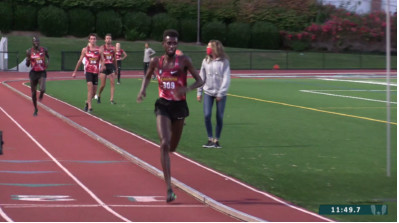
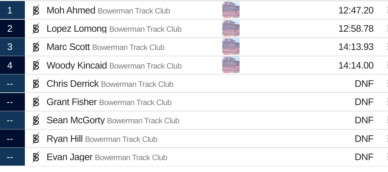
Afterwards, Ahmed said he really wanted to dip into the 12:40s, saying he saw the split with two laps to go (10:50.26) and thought “You can run 2:00.” Ahmed, who broke 13:00 for the first time last year, knew there was a big time gap between him and some of the other top guys in the world. Two years ago in Brussels, Selemon Barega ran 12:43, Hagos Gebrhiwet 12:45, and Yomif Kejelcha 12:46. Ahmed? He ran 13:03, which was then a PR.
“I saw those guys run 12:43 and how easy they made it look,” Ahmed said on the USATF+ broadcast.
Ahmed said he was “super nervous” before the race and despite running so fast said it’s been a “super challenging year.” “Right now I’m speaking to you, but I don’t know where the hell I am,” he told Paul Swangard.
Both Ahmed and Lomong benefited from some world-class pacemakers, with Bowerman Track club teammates Ryan Hill, Grant Fisher, and Evan Jager helping them through 1600 in 4:09 and 3200 in 8:18. Once the final pacer, Jager, stepped off at 3600, however, it was all Ahmed. This wasn’t exactly unfamiliar territory — Ahmed ran almost all of the way in last year’s fast Bowerman 5,000 in Beaverton that saw Woody Kincaid run 12:58. The question on many people’s minds that night was how fast Ahmed could have run had he stayed in the race. Tonight’s effort provided an answer of sorts.
(07/12/2020) ⚡AMPby Let’s Run
Runners and competitive hotdog eaters have more in common than you think
A closer look at the intersection between competitive eating and competitive running
When pondering the upper limit of how many hotdogs one person could possibly eat 10 minutes, James Smoliga, professor of physiology at High Point University in North Carolina, looked to running statistics for the answer. He told As It Happens host Nil Köksal on Thursday that running, specifically the trajectory of marathon world records, was a key inspiration for creating a mathematical formula to determine how many hotdogs a human can eat in 10 minutes.
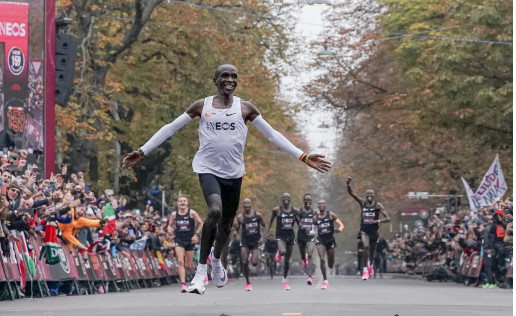
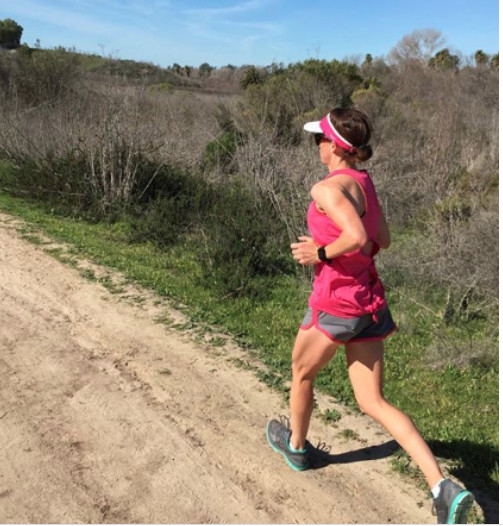
At first glance, the two pursuits have little in common, but Smoliga explained to CBC that the principles are, in ways, quite similar. “When I was reading some of the literature and some of the mathematical models trying to estimate these types of things … it occurred to me that the patterns that we see in track-and-field type of athletes … are actually very similar to what I suspected the Coney Island hotdog eating contest would reveal.”
He says the rate at which people can consume hotdogs has increased with a similar trajectory to how quickly people can run marathons.
It’s a combination of talent and training
As with any sport, the ability to scarf down 75 hotdogs in 10 minutes (the current world record) or run a marathon in under two hours, is a combination of talent and training – you can’t accomplish either feat without both. Not just anyone gets to become Eliud Kipchoge when they grow up.
As many have noted, Kipchoge trains with precision and purpose that’s unmatched by almost any other runner in the world. The best hotdog eaters would need to train their stomachs in a similar manner.
The way runners hypothesized about the sub-two hour marathon, hotdog eaters are thinking about the 84-dog barrier. Right now, it’s nine hotdogs beyond the world record, but like in running, Smoliga believes people will rise to the occasion.
It was only one year ago that a sub-two hour marathon still sounded like science fiction. Now that two men (Kipchoge and Kenenisa Bekele) have run under 2:02 in a race, and Kipchoge has run a world’s best of 1:59 – the sub-two hour marathon will become more common for the most elite.
Canadian women’s running has seen a similar situation in the past two years, especially on the roads. The women’s half-marathon national record has changed hands three times since 2018 – first with Rachel Cliff, then Cliff lowered her own mark again, then Natasha Wodak took it and finally Andrea Seccafien ran the fastest of them all in February 2020.
In the Canadian women’s marathon, Cliff took the event to new heights in 2018 and by 2020, Malindi Elmore had lowered the mark by over two minutes again. The running world has seen a huge breakthrough in the past five years, and we’re hoping that the hotdog-eating world can do the same.
(07/12/2020) ⚡AMPby Running Magazine
Sir Mo Farah Confirmed that he will compete in the 10km Cape Town Marathon Virtual Race Run in the United Kingdom
Olympic gold medalist Sir Mo Farah will compete in the 10km Cape Town Marathon Virtual Race Run in the United Kingdom, which is scheduled to get underway on October 18.
The coronavirus pandemic saw the launch of the virtual event and while Cape Town Marathon participants may miss out on the spectacle, the virtual race promises to take all the iconic elements of Cape Town's favorite marathon to its global participant base.
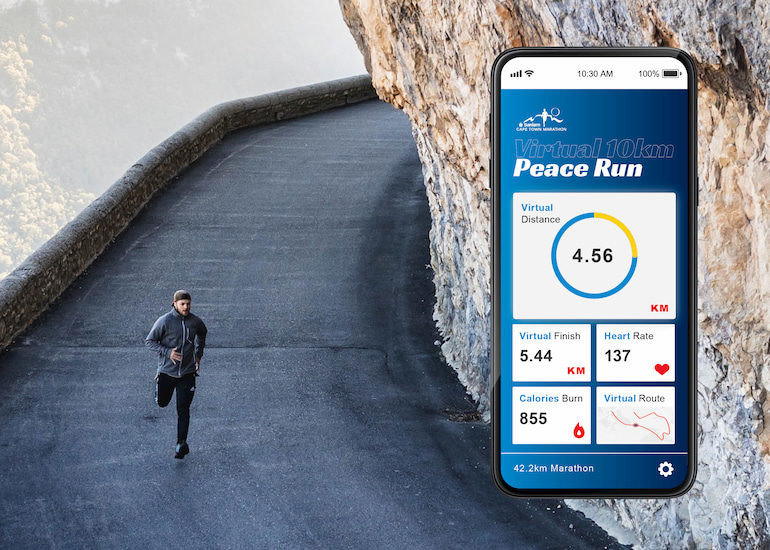
This will be done through the race's custom-built and feature-packed app.
"This year, runners from across the globe can experience the magic of the Cape Town Marathon without having to travel, while the dynamic surround sound feature within the app will allow participants to listen to the unique sounds of the Cape Town Marathon route while treading the familiar ground of their chosen race route," said Cape Town Marathon Race Director, Renee Jordaan.
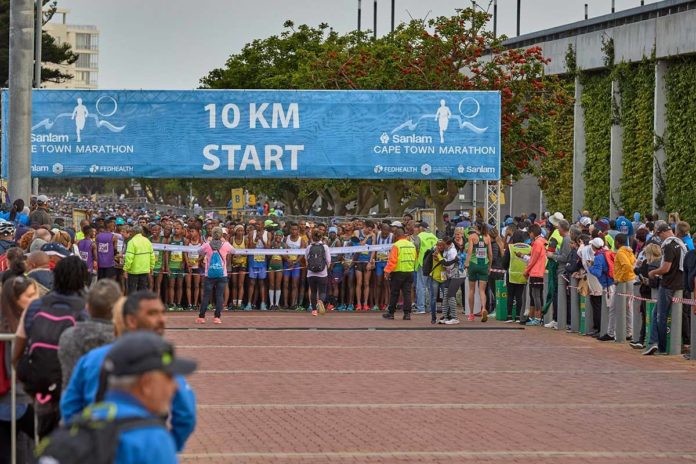
Cape Town Marathon chairperson, Francois Pienaar, adds that it is a privilege to host the first virtual race of its kind in the world.
"We are already in the spotlight as the only race on the African continent to enjoy the prestigious World Athletics Gold Label Status, so I am really proud that the world's first truly immersive virtual marathon comes from South Africa and Africa.
"I am also thrilled to confirm that World Champ, multiple Olympian and gold medalist, Sir Mo Farah, will race in the 10km Virtual Peace Run in the UK. His participation is a huge boost for the virtual race and shows that anyone can run the Cape Town Virtual Marathon, no matter where you are."
Sydney Mbhele, Chief Executive of Brand at Sanlam, says, “We are extremely proud to be sponsoring a first-of-its-kind virtual marathon that encourages people everywhere to ‘Run for Something’. This desire to stand for something, do good and make a tangible difference is part of Sanlam’s DNA. As a pan-African business, it’s encapsulated by our mission to invest in potential and foster positive financial futures across Africa for generations to come. To launch our Run for Something campaign, we’re donating R100,000 to CANSA and we’re rallying 5,000 Sanlam staff to run for CANSA on race day, globally. We urge others to join us. Let’s try and raise as much as possible for this vital NPO. Together, we can have a massive impact.”
The Cape Town Virtual Marathon, which also includes the 5km and 10km Peace Runs and newly-added half marathon, takes place on October 18, 2020.
South African participants will be in for a treat on Race Day with the addition of 15 fully stocked water tables - including food, sweets and energy bars - at selected Woolworths stores across the country. The exact locations and safety protocols of these water tables will be released in the coming weeks to assist runners with their virtual race route planning.
(07/11/2020) ⚡AMPCape Town Marathon
The Sanlam Cape Town Marathon is a City Marathon held in Cape Town, South Africa, which is sponsored by Sanlam, the City of Cape Town and Vital Health Foods. The marathon is held on a fast and flat course, starting and finishing in Green Point, near the Cape Town Stadium. Prior to existing in its current format, the Cape Town...
more...2020 Naha Marathon will not take place this year
Two of the last six remaining major marathons on Japan’s 2020 calendar have cancelled.
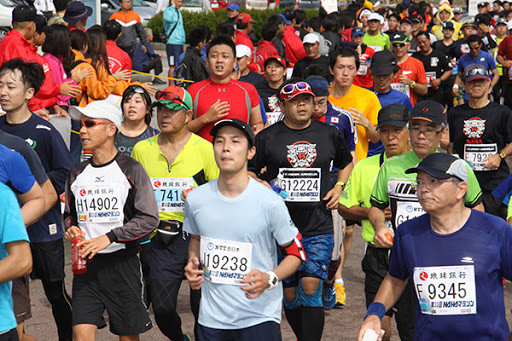
With 14,660 finishers last year the Naha Marathon in Okinawa announced that its 36th edition, scheduled for December 6, will not take place this year. The organizers stressed that it was a one-year postponement rather than a cancellation per se. The Aoshima Taiheiyo Marathon in Miyazaki, with 8043 finishers in 2019 and scheduled for December 13, followed with its cancellation announcement.
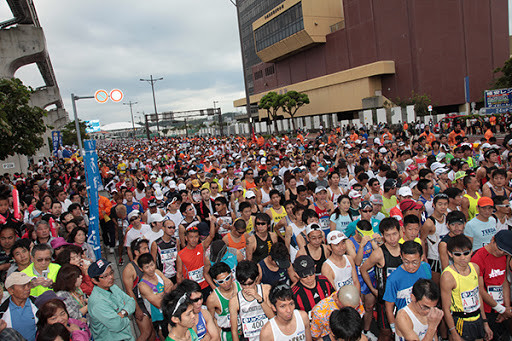
Both races brought up the same concerns as the 23 other large marathons this fall to have already cancelled. They cited risks to participants, volunteers and others involved in the race and Aoshima added that the need to restrict spectators would take away a lot of the fun for the runners.
Only four significant marathons could potentially still be held this year: the Fujisan Marathon (November 29), the Shonan International Marathon and Fukuoka International Marathon (both December 6), and the Hofu Marathon (December 20).
But given the earlier cancellation of the February 2021 Kumamoto Castle Marathon and accompanying elite-only Kumanichi 30km, the chances of anything except maybe Fukuoka actually going off look slim.
(07/11/2020) ⚡AMPby Brett Larner
World bronze medalist Moh Ahmed and US champion Shelby Houlihan smash North American 5000m records in Portland
World bronze medallist Moh Ahmed and US champion Shelby Houlihan made significant improvements on the North American 5000m records at a low-key competition at Jesuit High School in Portland on Friday night (10).
Ahmed’s 12:47.20 took more than six seconds off Bernard Lagat’s continental record set back in 2011, while Houlihan’s 14:23.92 was a 10.53-second improvement on her own North American record from two years ago. Runner-up Karissa Schweizer also finished inside the previous continental record, clocking 14:26.34.
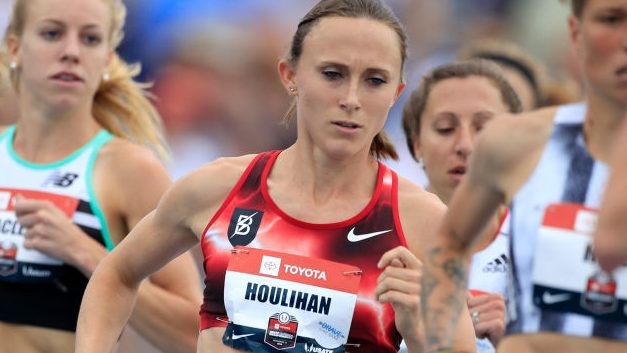
Organised by their training group, the Bowerman Track Club, the meet comprised just two 5000m races and the intention for both events was to provide the opportunity for fast times. Steeplechase specialist Colleen Quigley paced the early stages of the women’s race, taking the field through the first 1000m in 2:55.44.
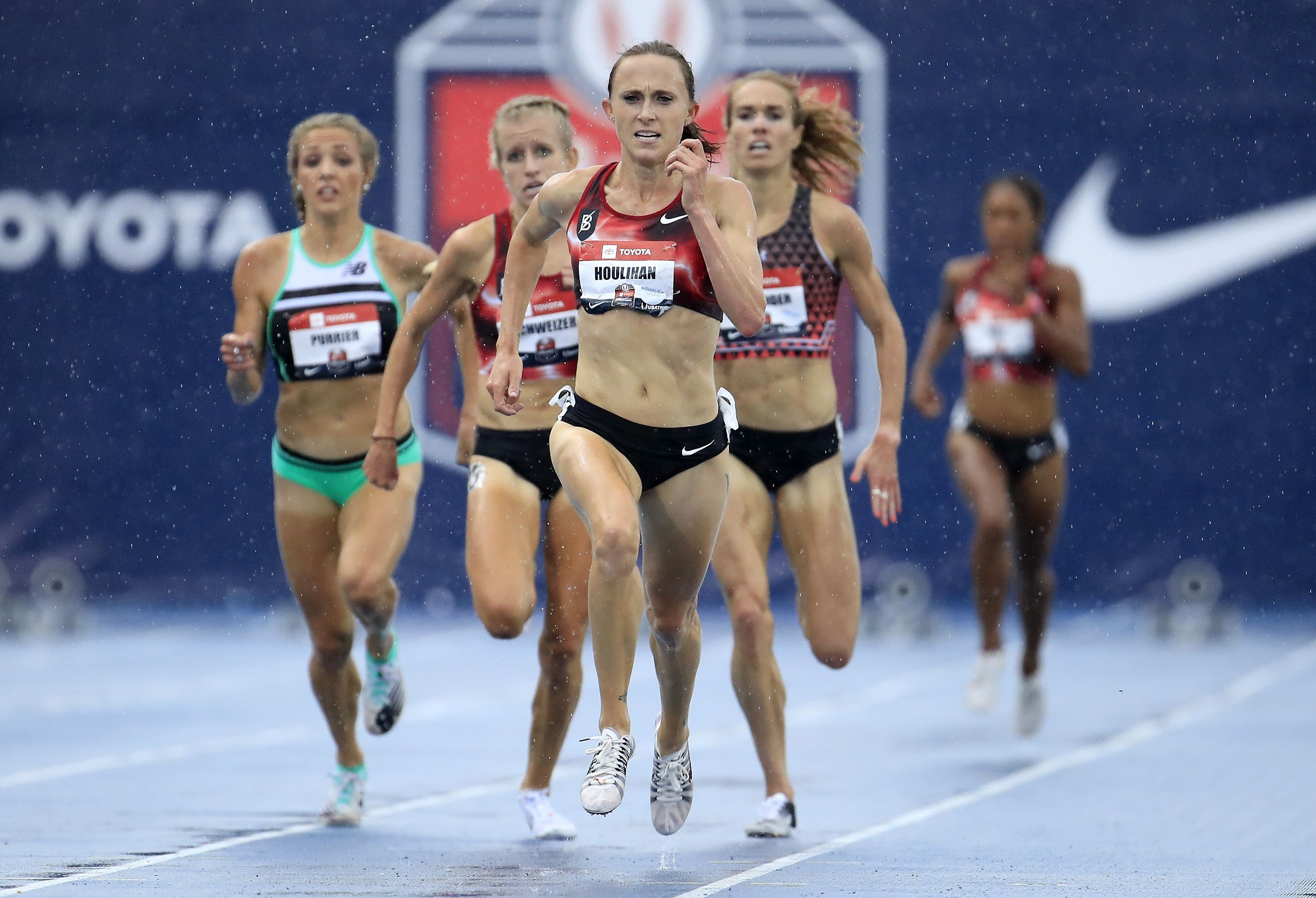
Fellow steeplechaser Courtney Frerichs, the 2017 world silver medallist, took up the running just before 2000m, which was passed in 5:51. Three women – Quigley, Marielle Hall and Gwen Jorgensen – withdrew at the 3000m point. Elise Cranny briefly led at that point, clocking 8:47.88 for her 3000m split, and was just ahead of Houlihan, but Cranny and Frerichs eased off for the final stages of the race, leaving just Houlihan and Schweizer out in front.
Houlihan drifted to the front with three laps to go and gradually started to increase the pace for the final kilometre. Schweizer managed to stick with her training partner until the final lap, which Houlihan covered in 61.4 seconds, giving her a finishing time of 14:23.92. Schweizer was second in 14:26.34.
“I knew Karissa was going to try to come up on me and take the lead, but I decided I was not going to let that happen,” Houlihan told usatf.tv after the race. “I just kept trying to fight her off and tried to have a big kick on the last lap.
“Karissa was in the race in Heusden two years ago where I set the previous record,” added Houlihan. “It’s been really awesome to have her as a training partner and to see how far she has come. She was only three seconds behind me today and I know she’s going to get that 5000m record at some point.”
The men’s race played out in similar fashion, with half the field helping to set the pace for the first 3000m before leaving Ahmed and Lopez Lomong to battle it out for victory.
Ryan Hill (2:36.2) and Grant Fisher (5:12) were the respective leaders for the first and second kilometres as Ahmed and Lomong sat in the middle of the pack. Fisher reached 3000m in 7:46.10, closely followed by Evan Jager and Sean McGorty, but they soon stepped off the track and Ahmed took up the running with three laps to go.
Ahmed then started to wind up the pace and broke away from Lomong on the penultimate lap, which he covered in 59.5. He moved up another gear and ran the final 400m in 57.45 to cross the finish line in 12:47.20, smashing his own Canadian record and moving to 10th on the world all-time list. Lomong, who narrowly missed out on breaking the 13-minute barrier last year with 13:00.13, finished second in a lifetime best of 12:58.78.
“Once I saw the way Shelby and Karissa attacked the last 600m, I told myself that I just had to do the same kind of thing,” said Ahmed, whose previous best was 12:58.16. “With two laps to go, the clock said 10:49 and I just thought, ‘you can run two (minutes) flat (for the final 800m)’. With 200m to go, I just tried to blast it as hard as I could.
“I’m excited, it’s something I’ve been working really, really hard for. It’s been an extremely challenging year, but luckily we have a good group and it was great to deliver this.”
(07/11/2020) ⚡AMPby World Athletics
Scott Fauble Vs Jared Ward Over 5000m Set For Saturday At The St. George Showdown In Utah
The organizers of the KT Tape St. George Showdown have announced the fields and the safety protocols for what will be a small track meet in St. George Utah on Saturday, July 11. The meet, directed by Artie Gulden–the head cross country coach at Utah State University and Ben Rosario–the head coach of HOKA ONE ONE Northern Arizona Elite, will take place at an undisclosed location without fans and with a strict set of guidelines related to COVID-19 testing.
The meet will be streamed live on RunnerSpace.com beginning at 9:30am EST/ 6:30am Pacific with the Men’s 5,000 meters presented by Polar to be followed by the Women’s 5,000 meters presented by Polar at 9:50am EST/ 6:50am Pacific. Both races feature regional fields with athletes coming from just four states: Ariz., Calif., Colo., and Utah. The men’s field is headlined by 2:09 marathoners Scott Fauble and Jared Ward, as well as young professionals Matt Baxter, Dillon Maggard, Rory Linkletter and Clayton Young. Pan Am Games Silver Medalist Reid Buchanan, 3:55 miler Eric Avila and BYU star Conner Mantz are also entered. The women’s race includes 2016 South African Olympian Dom Scott-Efurd up against the fifth, sixth and eighth place finishers at February’s U.S. Olympic Trials Marathon: Laura Thweatt, Stephanie Bruce and Kellyn Taylor. Top American 5,000 meter runners Sarah Pagano and Lauren Paquette should also factor into the proceedings.
All athletes, agents, coaches and support personnel were required to take a COVID-19 test within eight days of the event. All athletes will be required to take a rapid test on-site on Friday afternoon in St. George. Per Utah State guidelines, less than 50 people total will be allowed inside the stadium. Everyone who enters will be given a temperature check on Saturday morning. All non-competitors will be required to wear a mask and remain socially distanced throughout the event.
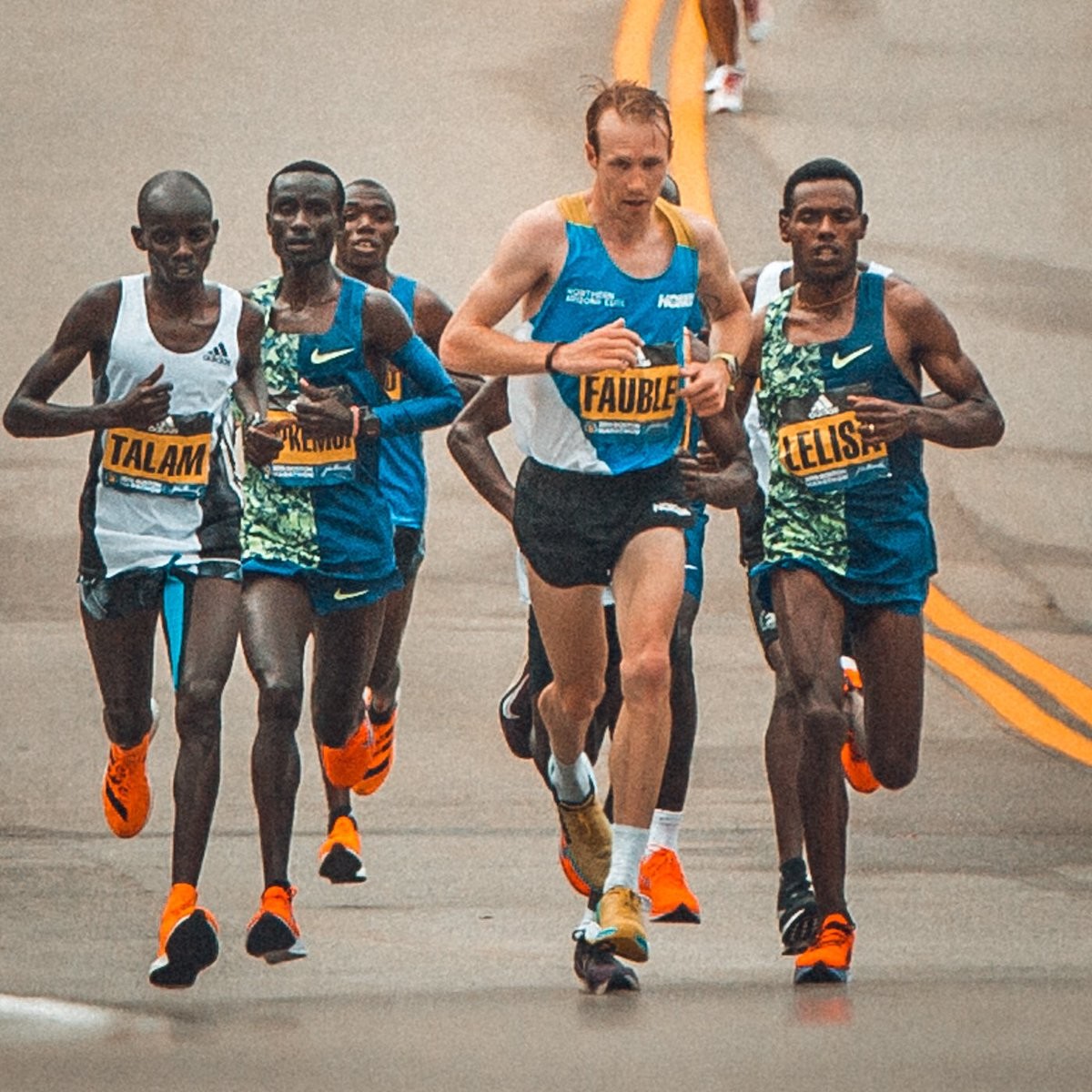
Rosario said that safety was the number one priority.
“We recognize the gravity of COVID-19 and the devastation it has caused across the globe,” Rosario said. “Our hope is not to push our sport forward, but merely to keep it afloat during these difficult times, and we believe small, controlled events like this one can be one way to do that.”
Gulden echoed the sentiment.
“We are really excited to give these athletes an opportunity to compete again and hope the fans will enjoy it,” Gulden said. “We’ve worked hard to create a safe environment for competition and are so grateful to people like Josh Cox and Jen Rosario, and companies like KT Tape and Polar, who have stepped up and been so instrumental to this event happening.”
KT Tape and Polar joined the event as sponsors this week. Because of their support, the athletes will be vying for a $5,500 total prize purse. The winner of each race will receive $1,000 in prize money.
(07/11/2020) ⚡AMPby Lets Run
Ivy League cancels fall sport seasons
The Ivy League is the first of the Division I conferences to cancel fall sports
On Wednesday the Ivy League announced that it would cancel all fall sports and “will not entertain any sports being played until after January 1.†This is the first Division I league to pull out of the fall season, but probably not the last.
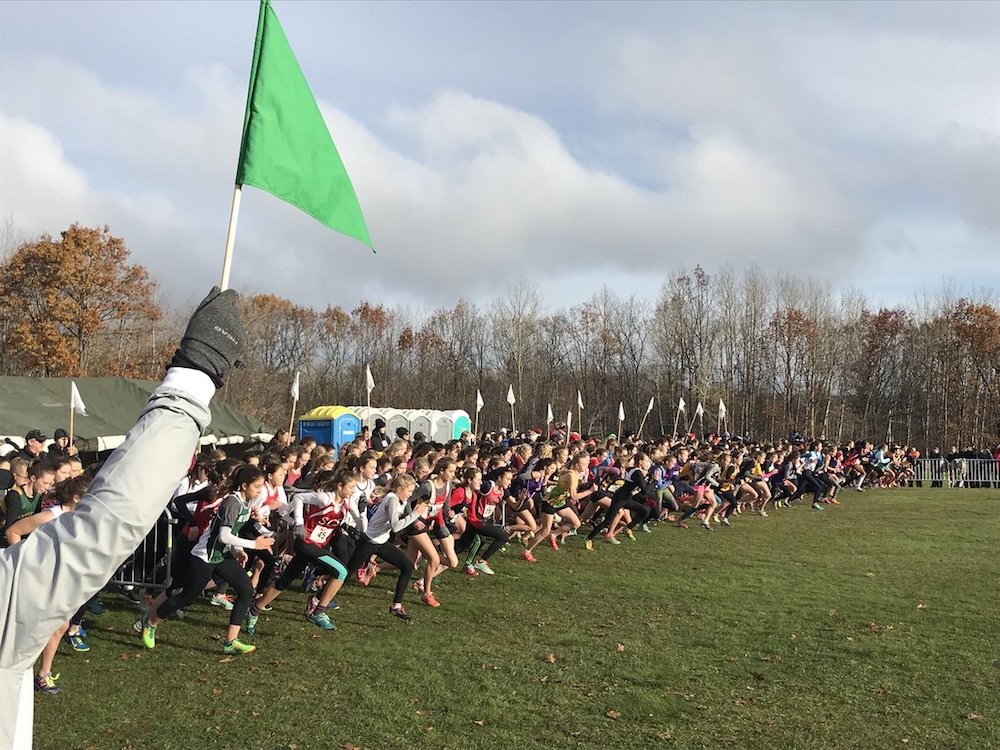
In a statement, Ivy League officials wrote, “With the safety and well-being of students as their highest priority, Ivy League institutions are implementing campus-wide policies including restrictions on student and staff travel, requirements for social distancing, limits on group gatherings, and regulations for visitors to campus. As athletics is expected to operate consistent with campus policies, it will not be possible for Ivy League teams to participate in intercollegiate athletics competition prior to the end of the fall semester.â€
While students won’t be able to participate in competitions, practices are expected to resume provided they follow their states’ regulations.
Will cross-country and track run at the same time?
With the NCAA fall cross-country season in jeopardy, runners are speculating that both season could be completed over the winter semester. Cross-country is a sport that could be run through the winter technically (though it would be on the chilly side), however, this would make it difficult for the middle-distance runners to compete in both sports. While a 5,000m runner could train properly for a 10K outdoors and their track event indoors, a 1,500m runner would struggle to be prepared for both.
Running both sports at once could thin out the fields, but with COVID-19 mandating smaller participation numbers, a condensed season and fewer runners could actually be the solution that the NCAA is looking for.
What about Canada?
As of June 8, U Sports — the national governing body of university athletics — made a joint decision with the Ontario University Athletics (OUA) and Atlantic University Sport (AUS) conferences to call off all sports for the remainder of 2020. In the west, all sports but cross-country, golf and swimming were cancelled, with the final decision on those sports expected by July 15.
As for the RSEQ (Quebec’s collegiate sports league), they’ve announced that they plan to go ahead with an amended fall calendar as of now. Even without the possibility of a national championship, there’s hope that student-athletes in Quebec could get to compete. The league will make the final call on this decision by August 31.
(07/11/2020) ⚡AMPby Running Magazine
Noah Lyles’s world record tease
It looked like Noah Lyles had set a 200m world record, but it turned out he ran a little short
The second modified event of the 2020 Diamond League schedule, the Inspiration Games, was held on Thursday, and the penultimate event of the day, the men’s 200m, produced a lot of drama. Current 200m world champion Noah Lyles was one of three competitors lining up for the race, and he dominated, crossing the line in 18.91 seconds, absolutely smashing Usain Bolt‘s world record of 19.19. Except… it turned out that he’d run in the wrong lane and only covered 185m. For a few minutes, though, Lyles set the track world on fire.

World record tease
When Lyles first crossed the line and everyone still believed he had broken the world record, there was talk on track Twitter that it had been a wind-aided run and wouldn’t count as an official record. Even if it had been wind-aided, that would still be an incredible run. He wouldn’t have just beaten Bolt’s record, he would have obliterated it. Unfortunately for everyone (Lyles, the track world and whoever put him in the wrong lane), there was a mistake and he ran 15m short. Once everything was sorted out, Lyles tweeted, “You can’t be playing with my emotions like this … Got me in the wrong lane.” We think it’s safe to assume that he was not amused by the error.
De Grasse and Felix
Lyles’s run and all of the confusion that came with it stole the show on Thursday, but there were some other great (and legit) race results before that mishap occurred. Canada’s Andre De Grasse raced the 100-yard dash against Jimmy Vicaut of France and Olympic 110m hurdles champion Omar McLeod of Jamaica, grabbing the win in 9.68. This time equates to about a 10.59 100m run, which is far off his personal best at the distance. Still, a win is a win, and De Grasse continues to show he’s in good shape as the world creeps back toward a regular racing schedule.
Another big result came from U.S. Olympic champion Allyson Felix, who won the 150m race and set her PB at the distance with a time of 16.81. She upset pre-race favourite Shaunae Miller-Uibo of the Bahamas for the win. Felix ran alone in Walnut, Calif., while Miller-Uibo raced in Florida and the third competitor, Swiss world championship 200m bronze medallist Mujinga Kambundji, raced in Zurich. After the race, Felix said it was “very strange” racing alone on the track. “It feels sort of like practice, but not even that, because there are no teammates.”
2020, the year of off-distance racing
Since races slowly began to return, there have been a lot of irregular, off-distance events being contested. At the Impossible Games in June, Karsten Warholm set the 300m hurdle world record and the Ingebrigtsen brothers ran a 2,000m race. Thursday saw the men’s 100-yard and women’s 150m races, as well as a women’s 300m hurdle event. Who knows, maybe the Diamond League will end up adopting some of these rare events and using them in the official 2021 schedule.
(07/11/2020) ⚡AMPby Running Magazine
Kenya's Alex Korio handed two-year doping ban
Kenya's Alex Korio will have to refund the prize money he won at the Beach to Beacon 10km road race in Cape Elizabeth in the U.S. after the Athletics Integrity Unit (AIU) found him guilty of a doping offense.
The 30-year-old Korio, who had finished eighth during the Jianzhen International Half Marathon in Yangzhou, China, had been slapped with a provisional suspension in May after he failed three whereabouts cases and missed planned anti-doping tests.
He was allowed to defend himself before the AIU, but his submission failed to convince the officials.
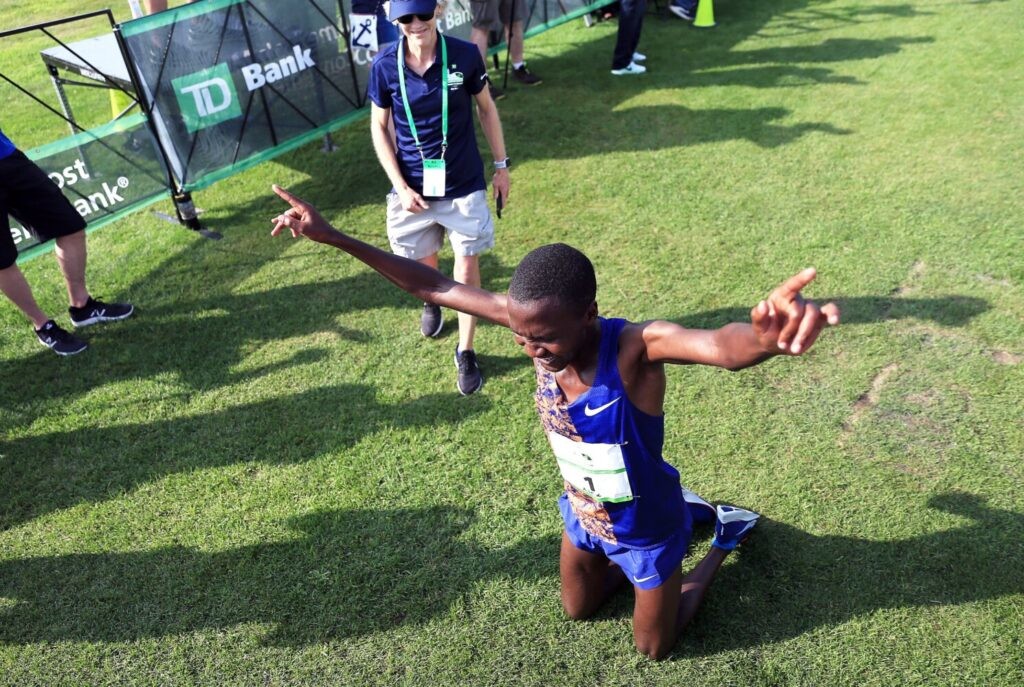
"The athlete failed to respond and to provide any explanation concerning the apparent three missed tests," said the AIU in a statement on Friday.
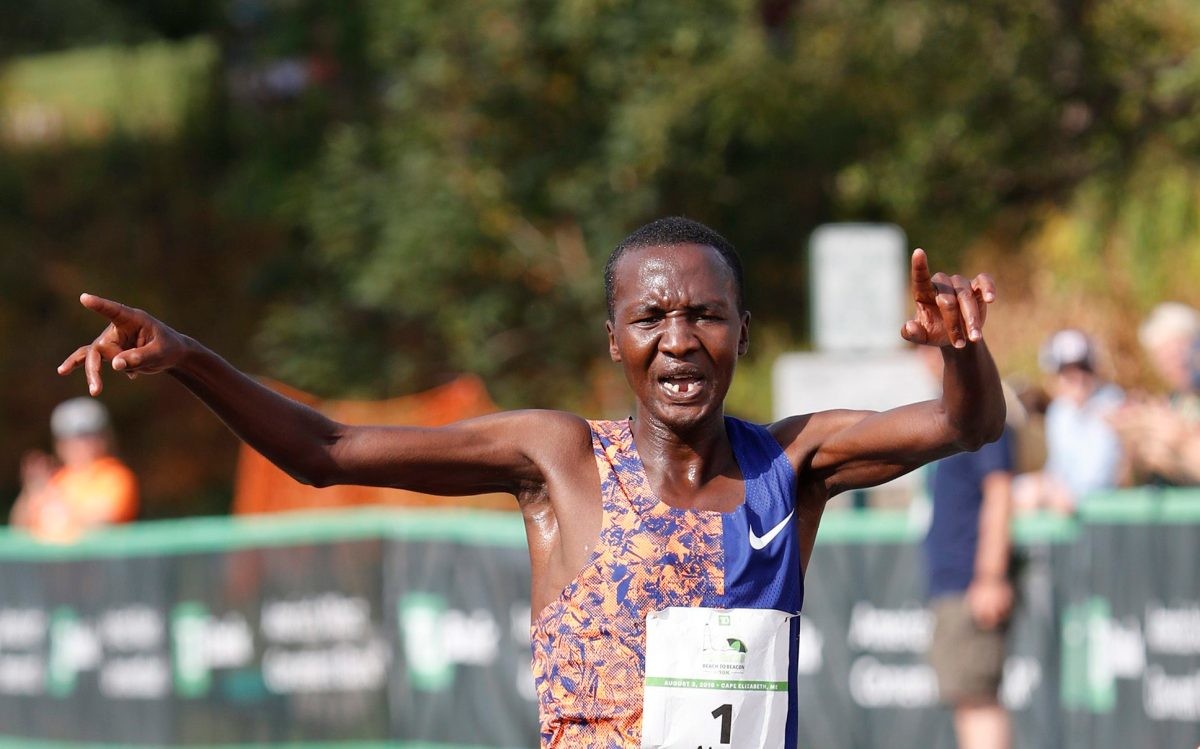
He has since been handed a two-year ban from all sports competition effective July 19, 2019. The ban will end on July 19, 2021.
However, the AIU ruled that Korio will face the bane of forfeiture of any titles, awards, medals, points, prizes and appearance money which he may have earned starting July last year.
Korio becomes the 55th athlete from Kenya to be banned in five years, joining a ballooning list that includes former World Marathon record holder Wilson Kipsang, Olympic marathon champion Jemima Sumgong, Rita Jeptoo, the Boston and Chicago marathon champion and Asbel Kiprop, the former World 1,500m champion.
Korio had missed scheduled tests on Jan. 20, April 11 and July 19, 2019. This year alone, Kenya has also seen former world marathon record holder Wilson Kipsang, Kenneth Kipkemoi, Mercy Jerotich, James Kibet and former world junior 800m champion Alfred Kipketer suspended and charged for whereabouts failures by the AIU.
"In short, athletes violate the anti-doping rules when they have any combination of three missed tests or filing failures within any 12-month period. That period beginning on the day of the first relevant missed test or filing failure," the AIU said.
A missed test means a failure by the athlete to be available for testing at the location and time specified in the 60-minute time slot identified in his whereabouts filing for the day in question. A filing failure is to make an accurate and complete whereabouts filing that enables the athlete to be located for testing at the times and locations set out in the whereabouts filing.
(07/10/2020) ⚡AMPWorld marathon record holder Eliud Kipchoge dreams of fast time at London marathon
World marathon record holder Eliud Kipchoge says training on the track is crucial as he guns for a fast time at the London marathon in October if the race is allowed to be staged.
Kipchoge, in a webinar interview with local media outlets, said he is fully immersed in training and eagerly awaiting the government to confirm when training camps will be open and athletes allowed to train normally.
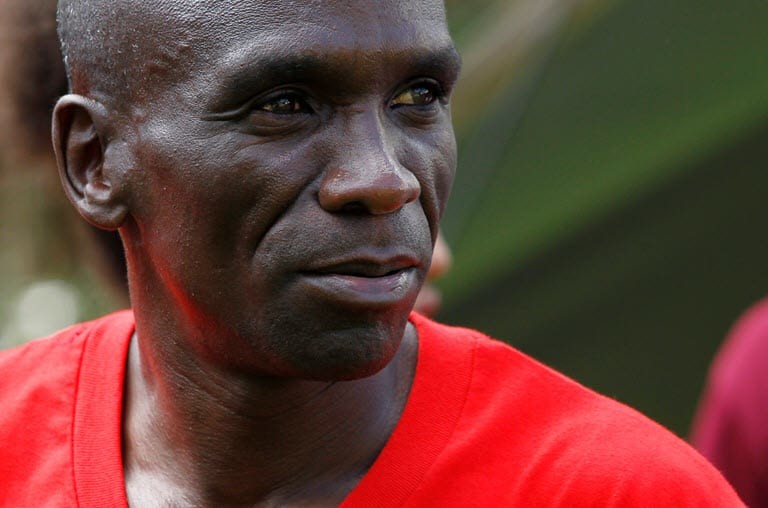
"I hope for something special in London. It will be fast," Kipchoge said in t interview on Friday from his hometown of Eldoret located in Kenya's North Rift region.
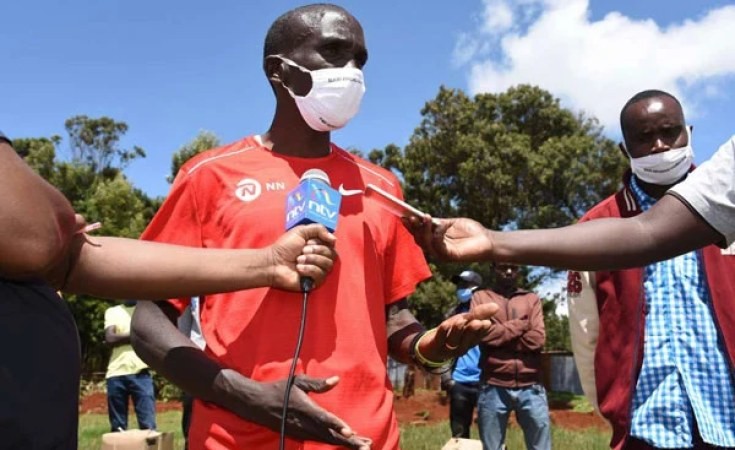
The Olympic marathon champion said that he will do everything possible to be ready for the London Marathon on October 4 with organizers aiming to stage an elite-only race due to COVID-19 challenges.
"Save for Geoffrey Kamworor, who was injured in an accident, my entire team is ready to return to training camp for the preparations ahead of the season reopening. But I am waiting for the government and hope the Cabinet Secretary for Sports (Amina Mohamed) will allow us all back in camp," said Kipchoge.
He is currently working on his speed and alternates from road training to track sessions.
"Track sessions are for me and my team really crucial. It helps us to make our body maintain a high pace and it actually opens the body to feel how hard training is. To other marathoners, it's not important and they see it as not beneficial," said Kipchoge.
His coach Patrick Sang, said it is important for athletes to focus on endurance training.
"In running, there are three things that you need as an athlete. You need strength, endurance and of course, you need speed," Sang said.
(07/10/2020) ⚡AMPTCS London Marathon
The London Marathon was first run on March 29, 1981 and has been held in the spring of every year since 2010. It is sponsored by Virgin Money and was founded by the former Olympic champion and journalist Chris Brasher and Welsh athlete John Disley. It is organized by Hugh Brasher (son of Chris) as Race Director and Nick Bitel...
more...Huge blow for Kenyan athletes as European Union travel ban continues
After a dark season that has seen them lose massive earnings from the international circuit due to cancellation of global sporting events owing to the coronavirus pandemic, Kenyan athletes face another blow.
Kenya is among the nations yet to be cleared to travel into Schengen states when the European Union (EU) opens its borders on July 1.
The Kenya athletes will be hit hard should the country continue to remain on the Covid-19 compliace “blacklist” when the 2020 Diamond League circuit resumes in August.
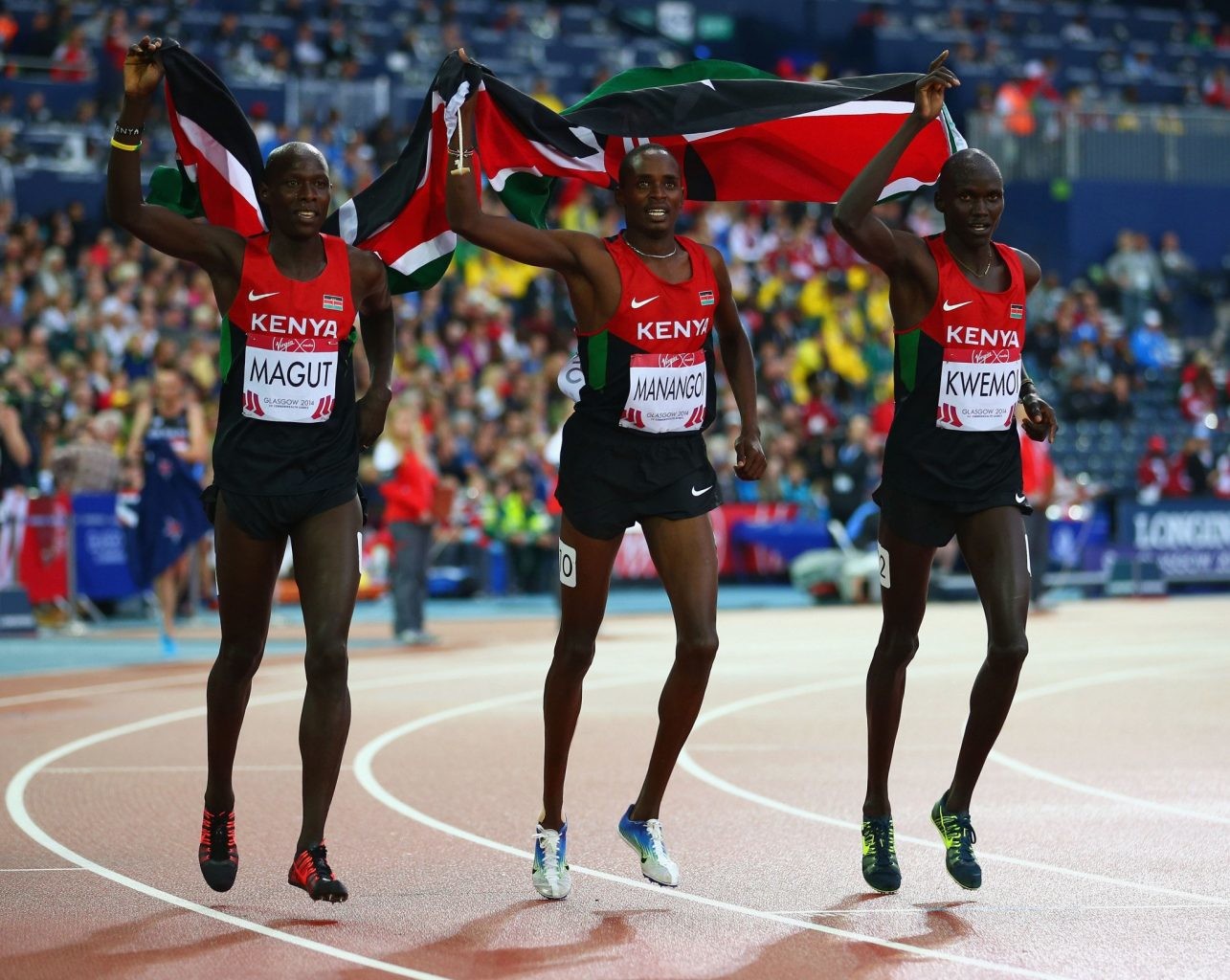
Kenya is not among 54 world countries that will benefit from the reopening of the EU borders from July 1.
Things haven’t been made any easier as Kenya’s Covid-19 cases continue to rise in the country with 6,190 cases having been reported with 144 deaths and 2,013 recoveries by Monday.
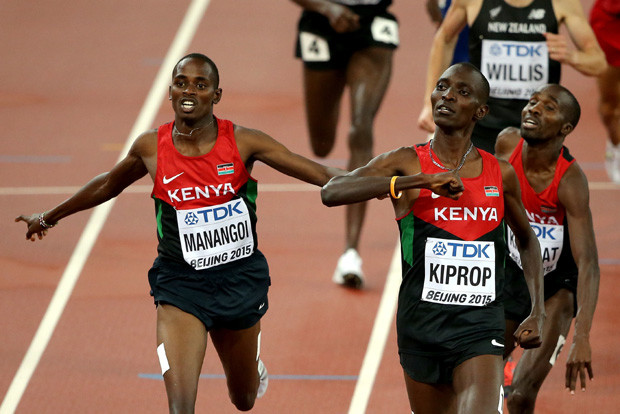
However, athletes from Kenyan neighbors Ethiopia, Uganda and Rwanda are among the African countries who will be allowed to enter the Schengen states from July 1.
Should the ban be sustained, then Kenya’s world 1,500 meters champion Timothy Cheruiyot will not be able to defend his title alongside former champion Elijah Manang’ oi, among others, during the Monaco leg of the Diamond League on August 14.
Monaco will signal the resumption of Diamond League action.
More Kenyan athletes are likely to miss the Stockholm meet on August 23 in Sweden and if EU doesn’t clear Kenya then the athletes will also miss Brussels leg on September 4 in Belgium since the Lausanne meet on September 2 will be an exhibition event.
Nationals of the following countries are listed in this draft list of nations allowed into the EU from July 1:
Albania, Algeria, Andorra, Angola, Australia, Bahamas, Bhutan, Bosnia and Herzegovina, Canada, China, Costa Rica, Cuba, Democratic People’s Republic of Korea, Dominica, Egypt, Ethiopia, Georgia, Guyana, India, Indonesia, Jamaica, Japan, Kazakhstan, Kosovo, Lebanon, Mauritius, Monaco, Mongolia, Montenegro, Morocco, Mozambique, Myanmar, Namibia, New Zealand, Nicaragua, Palau, Paraguay, Rwanda, Saint Lucia, Serbia, South Korea, Tajikistan, Thailand, Tunisia, Turkey, Turkmenistan, Uganda, Ukraine, Uruguay, Uzbekistan, Vatican City, Venezuela, Vietnam, Zambia.
(07/10/2020) ⚡AMPby Ayumba Ayodi
Marathon world record holder Wilson Kipsang alleges doping authorities conspired against him
Race-news-service.com quotes an article by Michael Reinsch in the Frankfurter Allgemeine Zeitung in which former Marathon world record holder Wilson Kipsang alleges doping authorities conspired against him and plans an appeal to the Court of Arbitration for Sport in Lausanne.
Kipsang accused the Integrity Unit of World Athletics of racism and the Anti-Doping Agency of Kenya (ADAK) of feeding “wrong information” to the AIU in attempt to undermine Kipsang’s position as founder of a professional body for Kenyan runners (PAAK). “Everyone knows that we have a bad relationship with Athletics Kenya, which in turn led to this ban,” he alleged.
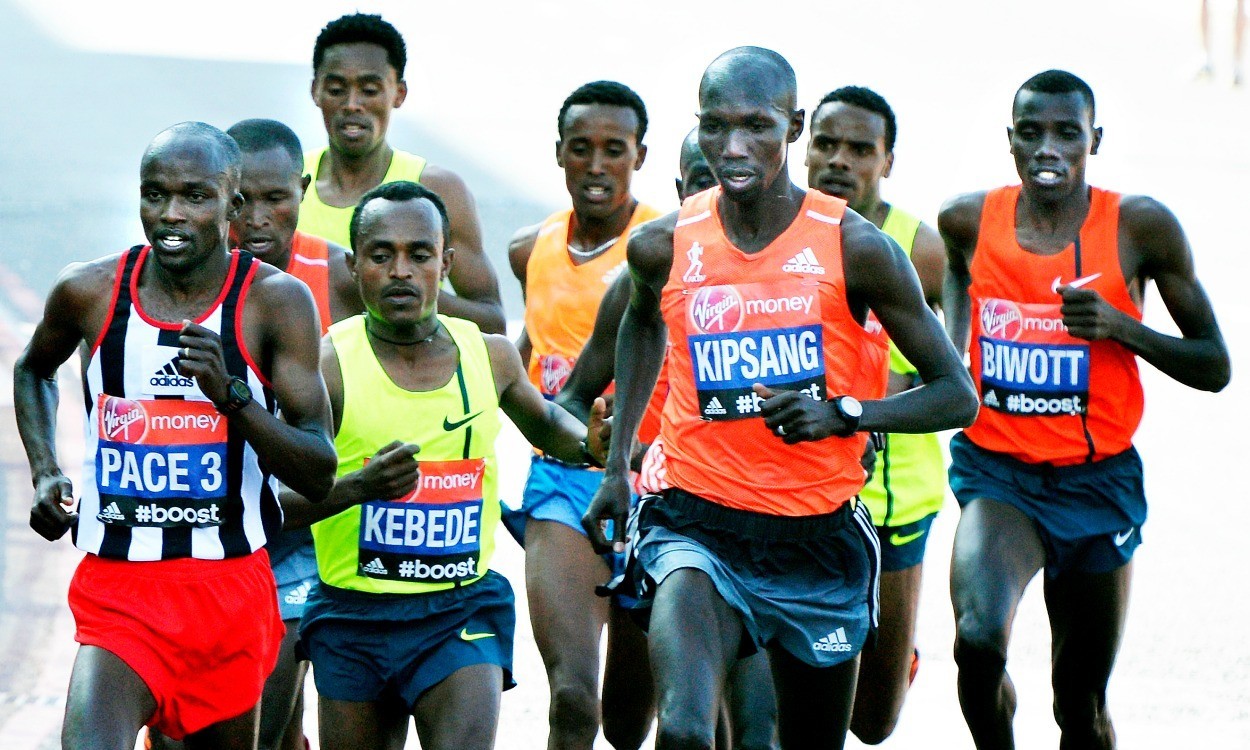
AIU commissioned the Swedish judge Conny Jörneklint with the case who justified the ban over three missed tests and supplying an incorrect address within one year. Kipsang’s excuses for missing tests included in one instance a landslide and on another occasion an overturned truck blocking the road. The court noted that it was “unable to confirm either incident.
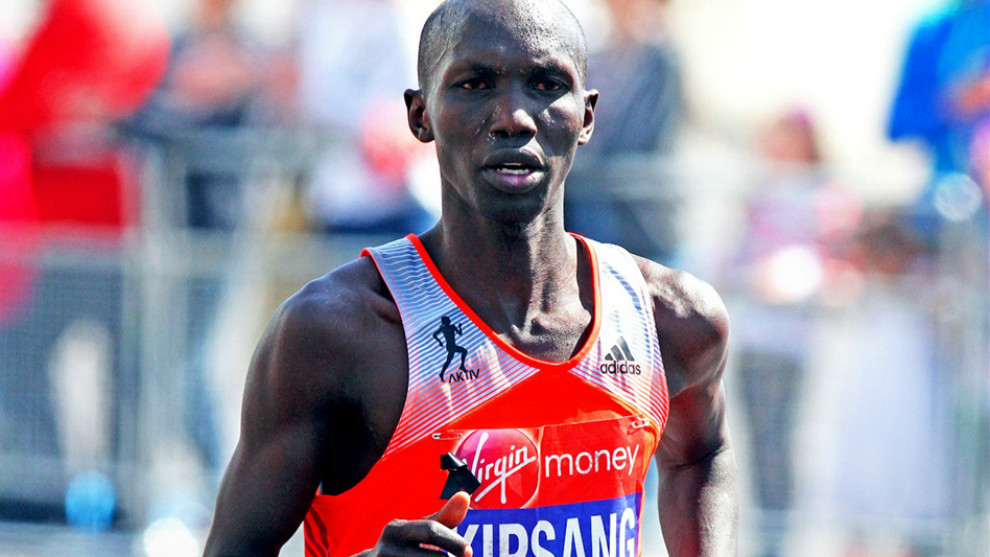
There were no records of bad weather at the specified location at the specified time, nor had the police recorded a truck accident and any resulting traffic disruption on the day in question. A photo submitted for evidence, according to research, was taken three months after the alleged accident. The athlete has acted fraudulently by intentionally providing the AIU with incorrect and misleading information,” read the AIU judgement.
“People have doped for years and have been banned for four years,” said Kipsang. “I had an accident, had to go to the hospital, and was then banned for four years. That’s not fair.”
AIU had given a proportionately lengthy sentence in June 2020 to the Ethiopian distance runner Etaferahu Temesgen after she tested positive at the Scotiabank Toronto Waterfront Marathon for EPO and testosterone in October 2019. On appealing the original four-year ban Temesgen submitted a forged medical certificate and had the ban extended to 12 years.
On August 13, Kenyan marathon runner Florence Jepkosgei Kosgei is due to appear at a criminal court in Eldoret charged with presenting forged documentation to the Anti-Doping Agency of Kenya. If found guilty she could face imprisonment.
(07/10/2020) ⚡AMPby Michael Reinsch
Allyson Felix notched a pair of impressive victories to highlight the Inspiration Games
The Zurich Diamond League organisers' entertaining and innovative answer to the global coronavirus pandemic that brought together 30 athletes competing in seven venues across two continents on Thursday (9).
Felix, competing in Walnut, California, near Los Angeles, kicked off the meeting with a solid victory in the 150m and brought it to its conclusion with her anchor leg on the victorious squad in the closing 3x100m relay. All without another competitor on the track.
Felix’s immediate reaction to this first in her storied career?
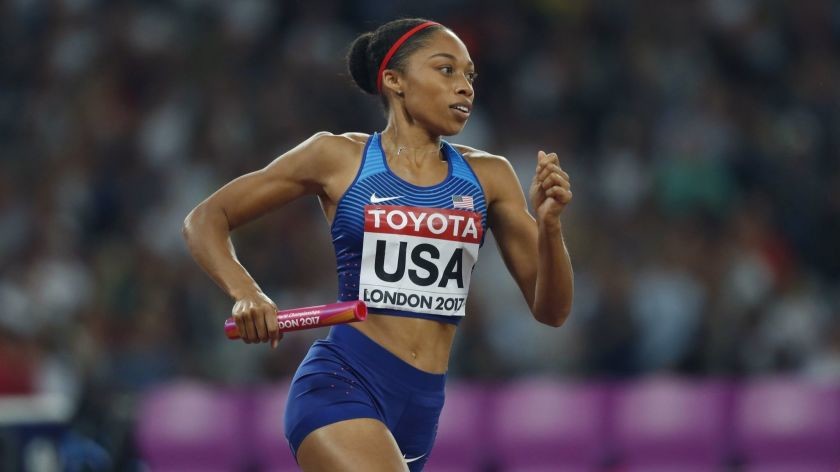
"Very strange,” she said, with a wide smile. “It’s kind of like practice but not really, with no teammates.”
Running alone, she said, “It's hard to challenge yourself. But I love this sport so any chance to get out here and run. I'm all about that.”
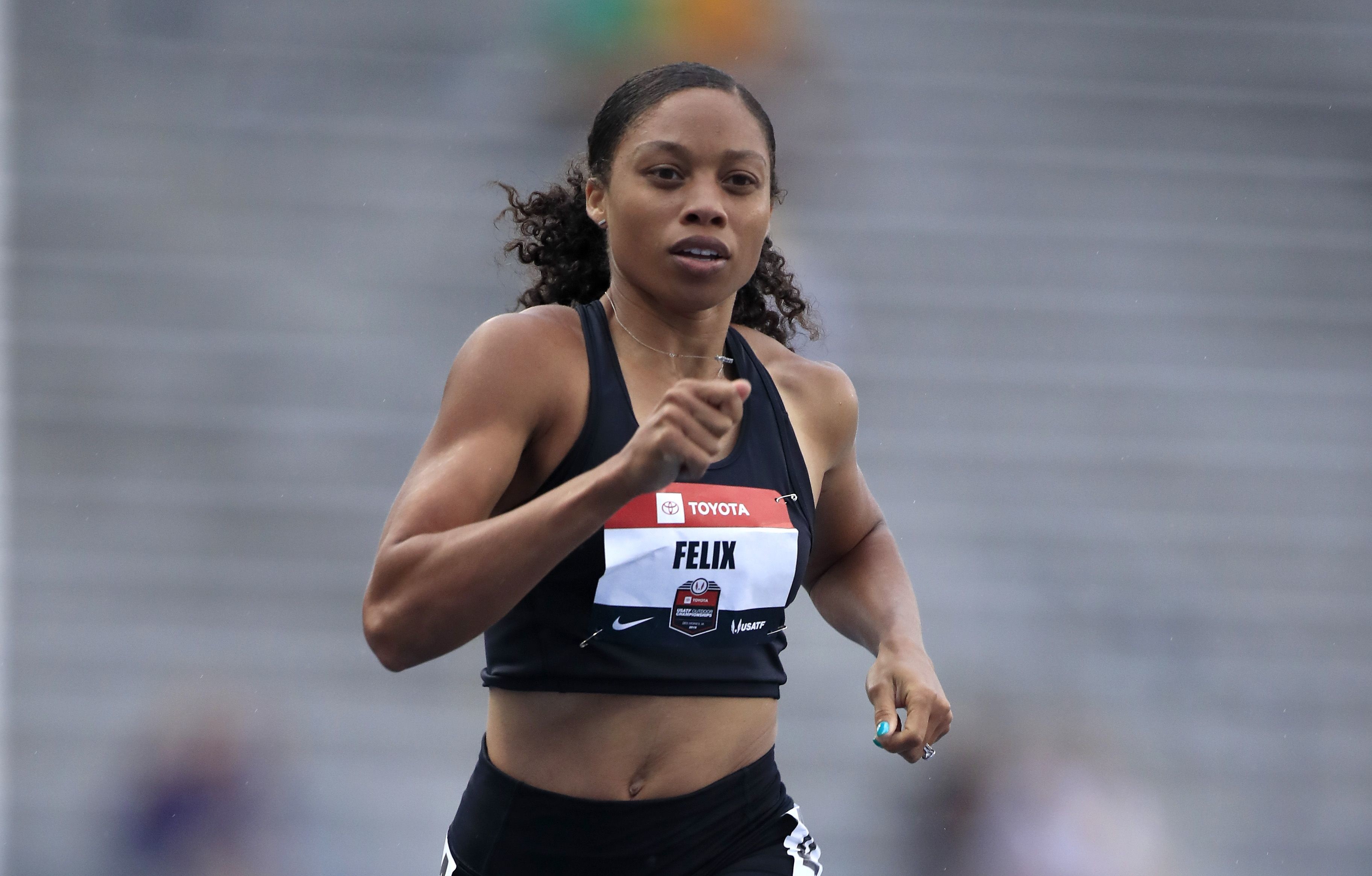
Action on the tracks kicked off with the women's 150m, with Swiss star Mujinga Kambundji competing in Zurich, Olympic 400m champion Shaunae Miller-Uibo in Bradenton, Florida, 8000 kilometres and six time zones west, and Felix, another 4000 kilometres to her west.
With track configurations and the camera angles on the synchronized stream varying slightly, it was difficult to follow who was leading until moments before the three approached the finish line. Felix crossed hers first in 16.81, well clear of Miller-Uibo who stopped the clock in 17.15. Kambundji clocked 17.28.
Oddly enough, even as they raced from tracks on opposite coasts of the United States, the winds in their respective races were nearly identical. Felix battled a 2.6 m/s headwind and Miller-Uibo a 2.5.
Felix returned to the track to team with Candace Hill and Tianna Bartoletta to collect another dominant victory in the meet-capping 3x100m relay, the trio clocking 32.25 ahead of a Swiss team that clocked 32.50 in Zurich and a Dutch squad that clocked 32.94 in Papendal.
"This is fun," Felix said. "I can't wait until we can do it in person."
Conversely, the men's 100yd was the day’s only on-site face-off, with Jimmy Vicaut of France, Canadian Andre de Grasse and Olympic 110m hurdles champion Omar McLeod meeting on the Bradenton track where they faced a 3.4m/s headwind. For the first half, it was an evenly matched affair until de Grasse, running in the middle of the track, and Vicaut, running on the inside, broke away. De Grasse closed best to nab the narrow victory in 9.68, 0.04 ahead of Vicaut. McLeod was a distant third in 9.87.
(07/10/2020) ⚡AMPby World Athletics
Today is the 2020 Inspiration Games, a virtual meet held in place of the Weltklasse Zürich Diamond League
The meet will see competitors go head-to-head in real time, while actually competing across the world. It’s one of the most sophisticated time trials ever. If you’re one of the many running fans who has been seriously missing competition, you can get your track fix today by tuning in at 1:35 p.m. ET to check out all of the action.
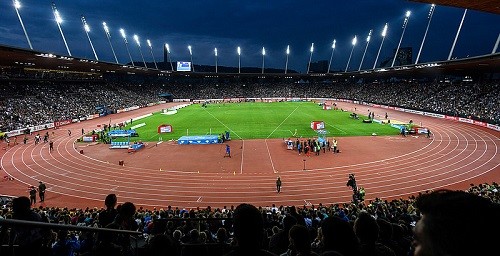
The only Canadian competing today is 2019 World Championship bronze medallist Andre De Grasse, who will be running the 100-yard dash. He’s run one race so far this season, hitting 10.15 in a 100m run last week at a meet in Clermont, Fla.
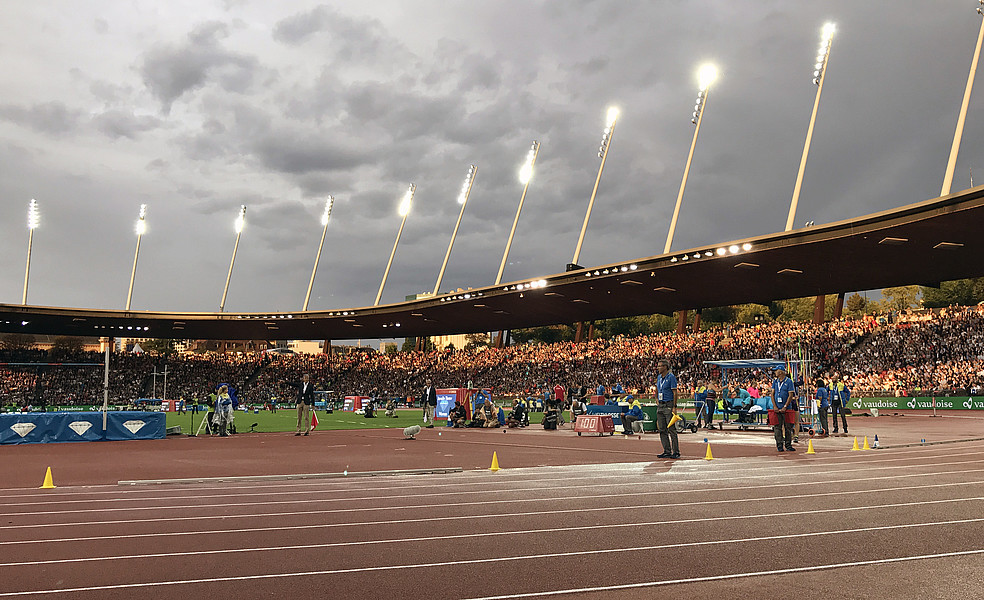
The schedule (ET).- 1:35 p.m. Pole Vault Men Entries, 1:35 Pole Vault Women Entries, 2:05 Triple Jump Men Entries, 2:10 150m Women Entries, 2:27 100 yards Men Entries, 2:41 300mH Women Entries, 3:06 200m Men Entries, 3:20 3x100m Women Entries.
How to watch.- Canadian spectators can tune in via Facebook or YouTube. The first event begins at 1:35 p.m. and will run through 3:30 p.m. As track (and road racing) slowly returns to a state or normalcy, Canadian Running will be doing a weekend recap covering all of the action from the week before. We’ll look at road and track TT results, bringing you the most impressive runs from around the world.
(07/09/2020) ⚡AMPby Madeleine Kelly
Sir Mo Farah announced as ambassador for the Sanlam Virtual Cape Town Marathon
The Sanlam Cape Town Virtual Marathon, which also includes the 5km and 10km Peace Runs and newly-added half marathon, takes place on 18 October 2020.
Race organizers and running enthusiasts are getting ready for a race with a difference, as the 100-day countdown to the Sanlam Cape Town Virtual Marathon commences on 10 July.
Much has happened since the launch of the virtual event and subsequent cancellation of the traditional race due to COVID-19. And while Sanlam Cape Town Marathon participants may miss out on the spectacle and celebration offered by the road event, the virtual race promises to take all the iconic elements of Cape Town’s favorite marathon to its global participant base through the race’s custom-built and feature-packed app.
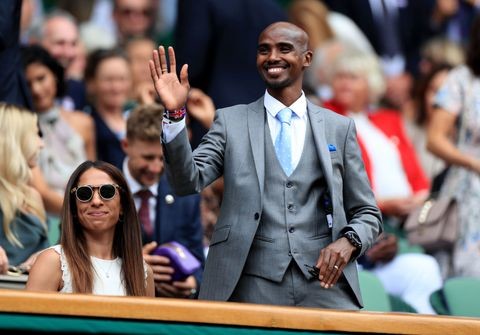
Sanlam Cape Town Marathon chairperson, Francois Pienaar, said that it was a privilege to host the first virtual race of its kind in the world.
"We are already in the spotlight as the only race on the African continent to enjoy the prestigious World Athletics Gold Label Status, so I am really proud that the world’s first truly immersive virtual marathon comes from South Africa and Africa.
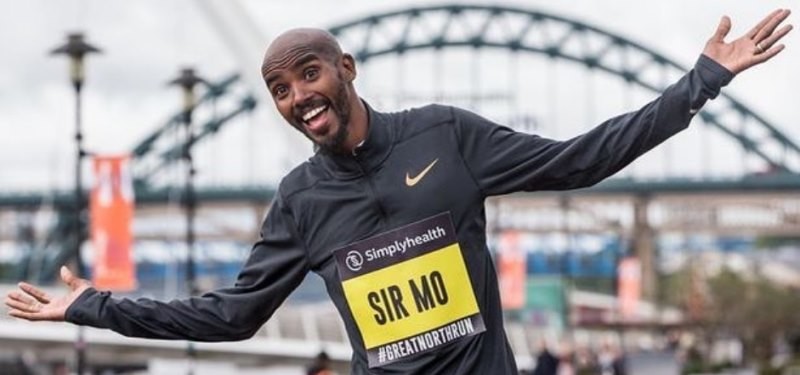
"I am also thrilled to confirm that world champ, multiple Olympian, gold medalist and world record holder, Sir Mo Farah, will race in the 10km Virtual Peace Run in the UK. His participation is a huge boost for the virtual race and shows that anyone can run the Sanlam Cape Town Virtual Marathon, no matter where you are," he said.
In a virtual media briefing held on Thursday, Farah said that he was looking forward to the event.
“We are all in this together, it's not just one country or one person so we just have to stay positive and keep the body ticking. It’s important for everyone running that they give it their best because there is a lot that goes into running, so just make the most of it and believe in the training you’ve done and the goal that you’ve set," he said.
"The challenges of 2020 became the catalyst for innovation and we are 100 days away from hosting a virtual race the world hasn’t seen before," added Sanlam Cape Town Marathon race director, Renee Jordaan.
"This year, runners from across the globe can experience the magic of the Sanlam Cape Town Marathon without having to travel, while the dynamic surround sound feature within the app will allow participants to listen to the unique sounds of the Sanlam Cape Town Marathon route while treading the familiar ground of their chosen race route," she said.
The Sanlam Cape Town Virtual Marathon, which also includes the 5km and 10km Peace Runs and newly-added half marathon, takes place on 18 October 2020.
(07/09/2020) ⚡AMPby Michael Pedro
Cape Town Marathon
The Sanlam Cape Town Marathon is a City Marathon held in Cape Town, South Africa, which is sponsored by Sanlam, the City of Cape Town and Vital Health Foods. The marathon is held on a fast and flat course, starting and finishing in Green Point, near the Cape Town Stadium. Prior to existing in its current format, the Cape Town...
more...The 500 Festival Launches Virtually
The 500 Festival, a nonprofit organization providing life-enriching events and programs that celebrate the spirit and legacy of the Indianapolis 500®, today announces the launch of their Virtual Race Series. The series consists of five new virtual races that will be completed from July through October 2020. Each virtual race will have a special auto racing theme and a unique distance.
In addition, virtual race participants may count these race miles toward their Indianapolis 500 Mile Challenge or Freedom 100 Mile Challenge goal.
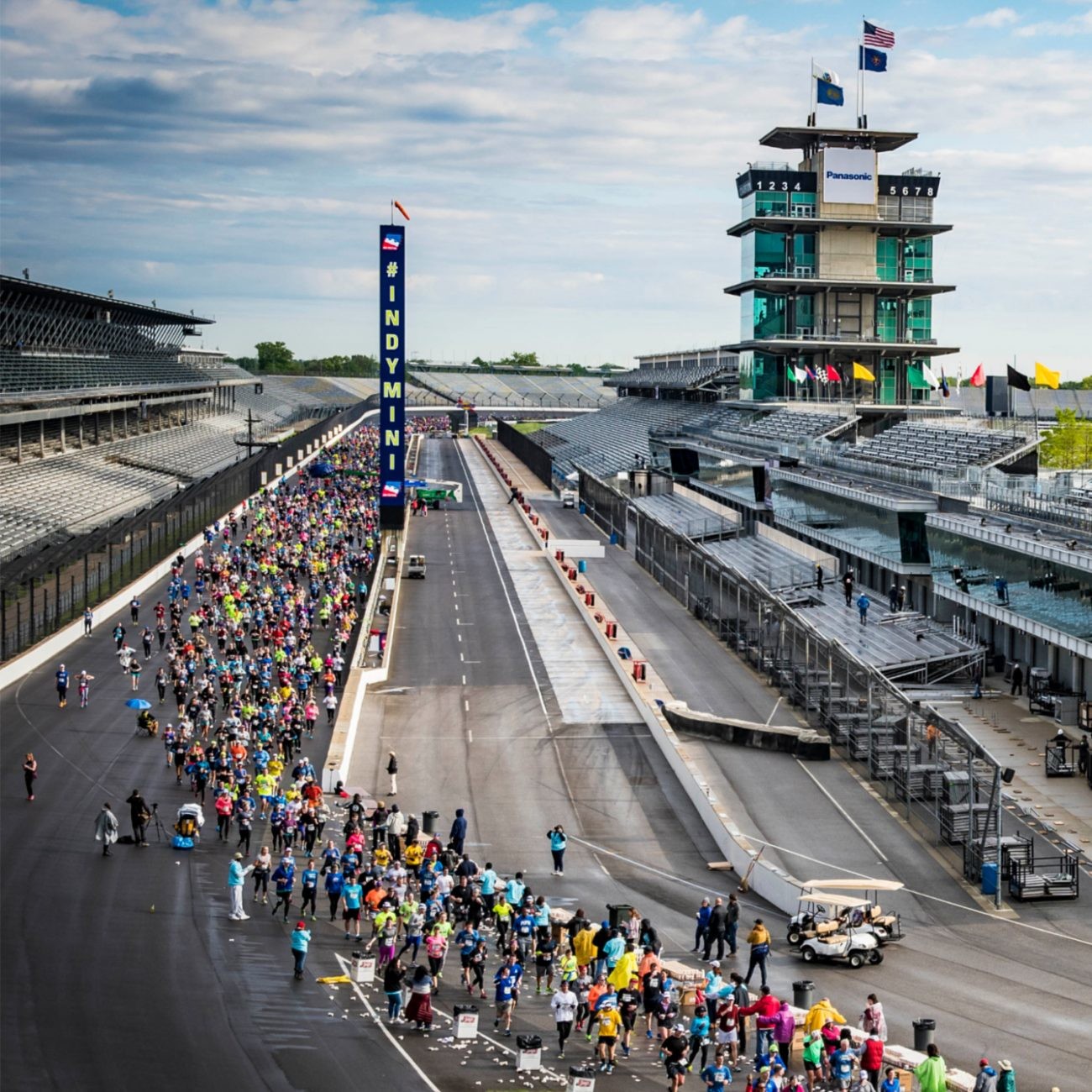
The 500 Festival’s 2020 Virtual Race Series is as follows:
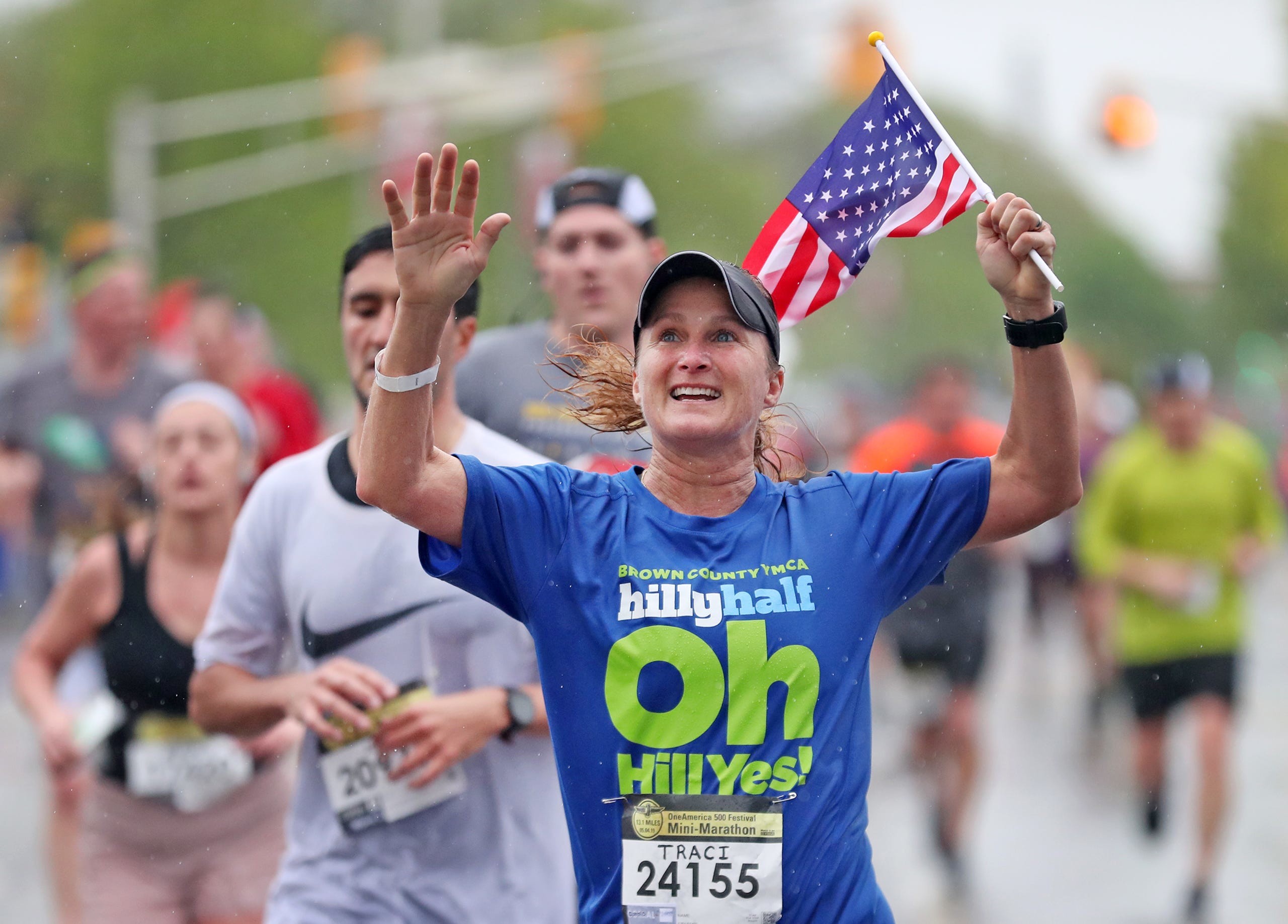
July – Brickyard 4.00-Miler, benefiting the 500 Festival, August – Snake Pit 6-Miler, benefiting the 500 Festival, September – Labor Day 3-Miler, benefiting the 500 Festival, October – Harvest GP 5-Miler, benefiting the 500 Festival, October – IndyCar Championship 10-Miler, benefiting the 500 Festival.
“We are excited to launch this series of five virtual races over the next five months,” said Bob Bryant, president and CEO of the 500 Festival. “In addition to race registrations supporting the 500 Festival’s youth programs and events, these virtual races provide participants with new motivation and encouragement to get active and log their miles during such an unprecedented year.”
All races within the 500 Festival’s 2020 Virtual Race Series can be completed whenever and wherever participants decide. Simply pick the day, time and location you want to complete your race. Participants can complete their race mileage in a number of ways including running, walking, wheelchair, swimming, cycling, fitness classes and more. Virtual races can be completed in one day or distance can be spread out across multiple days to ensure maximum flexibility for a safe and healthy experience.
(07/09/2020) ⚡AMPOneAmerica 500 Festival Mini-Marathon
The mission of the 500 Festival is to produce life-enriching events and programs while celebrating the spirit and legacy of the Indianapolis 500 and fostering positive impact on the city of Indianapolis and state of Indiana. As an organization providing multiple events and programs, many of which are free to attend and impact over 500,000 people annually, our mission to...
more...The Brussels marathon has been cancelled due to the pandemic
The traditional marathon and semi-marathon of Brussels will not take place this year, due to Covid-19 the organizers announced on Wednesday. Instead of 4 October as was initially planned, the event will take place on Sunday, 3 October 2021. The main reason for the cancellation of the event is the high number of foreign participants.
Safety of participants comes first.- Initially, the marathon was supposed to start from underneath the Atomium and finish on the athletic track of the King Baudouin Stadium. It was also meant to include shorter races and a race for children (the Kids Run at the Laeken Park).
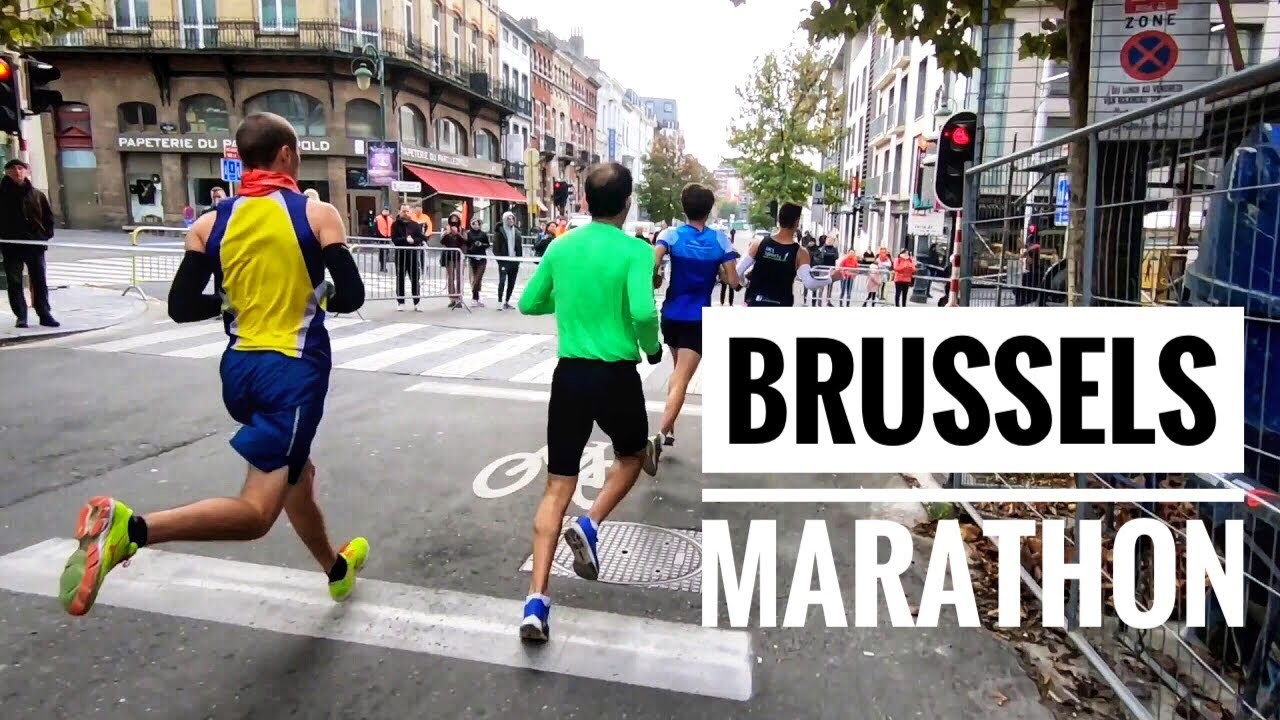
The international sports event is highly popular at home and abroad with as many as half of the participants arriving from beyond Belgium’s borders to take part. This is precisely what motivated the organizers (Brussels Airport as the main partner and the City of Brussels, Brussels-Capital Region and Runners’ Lab as secondary partners) to postpone it in the context of the uncertainties related to Covid-19 and the possibility of a second wave coming in the next months.
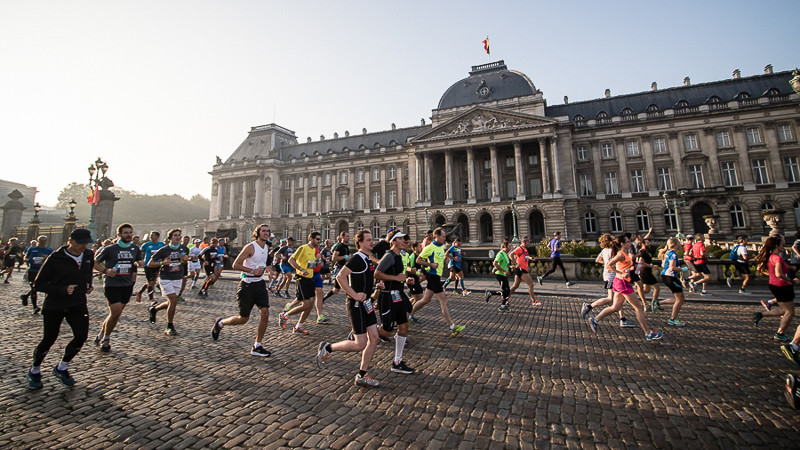
Brussels marathon goes online.-However, like many other events scheduled to take place between spring and autumn this year, the marathon will happen virtually. This is possible thanks to a special event application, unique for Belgium, which can be downloaded by anyone.
Upon downloading it, between 28 September and 4 October, virtual participants could run wherever and whenever they want around Brussels or take on a magnificent route that has been designed exclusively for this challenge. Furthermore, along the way, they will hear audio descriptions of the sites that they would normally pass.
It is also possible to choose one's own starting wave and thus compete with fellow runners. Afterwards, results, photos and virtual medals can easily be shared on social media. This way, anyone can attend the traditional sport event from a distance, proving that sport knows no boundaries.
(07/09/2020) ⚡AMPBrussels Marathon
The Brussels Marathon is an annual AIMS-certified marathon hosted by Brussels, Belgium and usually held in the autumn. The full race was first held in 2004; apart from the traditional 42.195km, also shorter distances are covered nowadays. The marathon makes a loop, starting and ending in the City of Brussels, in the proximity of Brussels Park. Initially the runners head...
more...Runners are using tech to stay connected and compete since most races have been cancelled
Virtual races weren’t supposed to be the most exciting competition for runners in the summer of 2020. But with the coronavirus pandemic making large-scale gatherings difficult, runners are turning to technology as they search for ways to train, stay connected with teammates and compete.
Some have kept it simple, logging workouts and training plans in shareable Google documents or spreadsheets to stay in touch with their coaches. Other runners are using popular social fitness apps like MapMyRun and Strava, which saw a record 3.4 million downloads in May.
And some coaches and race organizers have innovated after being forced to scrap plans for prestigious track meets, massive marathons and the Tokyo Olympics, which were delayed from this summer to 2021. They’re making the best of a time without in-person competition by hosting virtual races and pitting runners in different states — or even continents — against each other.
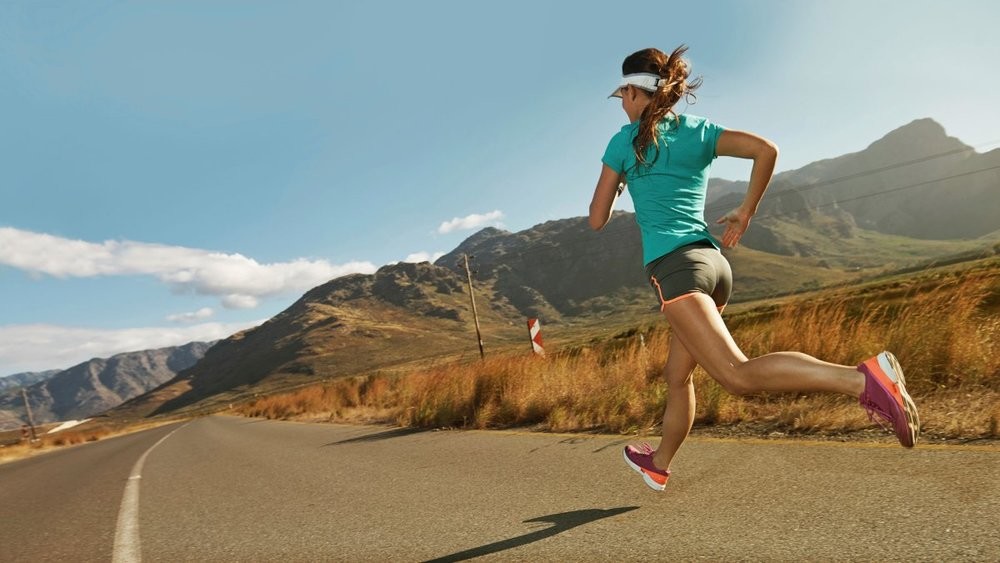
“Everything’s pretty much been wiped off the table and we’ve had to regroup and reassess and find things to look forward to that aren’t traditional,” said Ben Rosario, the head coach of the Hoka Northern Arizona Elite professional distance running team.
While Arizona was under a stay-at-home order in April and May, Rosario’s small team of pro runners in Flagstaff went more than a month without training together, and he used an online training log called FinalSurge to send workout plans and stay connected with his athletes.
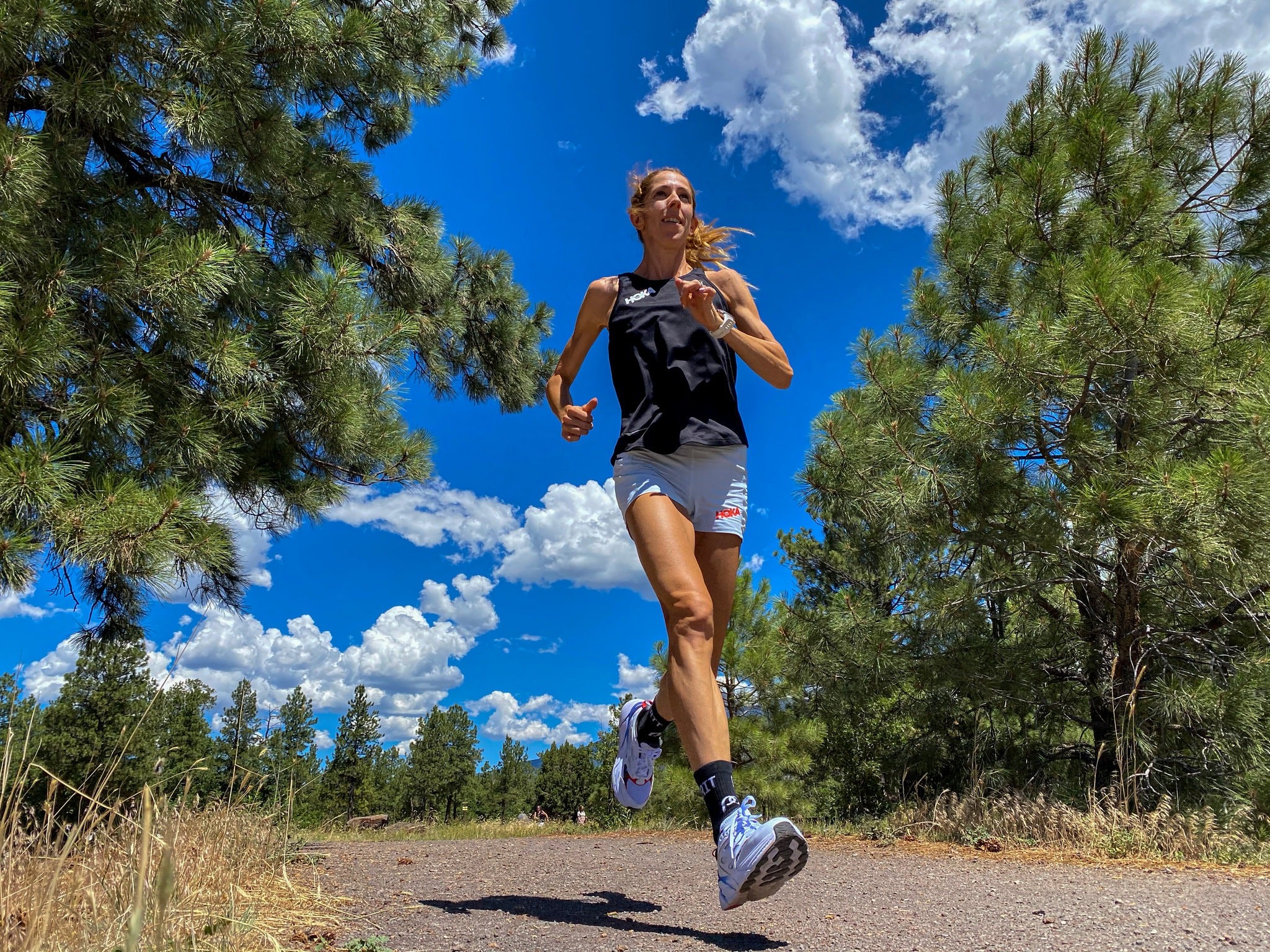
“We can’t replace our competitive needs by just a virtual run,” Coburn said, adding that she does think virtual racing has “opened the world up” as runners from different countries race each other.
Bruce, the Hoka elite runner, is also itching to toe a real starting line again.
“If I’m being honest, the virtual stuff — it’s not the same thing,” Bruce said. “You’re missing the connection. And I think human connection is what keeps a lot of people motivated and inspired in life.”
(07/08/2020) ⚡AMPby Kellen Browning
MBNA Chester Marathon has been cancelled due to the pandemic
The organizers of the Essar Chester Half Marathon & MBNA Chester Marathon/Metric Marathon have announced the cancellation of their 2020 events.
The organizers say that runners registered for both events will be contacted by email on July 17 confirming the cancellation and outlining the next steps regarding refunds, deferrals and other options available to them.
Joint Race Organizer Chris Hulse, of Active Leisure Events, said “It is a decision we have made with a heavy heart.
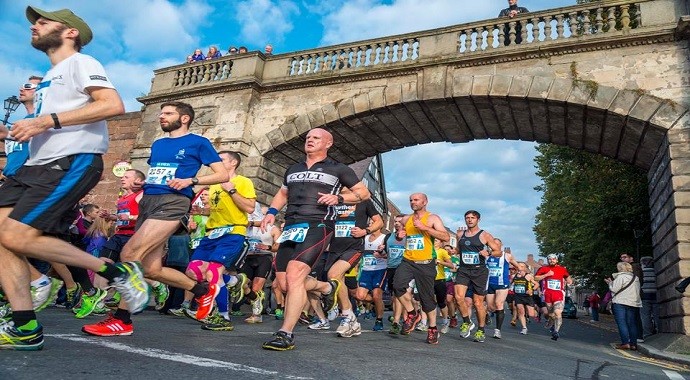
“We have been closely monitoring the ever-evolving situation around the Covid-19 pandemic, the latest government guidance and developments emerging throughout the events industry.
"It’s clear that staging two large scale mass participation events this year would be inappropriate.”
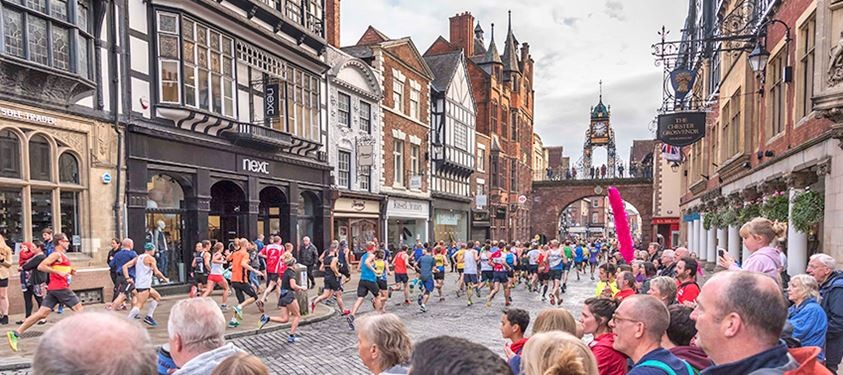
“Therefore, we are sincerely sorry to announce the cancellation of the 2020 Essar Chester Half Marathon scheduled for September 20, the 2020 MBNA Chester Marathon/Metric Marathon scheduled for October 4, and the 2020 Chester Triple. Our overriding priority is the safety and health of our runners, staff, contractors, volunteers, spectators, local community and society as a whole.”
The news will be disappointing to many runners.
The organizers spent a significant amount of time exploring, considering and planning numerous alternative scenarios, to enable the events to go ahead safely. However, the amount of uncertainty and lack of clear direction surrounding large scale events, plus a significant 66% of runners stating they would not be comfortable taking part in events in 2020, further contributed to their decision.
“It’s not what anyone wanted but it’s essential that everyone’s health and wellbeing take priority over all else,” added Joint Race Organizer Andy White.
The Active Leisure Events team would like to offer a huge thanks to their runners, sponsors, volunteers, local council, medical teams and other key stakeholders for their understanding and support throughout this incredibly difficult time. Andy added: “We have been overwhelmed by the generous outpouring of positive comments and well-wishes."
The team are now fully focused on their 2021 events and hope runners will all be able to join them next year.
(07/08/2020) ⚡AMPMBNA Chester Marathon
The MBNA Chester Marathon is the UK's favorite marathon, always voted as one of the Runner's World top 10 marathons. With a spectacular start and finish at Chester Race course, the route passes all Chester's iconic landmarks, then heads out into the Cheshire & North Wales countryside, before returningalong the banks of the River Dee for an unforgettable finish. The...
more...The Mainova Frankfurt Marathon temporarily closed registrations
Because major events are prohibited in Germany until the end of October if they cannot guarantee that the hygiene regulations and distance rules can be observed and that contact tracking of participants and spectators can be guaranteed, the Mainova Frankfurt Marathon team temporarily closed registrations from 18 June.
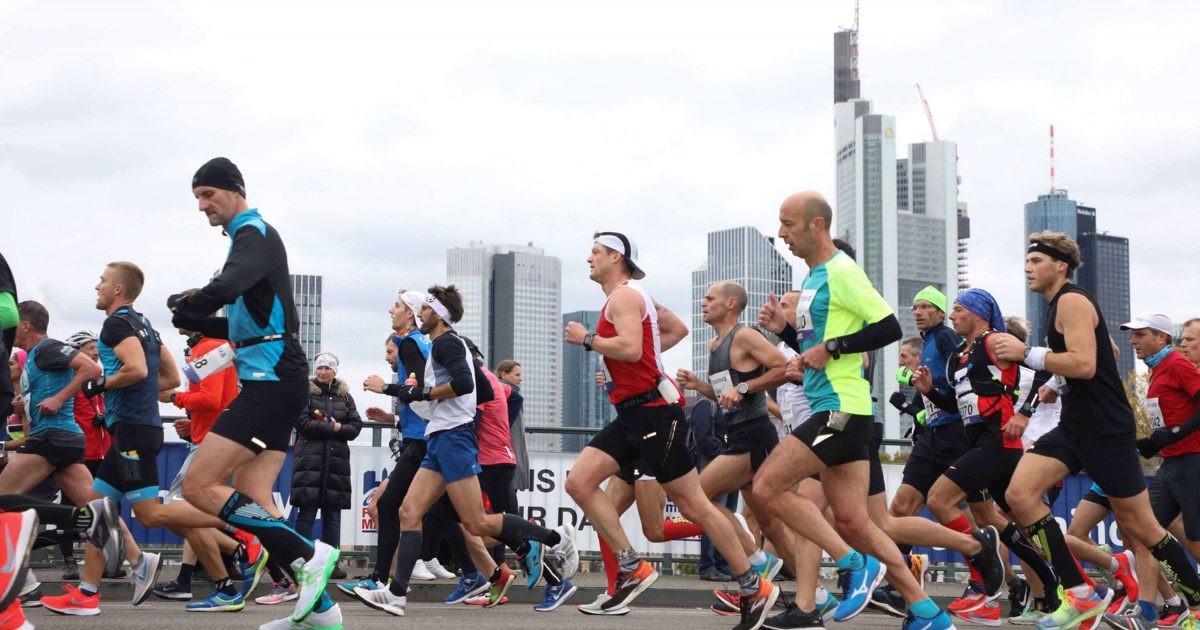
“We are in close contact with the Hessian Ministry of the Interior and for Sports in order to come to a final decision regarding our event,” said the race organizers.
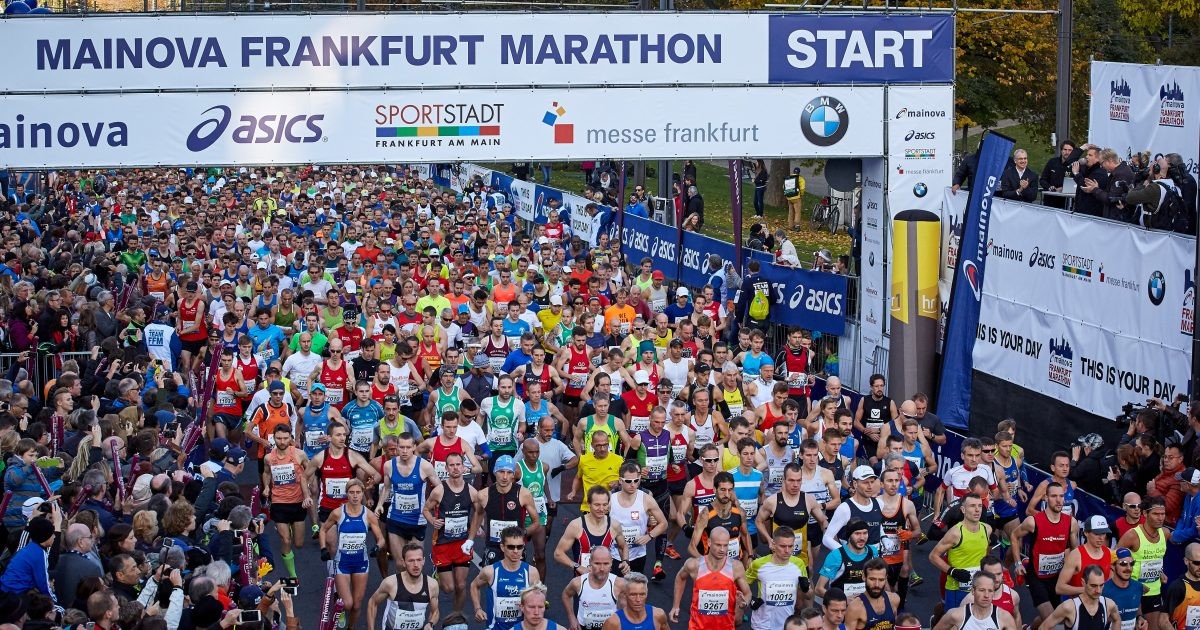
“Unfortunately, the 39th Mainova Frankfurt Marathon planned for 25 October has become unlikely due to recent developments.”
“We will proactively inform you through all our channels (website, newsletter, social media & Co.) as soon as we have new information. Until then we ask that you refrain from inquiries.
Unfortunately we cannot say with certainty when we will reach a final decision in consultation with and in agreement with the City of Frankfurt and the State of Hesse.”
(07/08/2020) ⚡AMPMainova Frankfurt Marathon
Frankfurt is an unexpectedly traditional and charming city, with half-timbered buildings huddled in its quaint medieval Altstadt (old city), cosy apple wine taverns serving hearty regional food, village-like neighbourhoods filled with outdoor cafes, boutiques and street art, and beautiful parks, gardens and riverside paths. The city's cache of museums is second in Germany only to Berlin’s, and its nightlife...
more...The 2020 Hartford Marathon will Go Virtually
This year's Hartford Marathon and Half Marathon is going to be a virtual event amid the coronavirus pandemic.
Race officials said the marathon and half marathon will take place from October 8 through October 11 as a virtual event.
"We are taking the lemons we've been given due to the pandemic, and we're making great lemonade for the community," said President and CEO of the Hartford Marathon Foundation Beth Shluger.
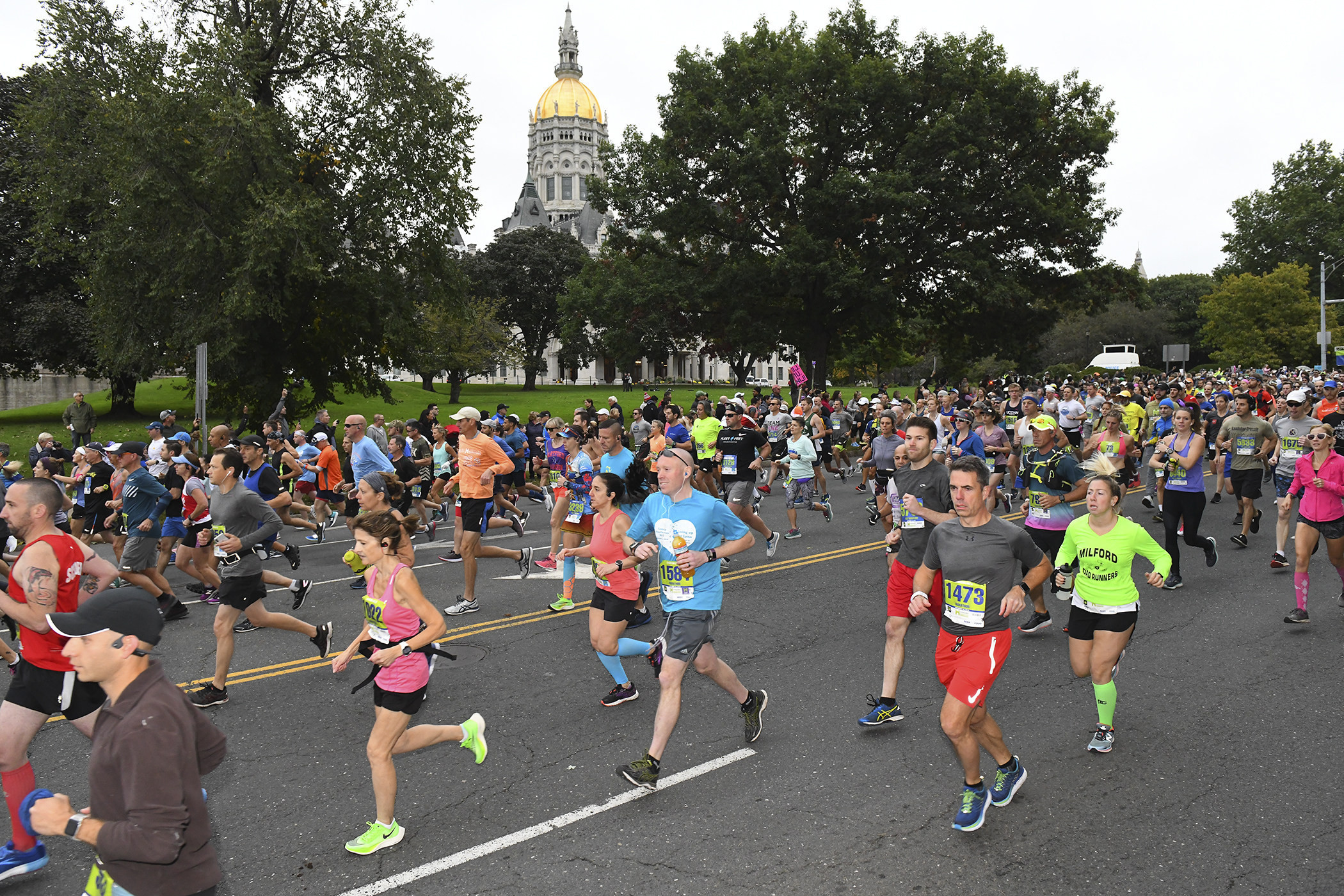
For a reduced entry fee of $25, runners and walkers can participate in all the races which include the 5K, 10K, half marathon, and marathon. They'll get a long-sleeve t-shirt and a finisher medal. For an additional $10, participants can partake in a challenge which includes another medal. Those who take part will need to upload their times online.
"They will still reach that finish line. It might not be as socially fun as marathons and half marathons in the past, but it will still be just as sweet and rewarding," said Fleet Feet Hartford owner Stephanie Blozy.
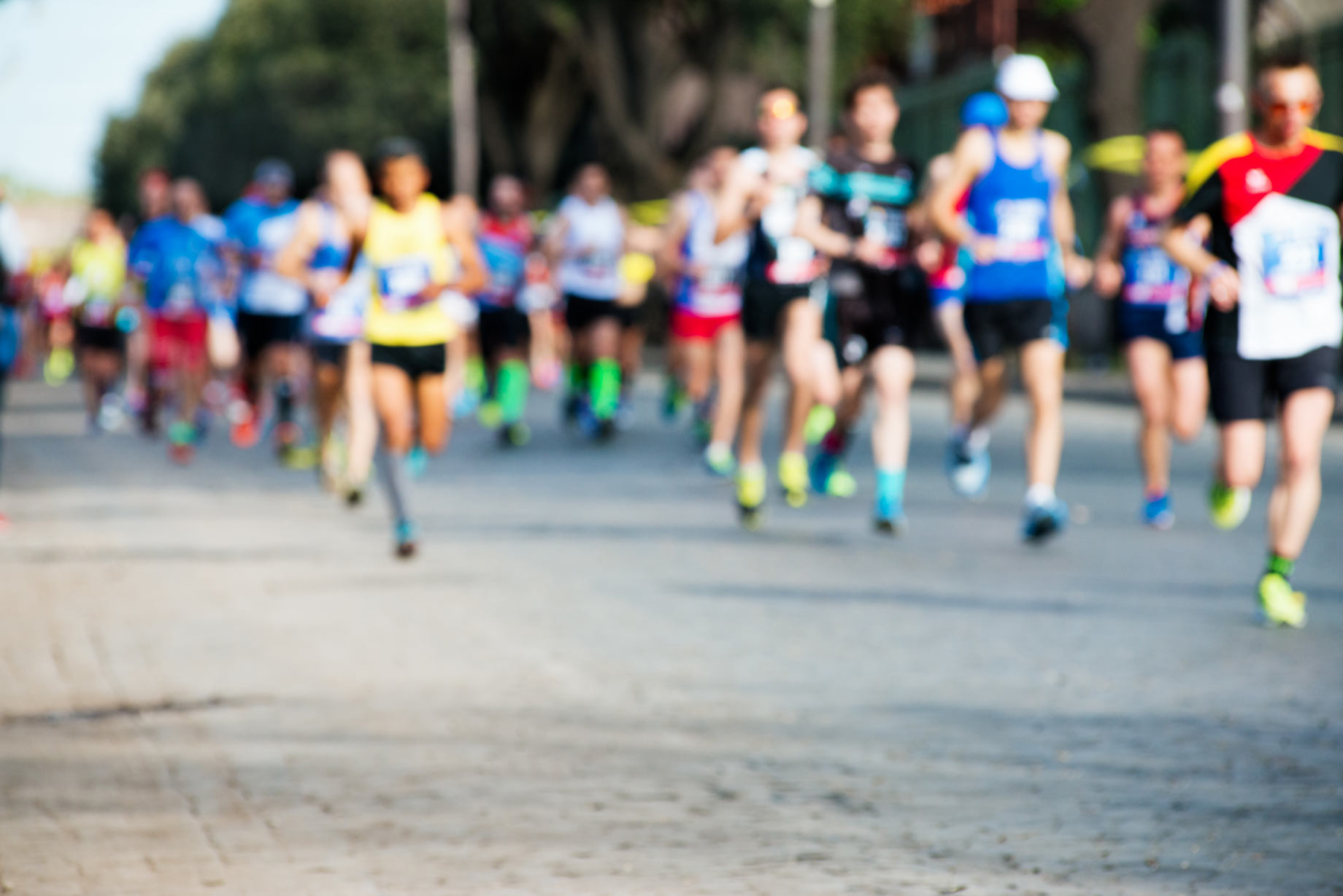
Fleet Feet Hartford is a Hartford Marathon sponsor.
"The virtuality of the Hartford Marathon weekend is definitely a heartbreaking decision. I know it wasn't an easy one, but I think it was the right one," said Blozy.
She says they're looking forward to supporting runners as they train and that she loves that every penny of the entry fee will go to local charities.
Participants will receive training support materials, enhanced event experiences that are digital, which include race bibs, finisher certificates and a custom race day playlist, race officials said. Participants can also submit verified results after their race that can appear online.
The Hartford Marathon Foundation is also hoping runners will consider taking the rest of the money they would have spent on a much higher entry fee and spend it at local restaurants, local businesses, or donate it to charity.
"We think this year's race is going to offer a very special experience, that you're really feeling you're part of something that's much more important than just a typical road race," said Shluger.
While it's not the racing experience runners may have hoped for this year, organizers say they'll be back in 2021, and until then, this is a way to come together to do a lot of good.
"We can't get through this time alone. We have to do it together, and this is one way that we can do it," said Blozy.
(07/08/2020) ⚡AMPEversource Hartford Marathon
Be part of the biggest race day in Connecticut. Where runners, families, charities and volunteers come together in an inspiring display of community spirit. Enjoy a top-notch experience, from expo to post-race party: A plethora of resources and expertise. High-energy crowds. Pomp and circumstance filling the streets. Thorough course amenities, including fuel, pacers, security and medical services. Festive celebration with...
more...The registration for 2020 virtual Boston Marathon begins today
Registration for a virtual edition of the Boston Marathon begins Tuesday after the in-person race was delayed and then canceled because of the coronavirus pandemic.
The 124th edition of the annual race was originally scheduled for April 20 and in March was rescheduled for Sept. 14. Then, in May, Boston Mayor Marty Walsh and Boston Athletic Association officials announced the traditional race would not be held.
“The traditional one-day running of the 124th Boston Marathon is not feasible this year for public health reasons. There is no way to hold this unusual race format without bringing large numbers of people into close proximity. While our goal and hope was to make progress and contain the virus and recover our economy, this kind of event would not be responsible or realistic on Sept. 14 or anytime this year,” Walsh said at the time.
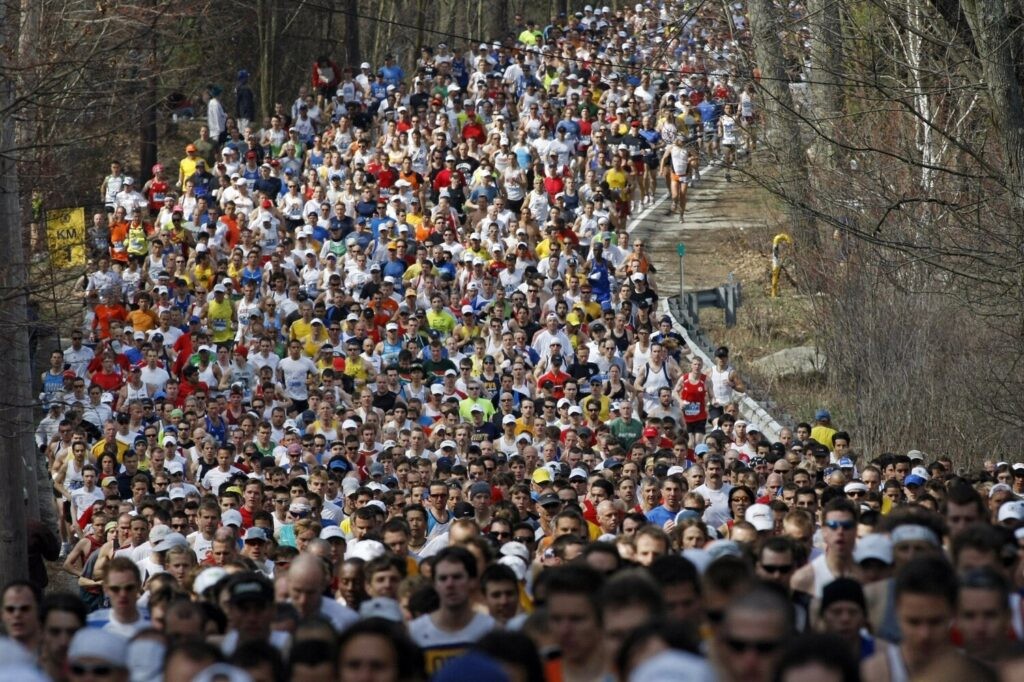
“Our top priority continues to be safeguarding the health of the community, as well as our staff, participants, volunteers, spectators, and supporters,” said Tom Grilk, CEO of the BAA.
In lieu of the usual race, BAA officials said refunds will be offered to registered participants and a "virtual" edition of the race will be organized. The virtual race can be run by participants any time between Sept. 7 and 14 and participants who provide proof that they completed 26.2 miles within six hours during that period will receive a medal, runner's bib and shirt.
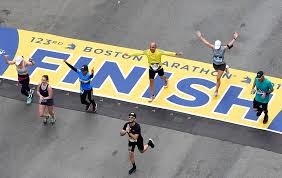
Registration emails for the virtual event are being sent starting Tuesday morning to runners who were previously registered for the 2020 race.
The race generally draws more than 30,000 runners from all over the world, ranging from decorated professionals and Olympians to amateur runners who take to the storied 26.2-mile course through eight communities to raise money and awareness for charities.
Walsh estimated the marathon would normally bring an influx of $200 million to the economy.
(07/07/2020) ⚡AMPBoston Marathon
Among the nation’s oldest athletic clubs, the B.A.A. was established in 1887, and, in 1896, more than half of the U.S. Olympic Team at the first modern games was composed of B.A.A. club members. The Olympic Games provided the inspiration for the first Boston Marathon, which culminated the B.A.A. Games on April 19, 1897. John J. McDermott emerged from a...
more...The Tokyo 2020 organizing committee has welcomed the UN General Assembly's decision to move the previously agreed Olympic truce to 2021
Tokyo 2020 President Yoshiro Mori said in a statement, "We welcome the United Nations General Assembly's approval of the change in the observation period of the Olympic truce to next summer."
"We continue to place hope in the power of sport to bring people around the world together and help achieve peace," the former Japanese Prime Minister said. "Inspired by the adoption of this updated resolution, we will make all the more effort to utilise the priceless opportunity presented by the Tokyo 2020 Games to help build a peaceful and better world through sports."
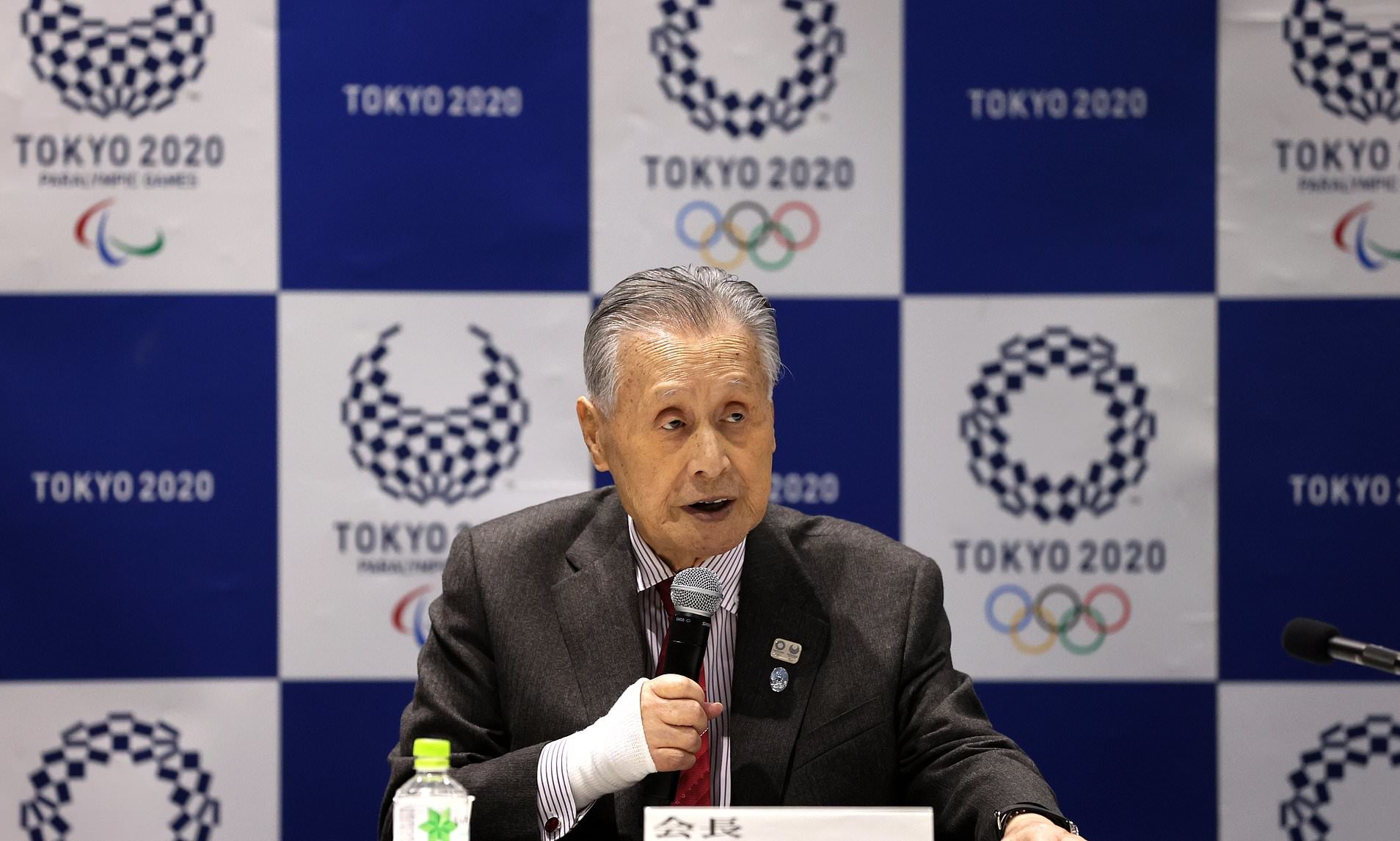
The Olympic truce dates back to the ancient Olympic Games around 2,800 years ago, when a truce was announced to ensure that athletes and spectators could travel safely to and from the Games. The International Olympic Committee (IOC) renewed this tradition in 1992 to protect the interests of athletes and sport, and resolve global conflicts.
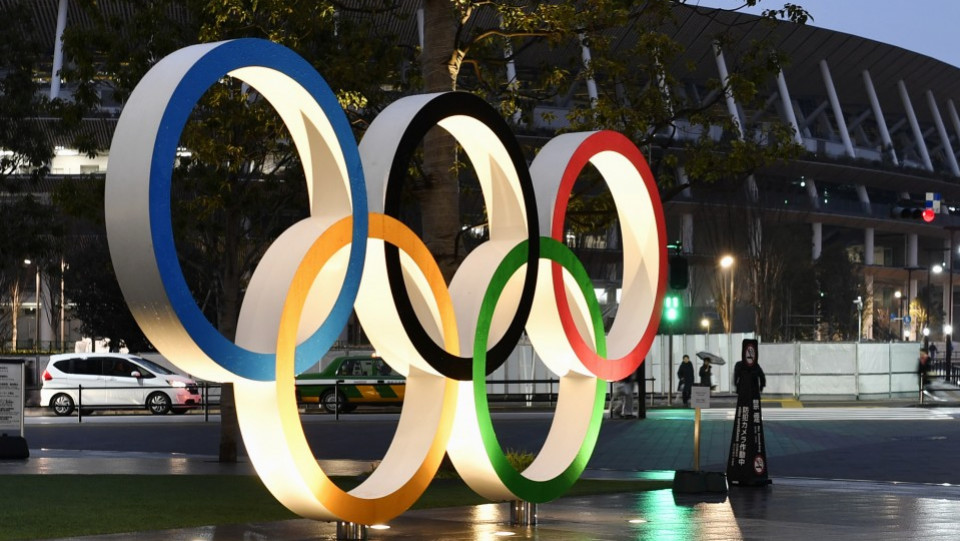
The 2020 Olympic Games have been pushed back by one year to July 23 to August 8, 2021 because of the COVID-19 pandemic, with the Paralympic Games set to follow from August 24 to September 5.
IOC president Thomas Bach was also pleased with the shift, calling it "a strong sign of confidence that these Olympic Games will be the light at the end of the dark tunnel humankind is currently going through".
"We are very grateful to all governments for this expression of trust in the Olympic Games," Bach added.
(07/07/2020) ⚡AMPTokyo 2020 Olympic Games
Fifty-six years after having organized the Olympic Games, the Japanese capital will be hosting a Summer edition for the second time, originally scheduled from July 24 to August 9, 2020, the games were postponed due to coronavirus outbreak, the postponed Tokyo Olympics will be held from July 23 to August 8 in 2021, according to the International Olympic Committee decision. ...
more...Copenhagen Half marathon has been cancelled due to the coronavirus
With less than three months to go, organizers can confirm that it will not be possible for thousands of runners from more than 110 countries to gather in Copenhagen for the annual Copenhagen Half Marathon this September.
“Last year was an amazing year for everyone who took part in the race as an official, spectator or as a participant. We know this cancellation will disappoint many who looked forward to the event, but we don’t believe it will be possible or responsible to hold a race the size of Copenhagen Half Marathon in the heart of Copenhagen in 2020,” says Dorte Vibjerg, CEO of the organizing running Club Sparta.
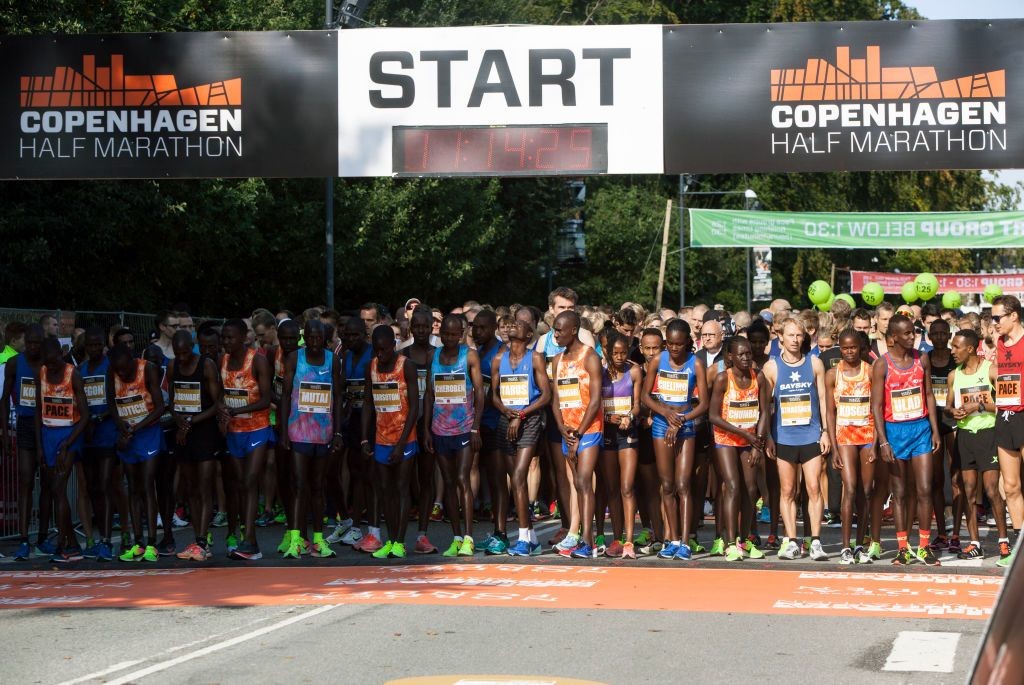
The cancellation stands in sharp contrast to a record breaking event in 2019, which saw records in terms of elite athlete performance and participant numbers. Geoffrey Kamworor ran like the wind and smashed the world record, winning in 58 minutes and one second and the mass race attracted a sell-out field of 25,000 runners for the first time. Following on from these successes, the 2020 event was set to be even better.
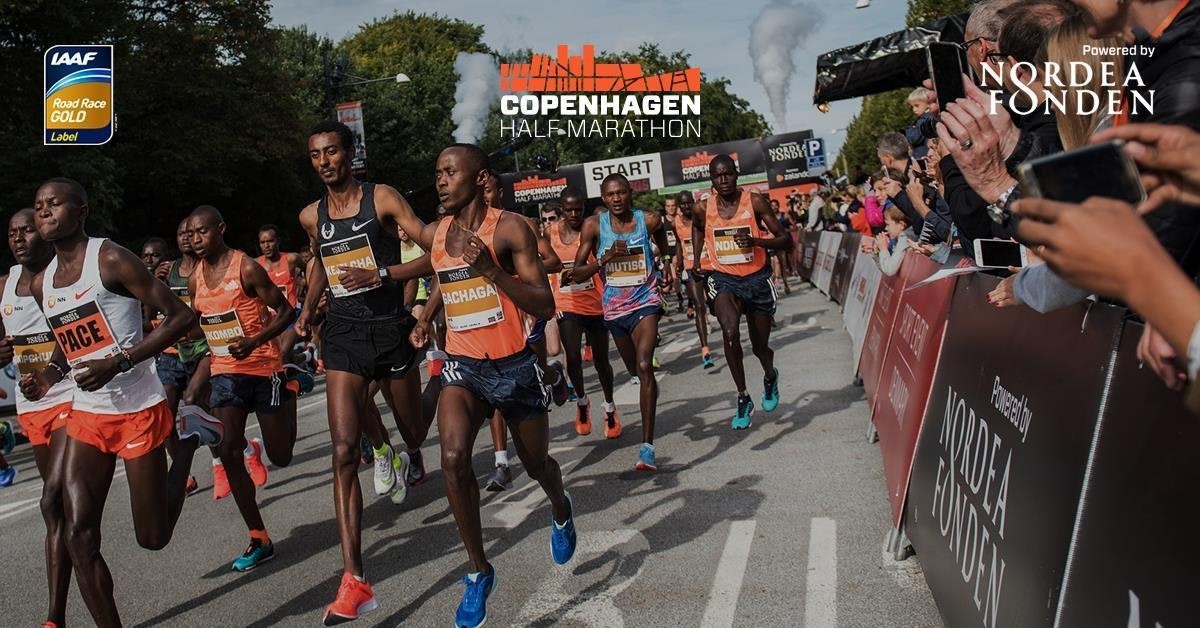
Dorte Vibjerg added; “After last year with a world record in the streets of Copenhagen the Copenhagen Half Marathon really has earned the attention of the foreign runners and the international community. This year 42 percent of the registered runners are foreigners.
This means, they will need a clarification in relation to flight tickets and accommodation so we have decided to provide clarity now by cancelling the event. There is nothing more we want than to welcome all the runners and tourists to Copenhagen, but we have come to realize that it isn’t possible this year.”
All participants who were registered will be able to transfer their registration to next year’s race which will take place on September 19 2021, or get a full refund of the entry fee paid.
“We sincerely hope that our runners will want to support us once this is all over and return to run in Copenhagen next year, where we will once again host the Copenhagen Half Marathon. By transferring their entries to 2021; runners will be helping to protect the future of the event,” CEO Dorte Vibjerg concludes.
(07/07/2020) ⚡AMPCopenhagen Half Marathon
The Copenhagen Half Marathon was the first road race in Scandinavia and is one of the fastest half marathons in the world. The Copenhagen Half Marathon has been awarded with the International Association of Athletics Federation's (IAAF) most distinguished recognition - the IAAF Road Race Gold Label. Copenhagen Half Marathon was awarded the IAAF Road Race Bronze Label in January...
more...The 2020 Vermont City Marathon now postponed until may 30 2021 due to the pandemic
The Vermont City Marathon become the latest sporting event impacted by the COVID-19 pandemic, as its postponement was announced Monday.
The 32nd annual race, originally slated for October 25, will now take place on May 30, 2021.
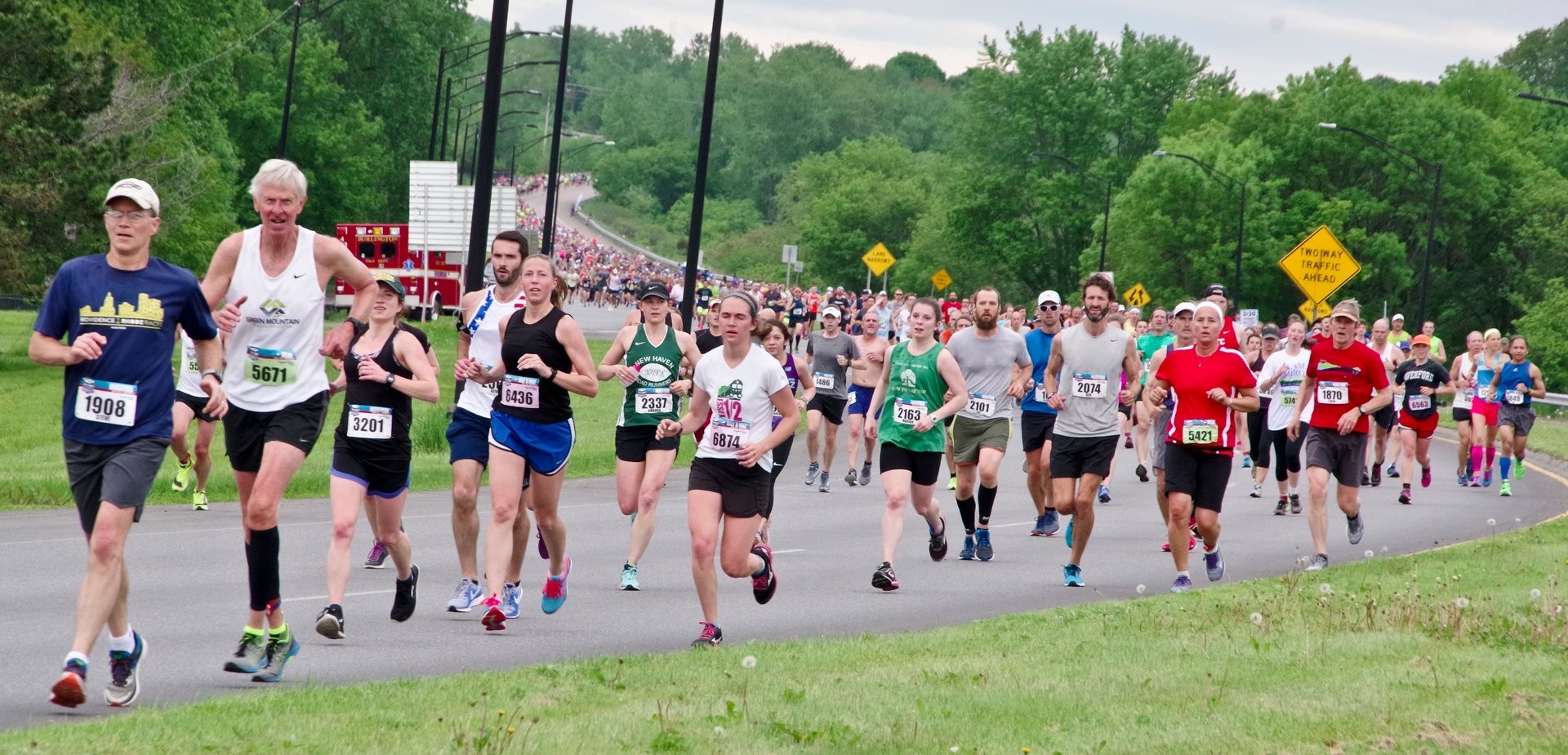
“Despite our highest hopes, hard work and careful deliberation, the RunVermont team is disappointed to announce that we will be not be able to run the People’s United Bank Vermont City Marathon & Relay on October 25, 2020,” an update on the RunVermont website read. “After consultations with state officials, it’s clear that a large public event with several thousand people will not be possible, even in late October.”
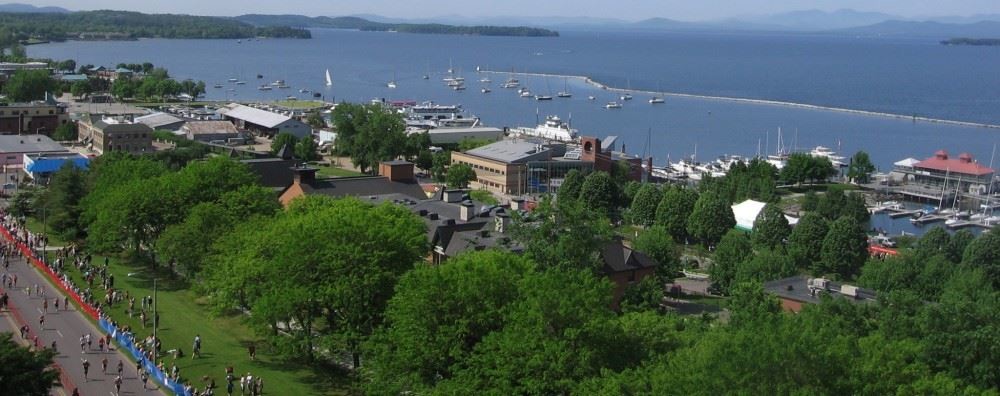
The Timberlane Dental Group Mini Marathon will occur on May 29, 2021.
RunVermont has amended their deferral policies, given the unprecedented situation. Interested parties can go to the RunVermont site for detailed deferral options.
(07/07/2020) ⚡AMPPeople's United Bank Vermont City Marathon
The race is held annually on the Sunday of Memorial Day weekend normally. Runners in the Vermont City Marathon can compete in the full marathon, on a two-person relay team running half marathons, or on a three-to-five person relay team running legs ranging from 3.1 to 6.2 miles. The Vermont City Marathon is a Boston Marathon Qualifying Race. We automatically...
more...

